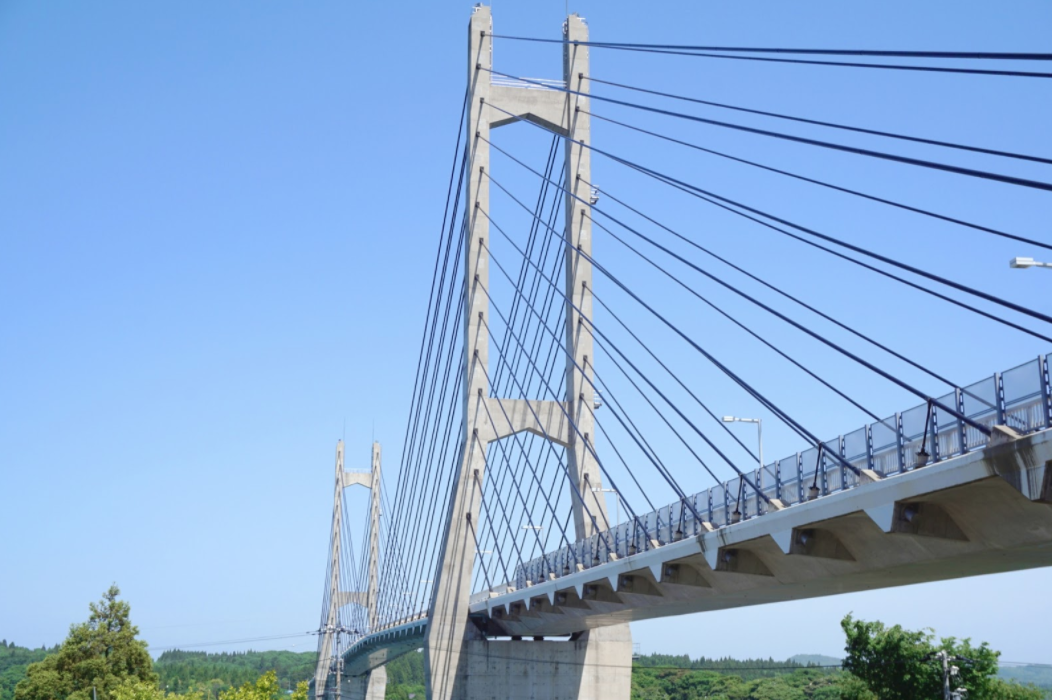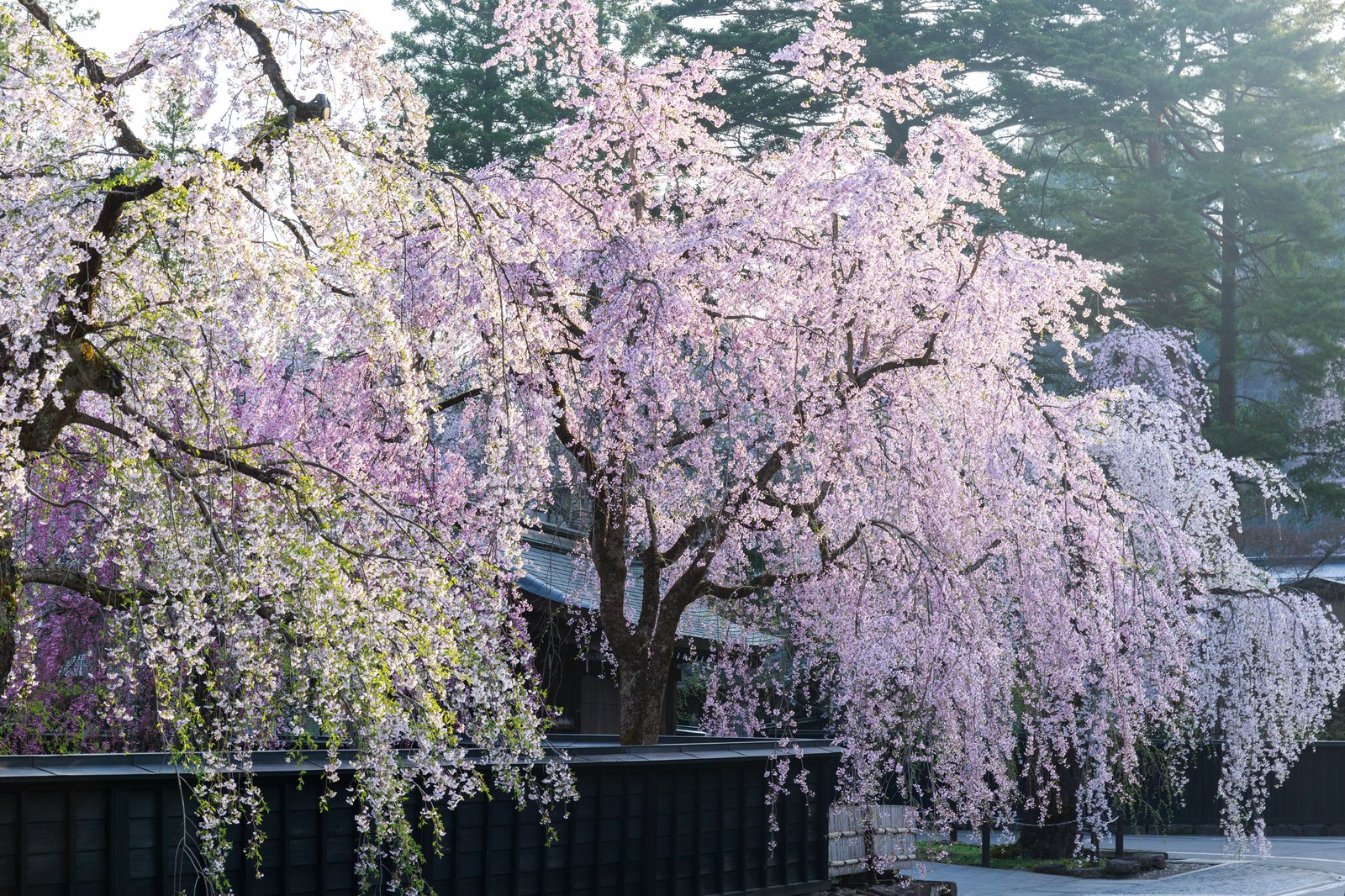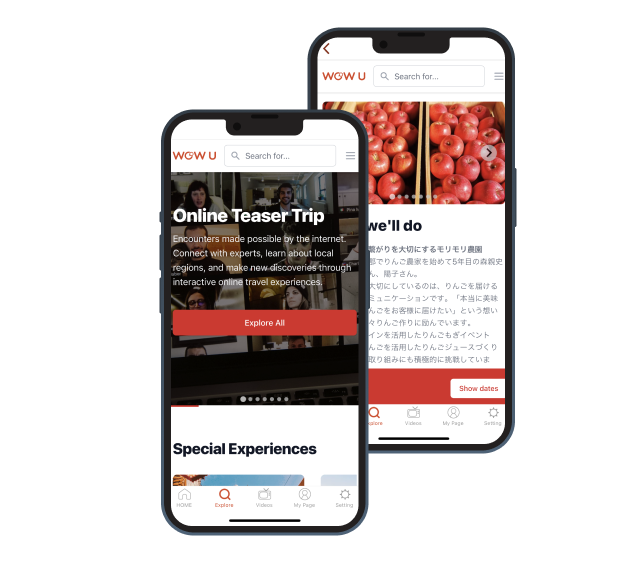An Unforgettable Road Trip Riding Through Japan in a Rental Car
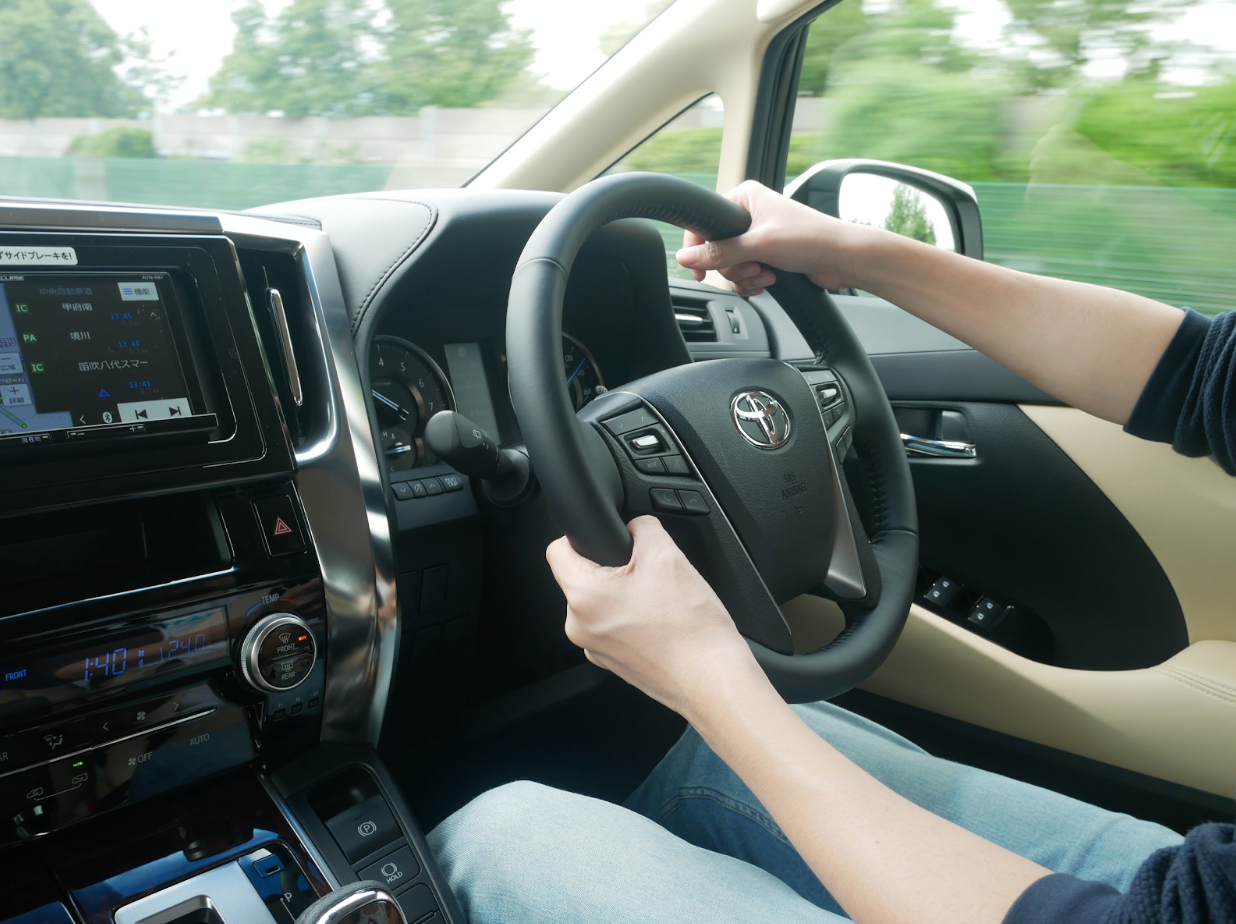
What We Learned from Our Road Trip

The sight and feel of running through new landscapes are one that has never experienced before. Imagine a freeway cutting through the buildings of a metropolis. The service areas on the highway, lining up as tiny tourist attractions. Riding a car through Japan presented us with lots of new scenarios. But what is it that makes us feel differently, while the act of driving does not differ from what is in our everyday life?
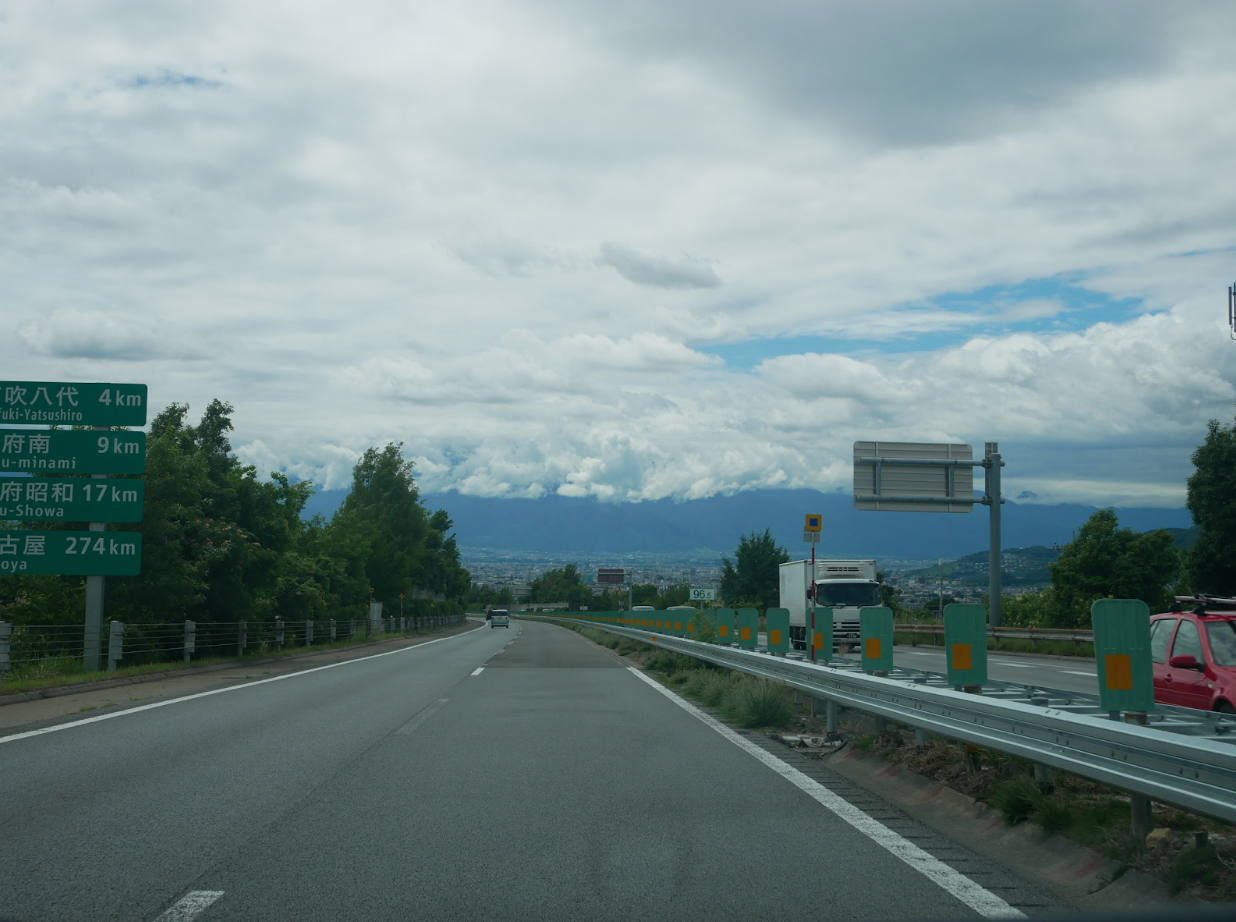
This summer we rented a car and headed for a short trip from Narita (in Chiba Prefecture) to the Nagano Prefecture. A three and a half hour journey by bullet train that can be completed in a little more than four hours by car. Even though getting there by car takes a bit longer, a road trip presents many discoveries and surprises that go beyond what one can find on guidebooks.
Traveling in a rental car will broaden your range of experiences and will let you see new things. I am confident that this is a way you can get to know and experience Japan on a deeper level.
Surprised by the High Standards of the Japanese Rent-a-car Industry
Our trip starts at Terminal 1 at Narita Airport. Japan has not yet entered its rainy season, but we are welcomed by a slightly rainy day upon our arrival. Even though I am a bit disappointed by the weather, we get off the plane and head towards the exit.
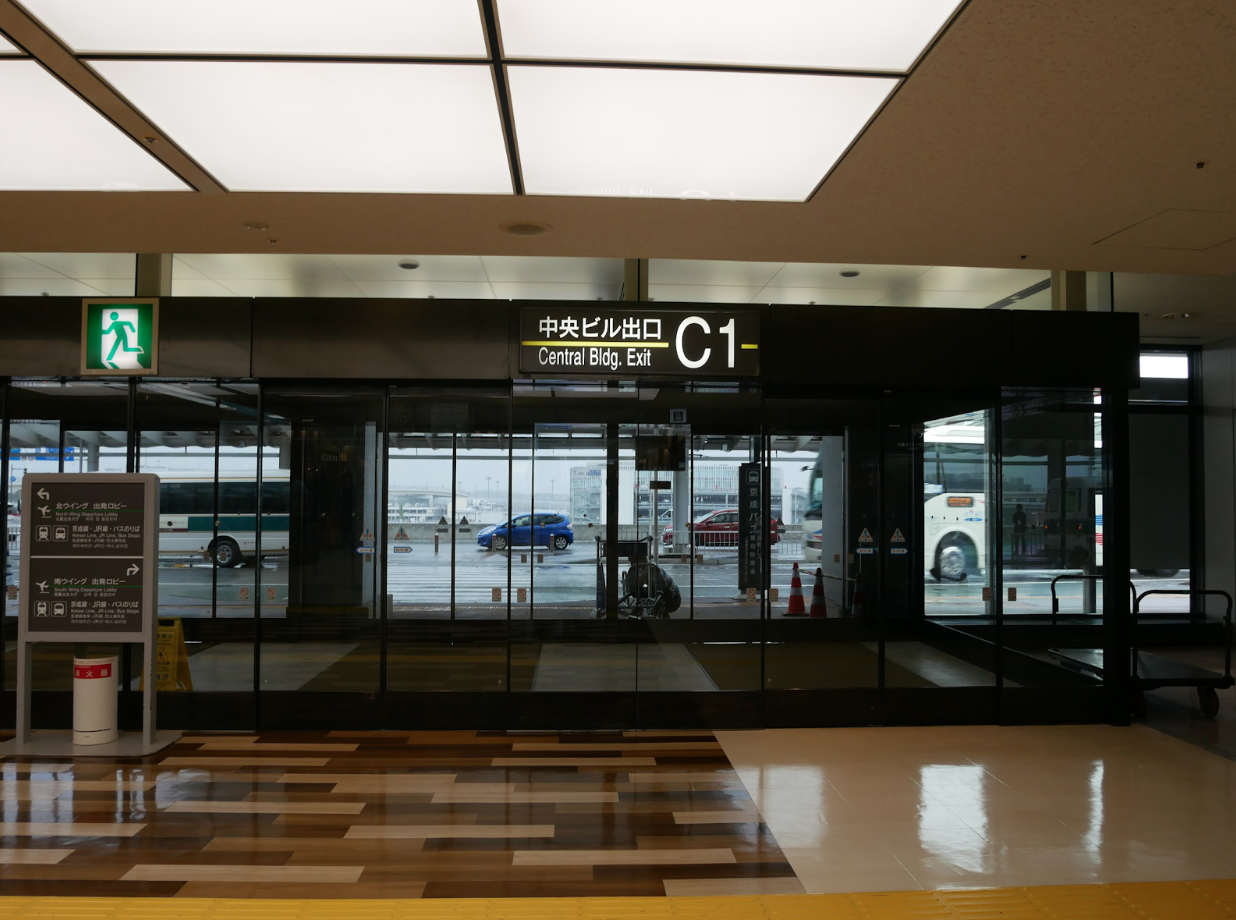
After taking the C1 exit on the 4th floor, we cross the road in front of us and wait for the rental car pick-up bus. Tourist buses and hotel shuttles are lining up on the transfer-only driveway, so I do my best not to lose my concentration to avoid missing my pick up. About 15 minutes later, I manage to spot a red and blue bus with the “AVIS Budget Rental Car” logo on it. That is the company we have chosen for our trip. Please keep in mind that the airport transfer service must be booked in advance. This can be done by contacting the store or requesting it at the JTB counter at the airport.
Reserving your Budget Rental Car at Narita Airport
As we get on the shuttle bus we discover that we are not alone, as another customer has already boarded the bus, so we head to the AVIS store together. It takes about ten minutes to get there from the airport.
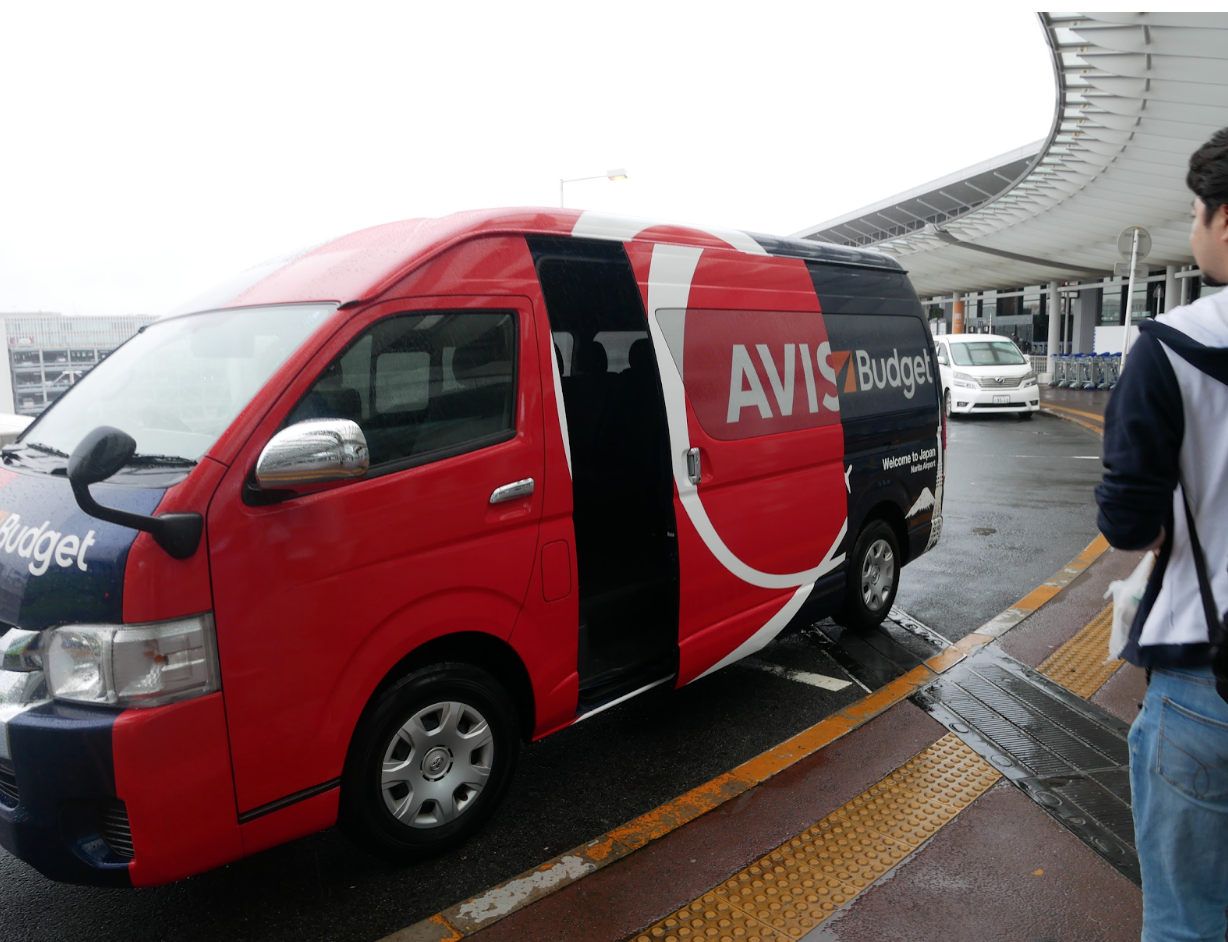
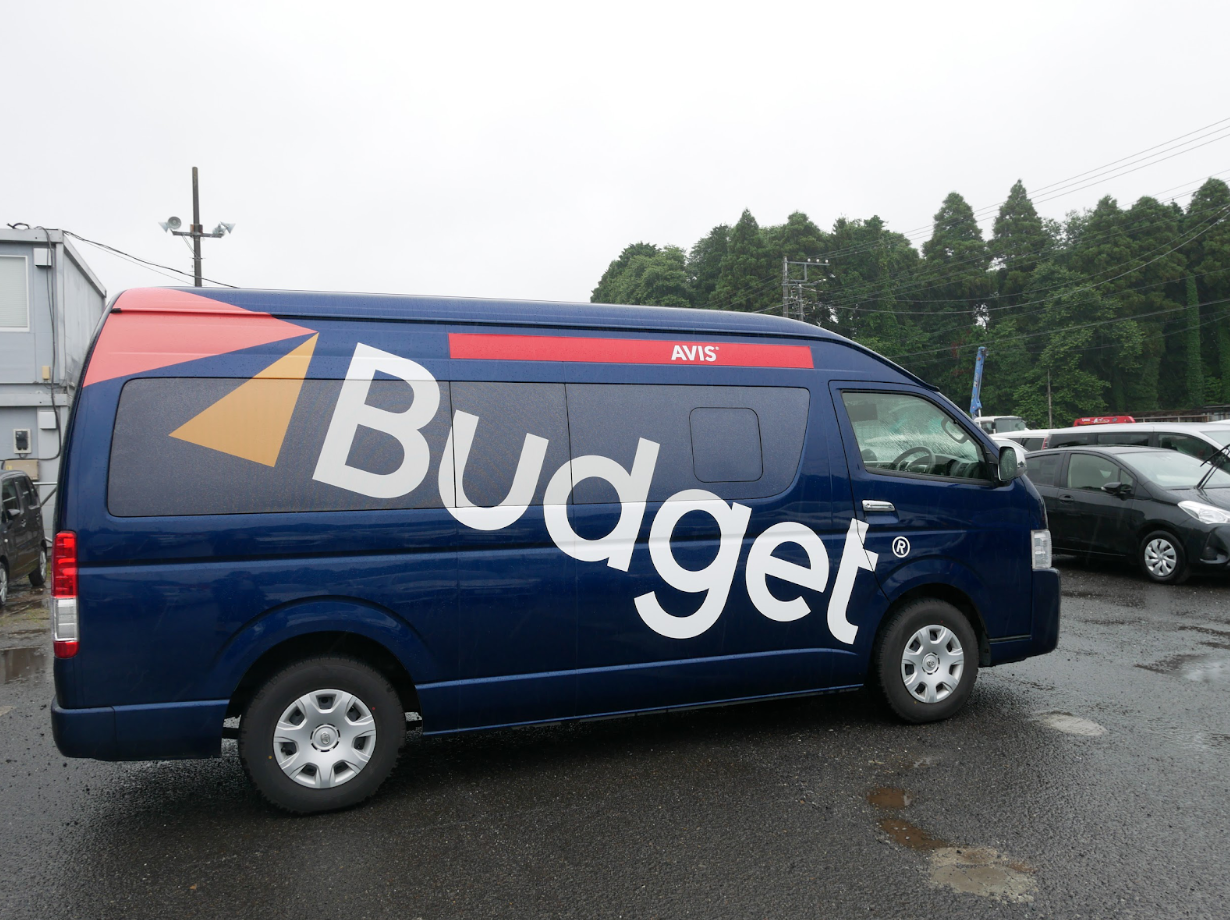
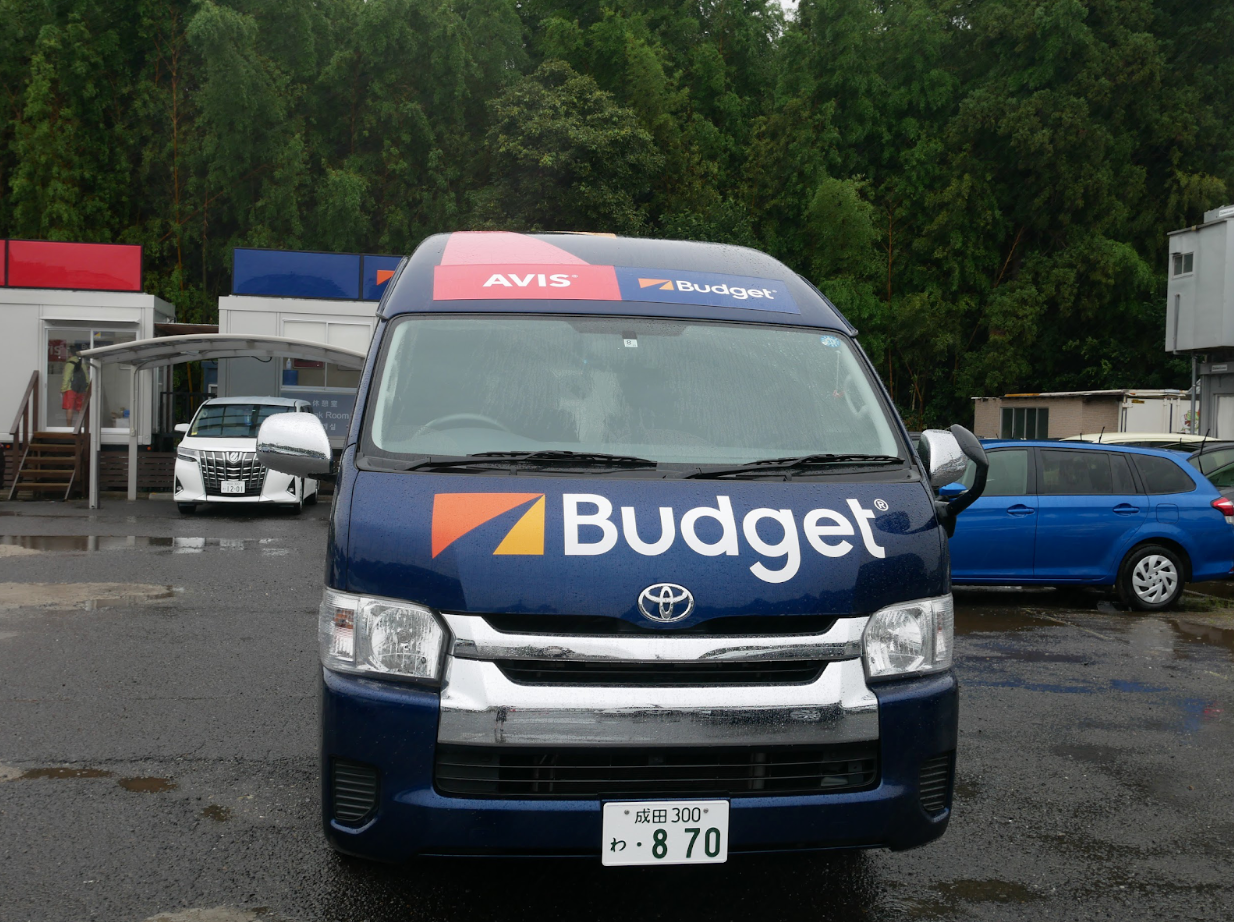
By the time we enter the office, I notice a message written in English on the wall. The service counter sports a number of stickers making clear that the staff can communicate with customers in English, Chinese, and Korean. We ask if many foreign customers use the company's services, and the person in charge tells us that they have many international customers. It sounds like there are customers who choose to drive with studless tires in winter, too!
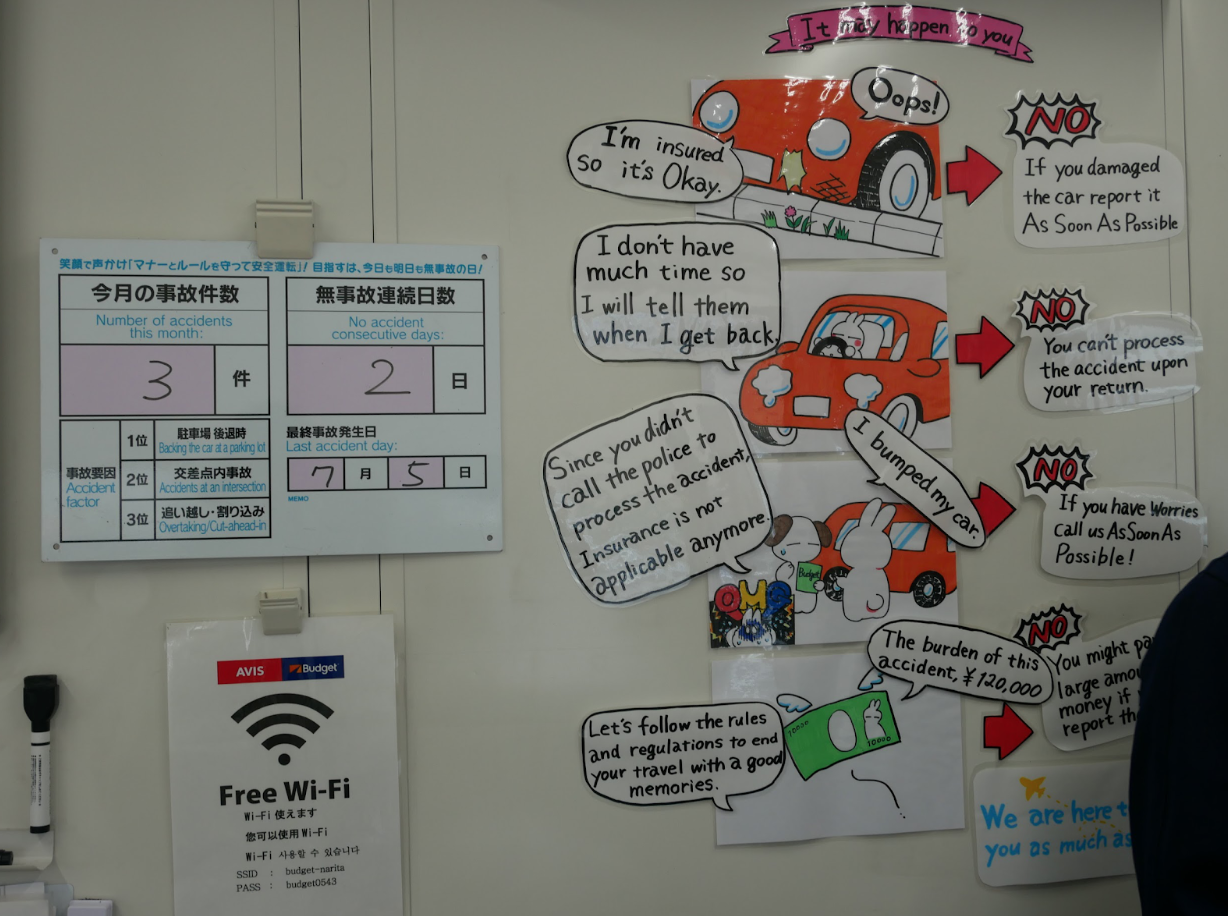
With our International driving permit, foreign driving permit, and the Japanese translation for our license ready at hand, we just have to wait for the staff to take care of the last details and prepare our car. The presence of trilingual staff members and the option of paying by credit card made the whole process very convenient.
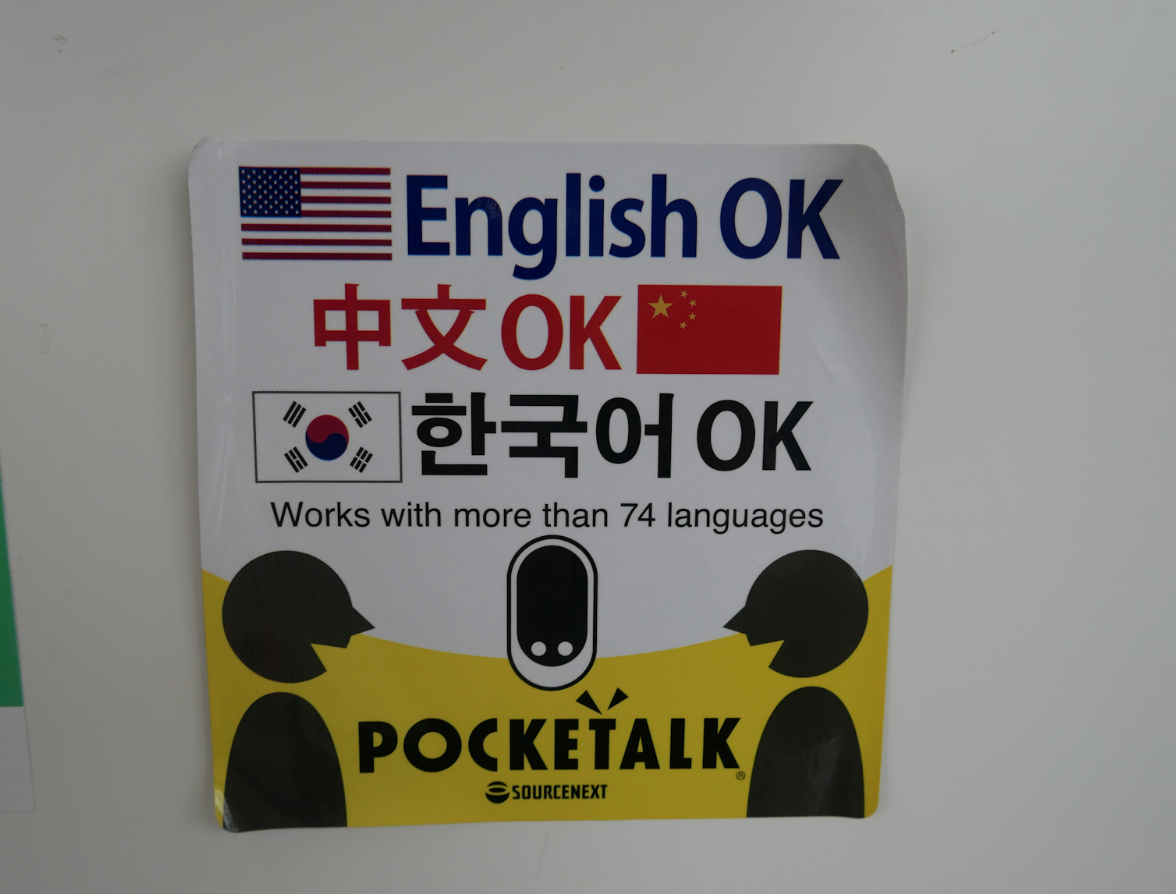
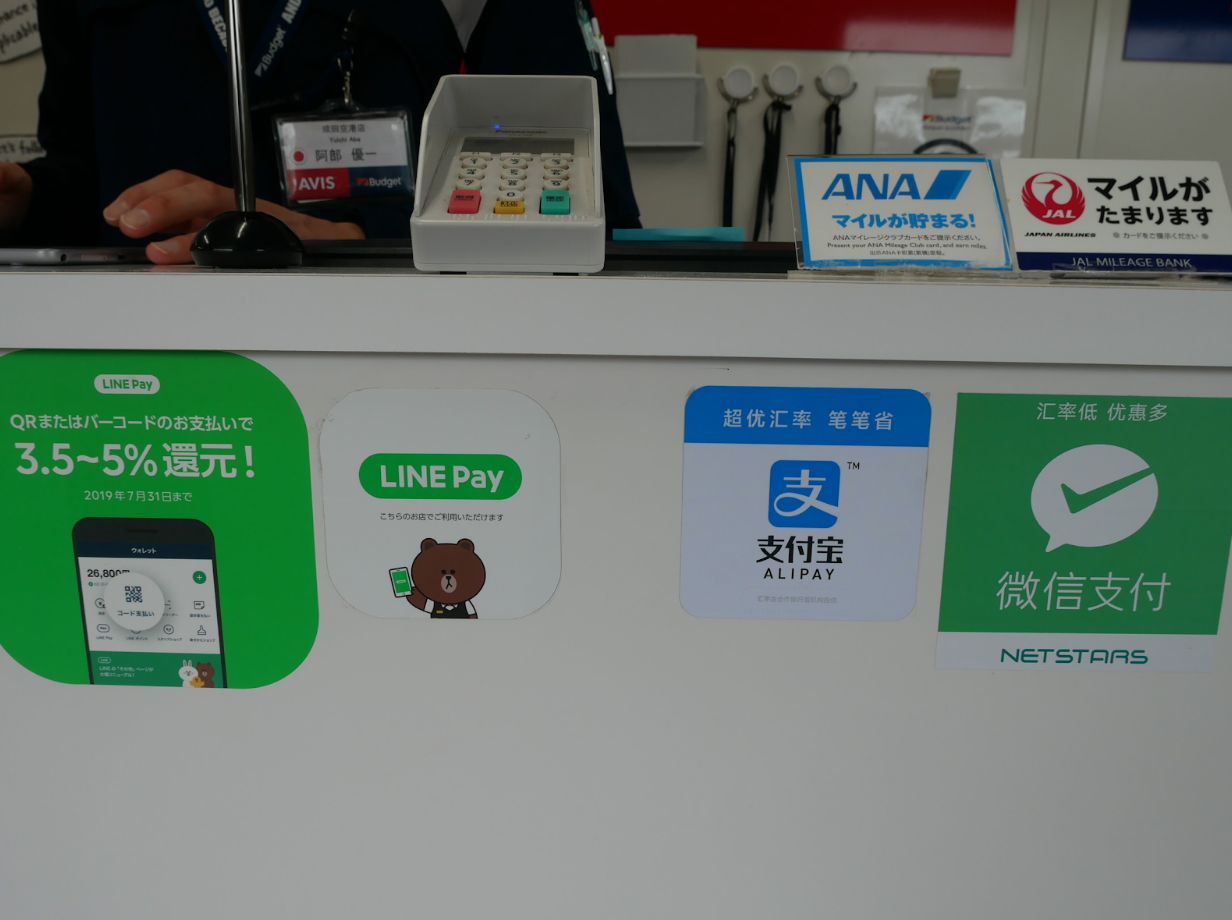
The clerk takes out their tablet and starts introducing us to the services they offer while we are waiting at the desk
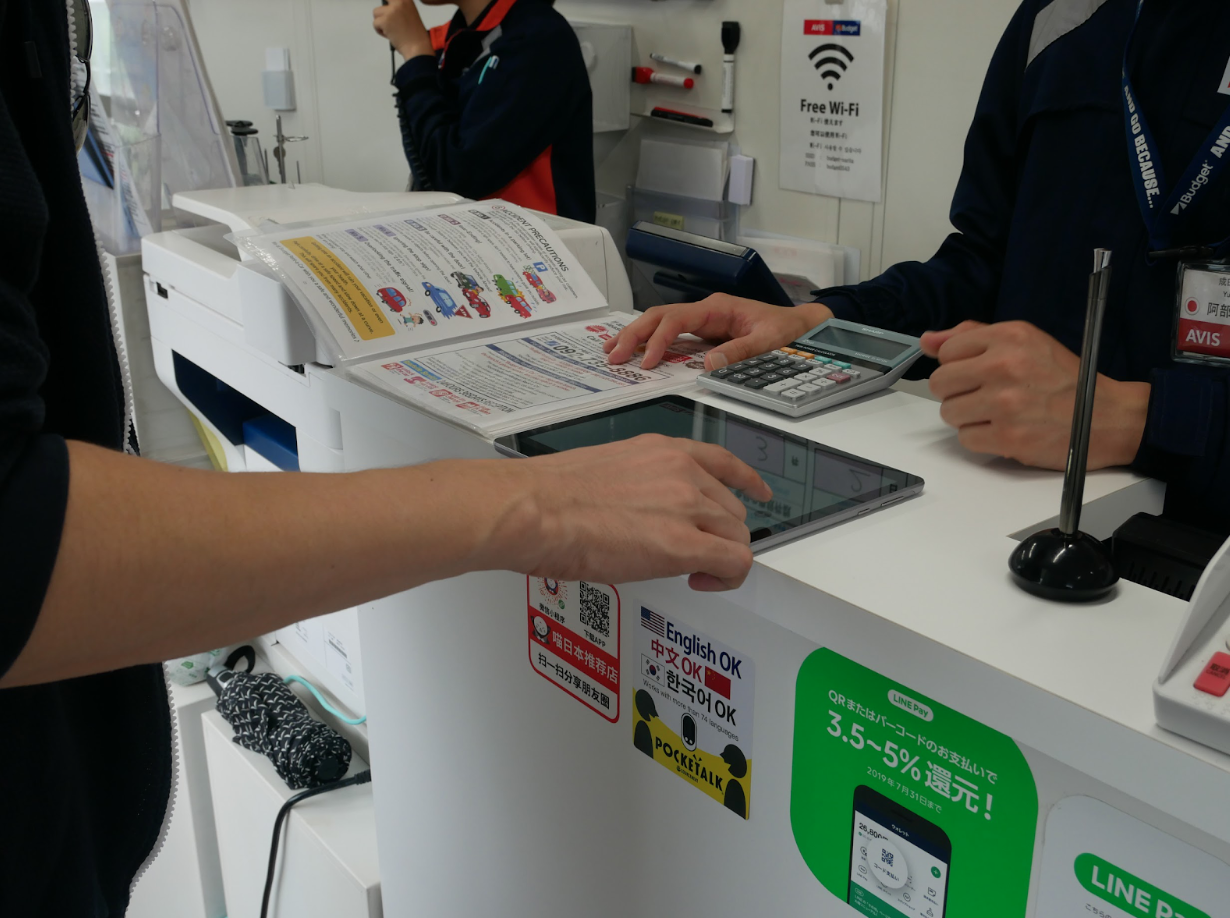
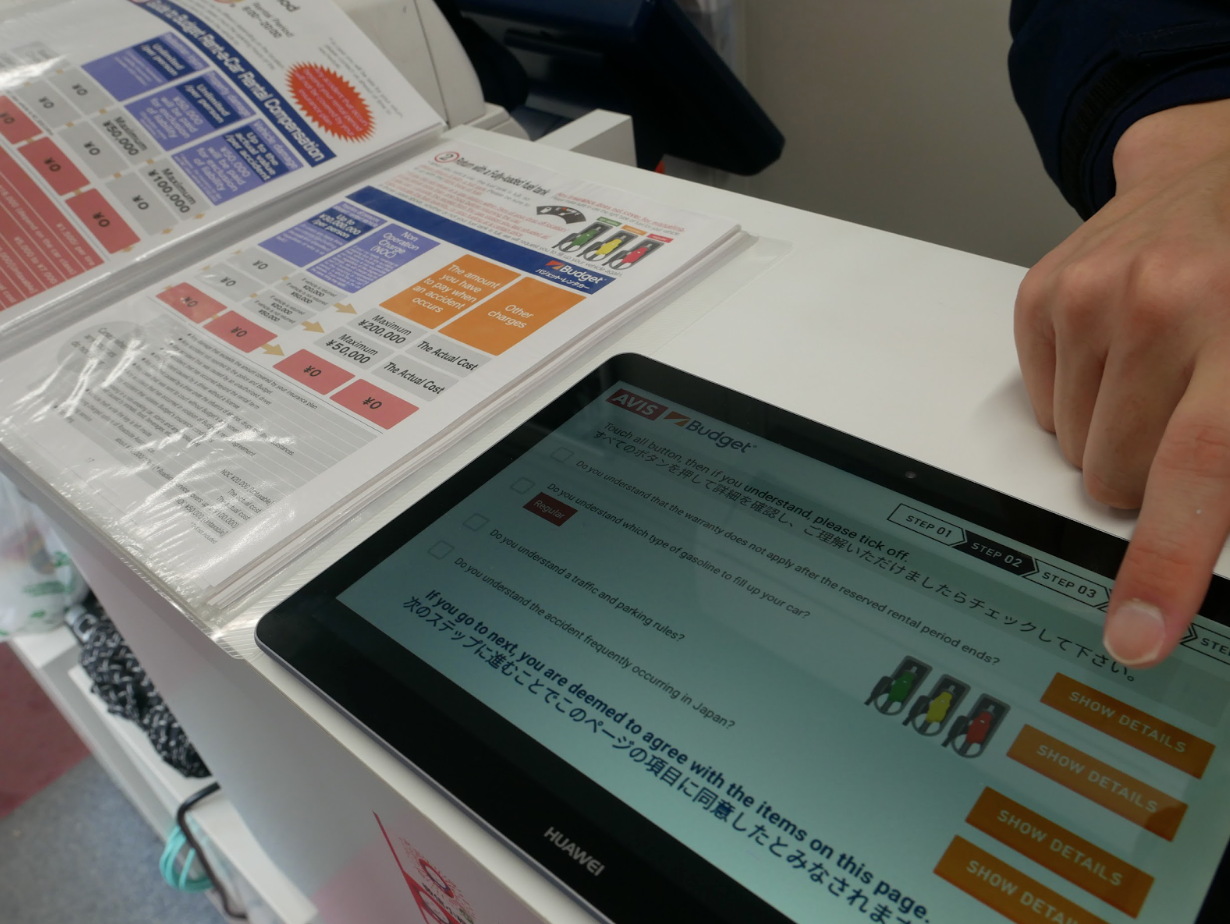
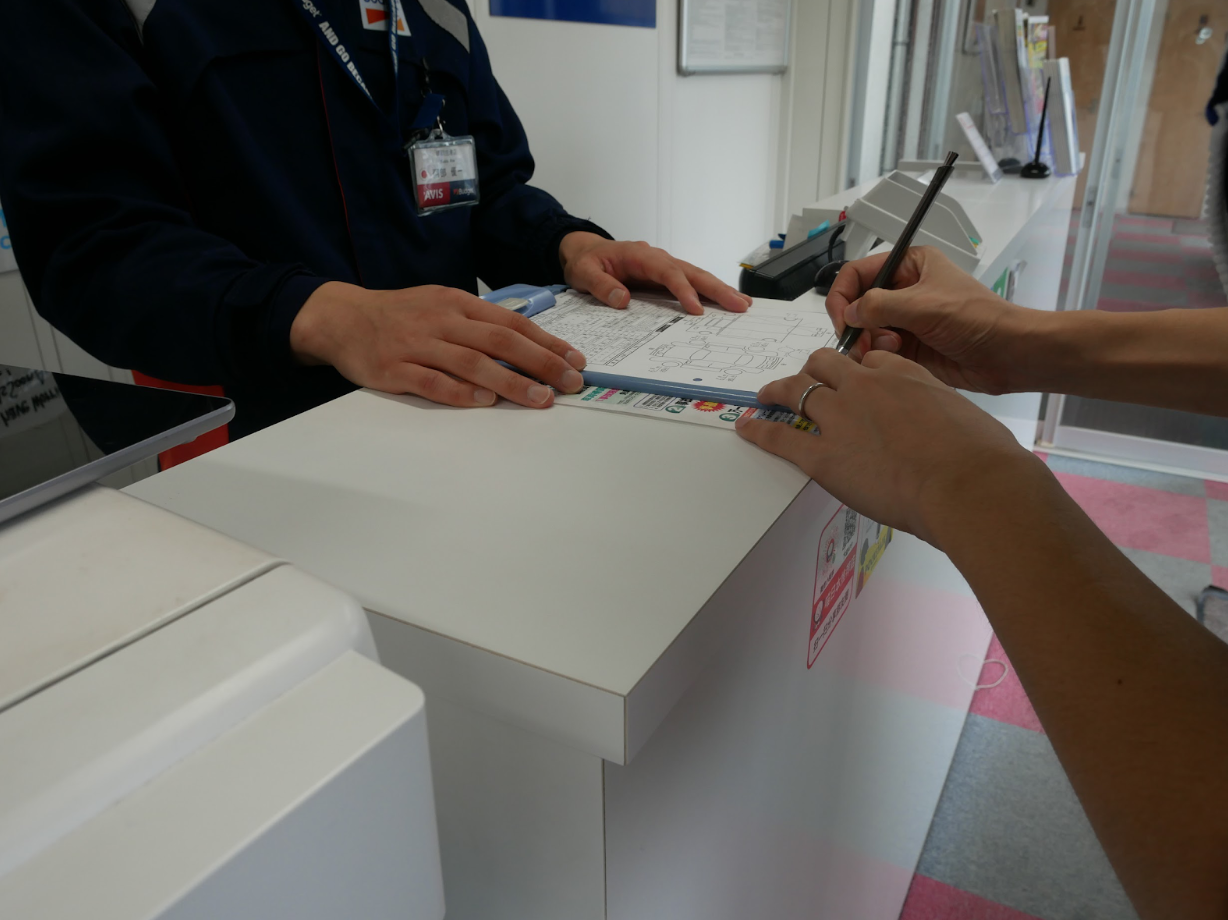
After getting the information they need, such as name and passport info, the staff then proceeds to explain the rental terms, return methods, and overtime charges should we fail to return the vehicle within the designated time limit.
You can find a list of the things you need by the time you rent or return a vehicle here
We are planning to take the highway to reach our destination, so we need an ETC card. If you don't already have one, you can borrow it from the store. However, since the available amount of cards is limited, we recommend booking in advance if you are planning on taking the highway.
Here is a guide about the Japanese Electronic toll collection system (ETC)
Once the staff is done explaining the terms of service, we get to learn about the Japanese traffic rules and regulations through a video displayed on the store's tablet. This service is an option limited to Japan. I was a bit worried because I cannot read the language and did not know much about Japanese traffic rules and regulations (especially not being able to read the signs on the road). However, this video tutorial made me feel much more comfortable about the idea of driving in Japan.
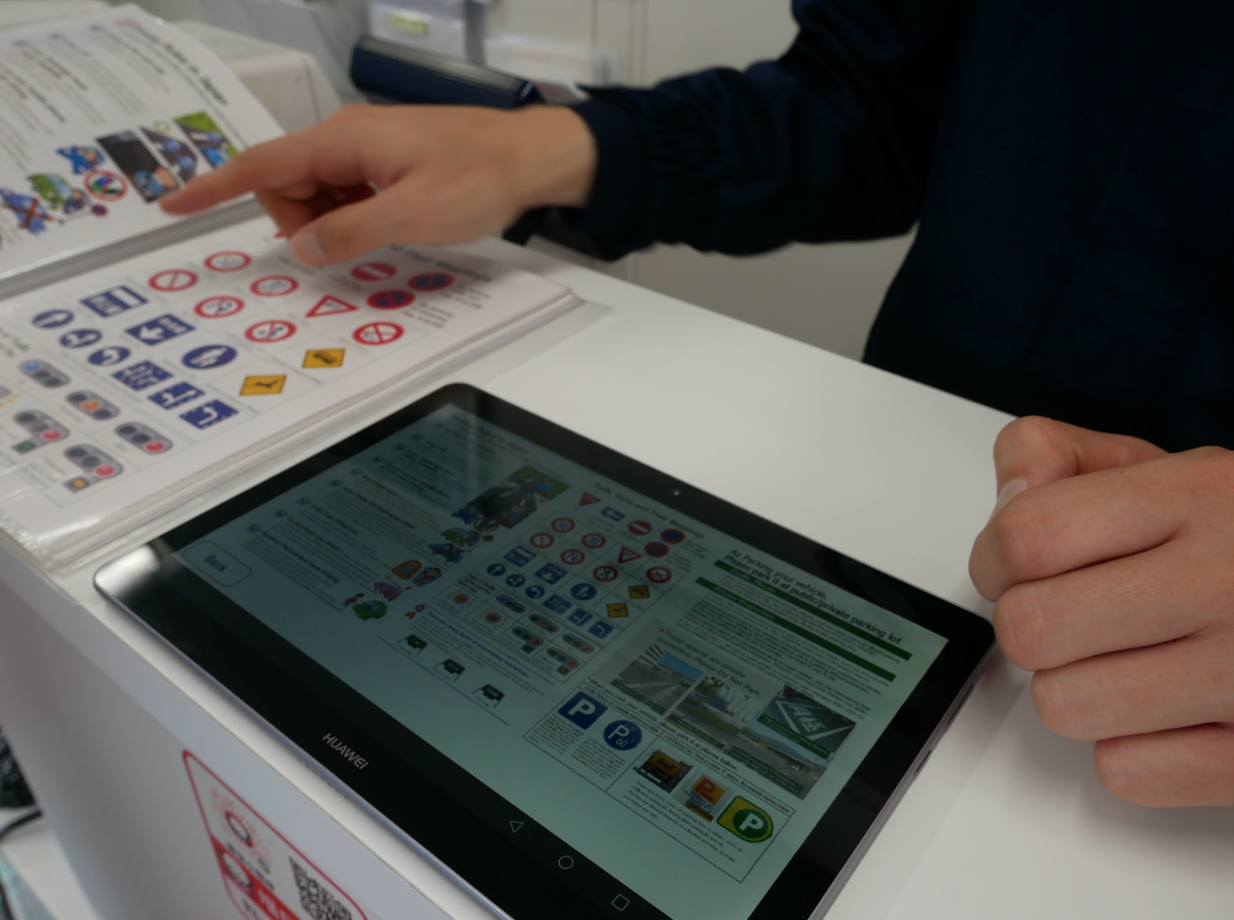
The clerk then goes on explaining to us how, in case of an accident, customers are provided with a road assistant to help them. Many people would panic if they had an accident abroad, so the idea of having a road assistant can be very reassuring to foreign drivers.
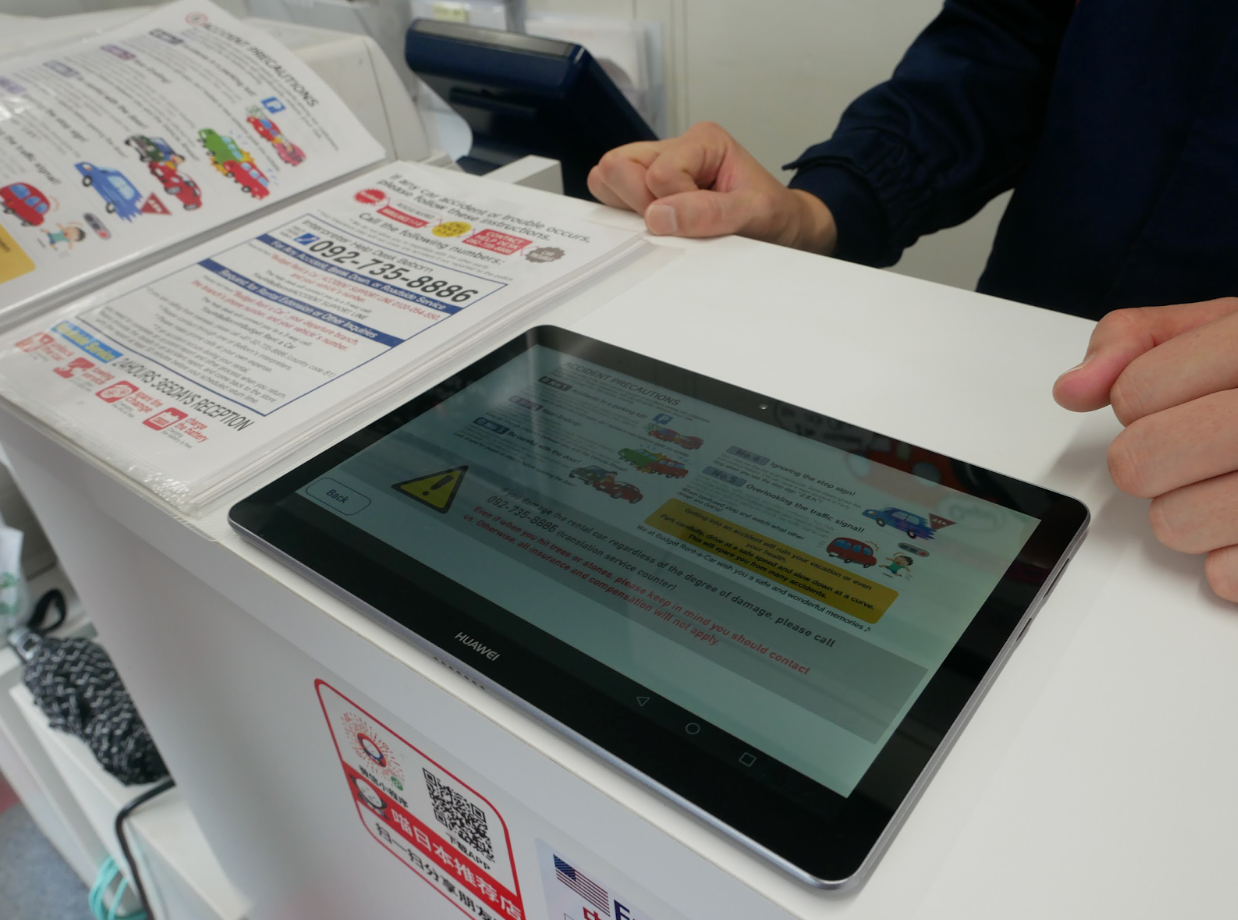
Here is a video.
With the explanation procedures behind us, it is now time to leave. The clerk invites us to follow him outside and we head towards our rental car.
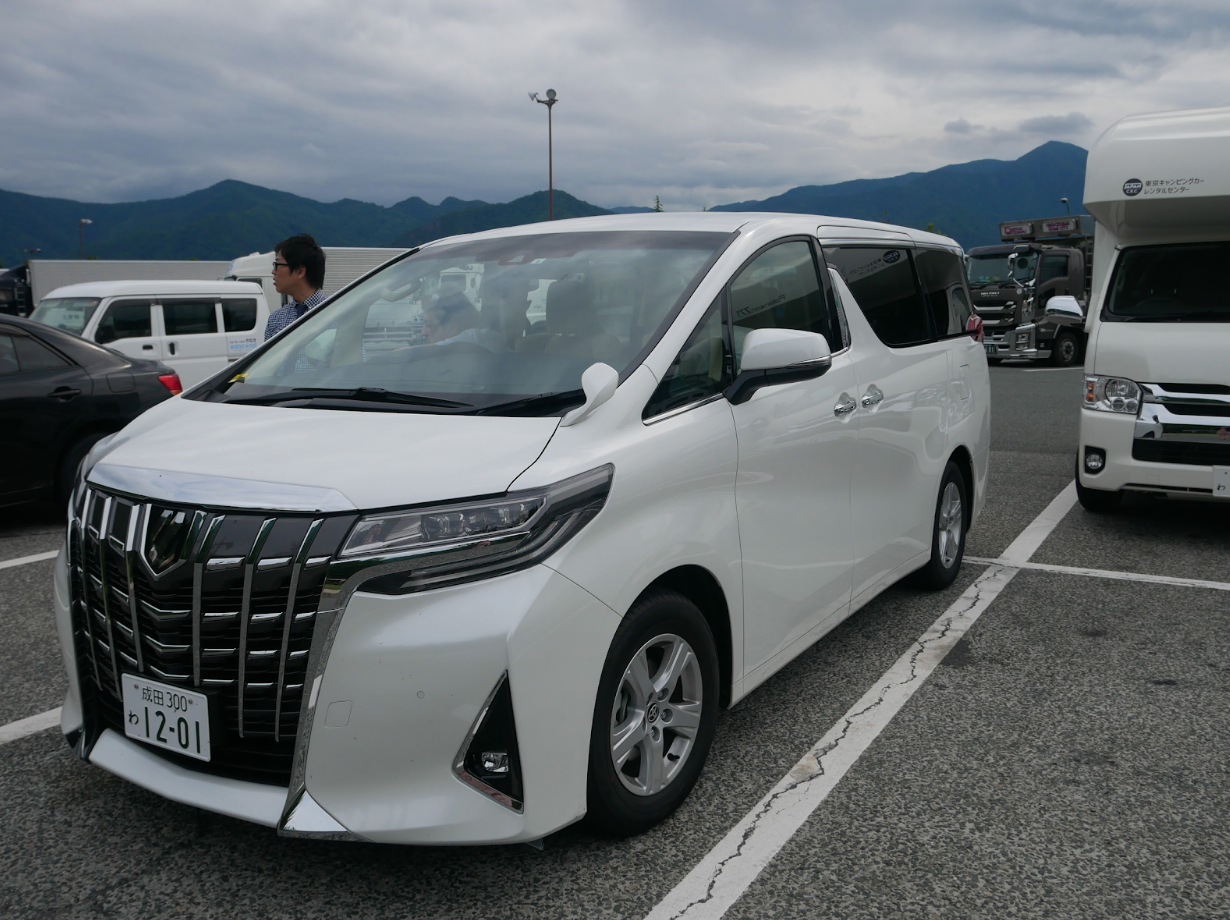
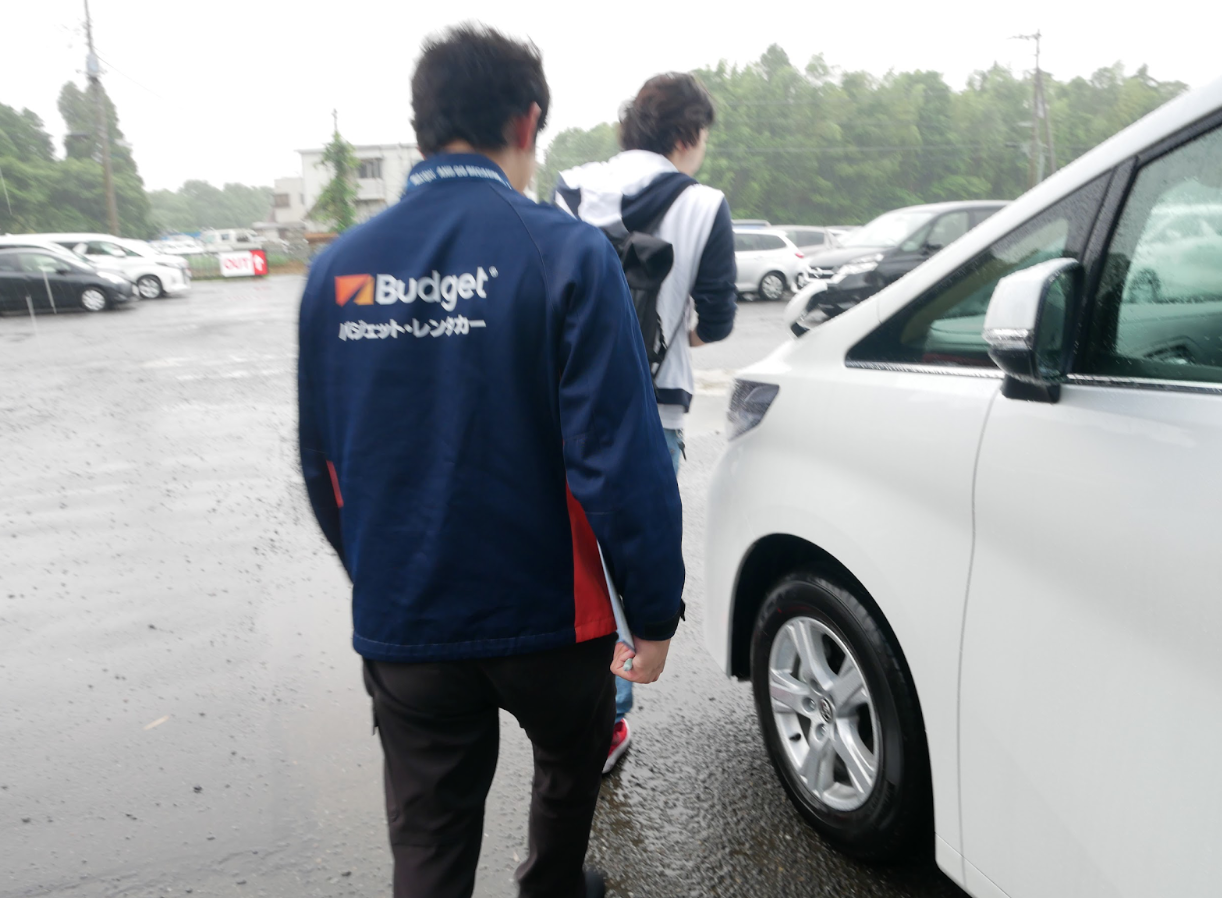
After a thorough inspection that there are no scratches on the vehicle and that everything is in place, we receive an additional explanation about the navigation system.
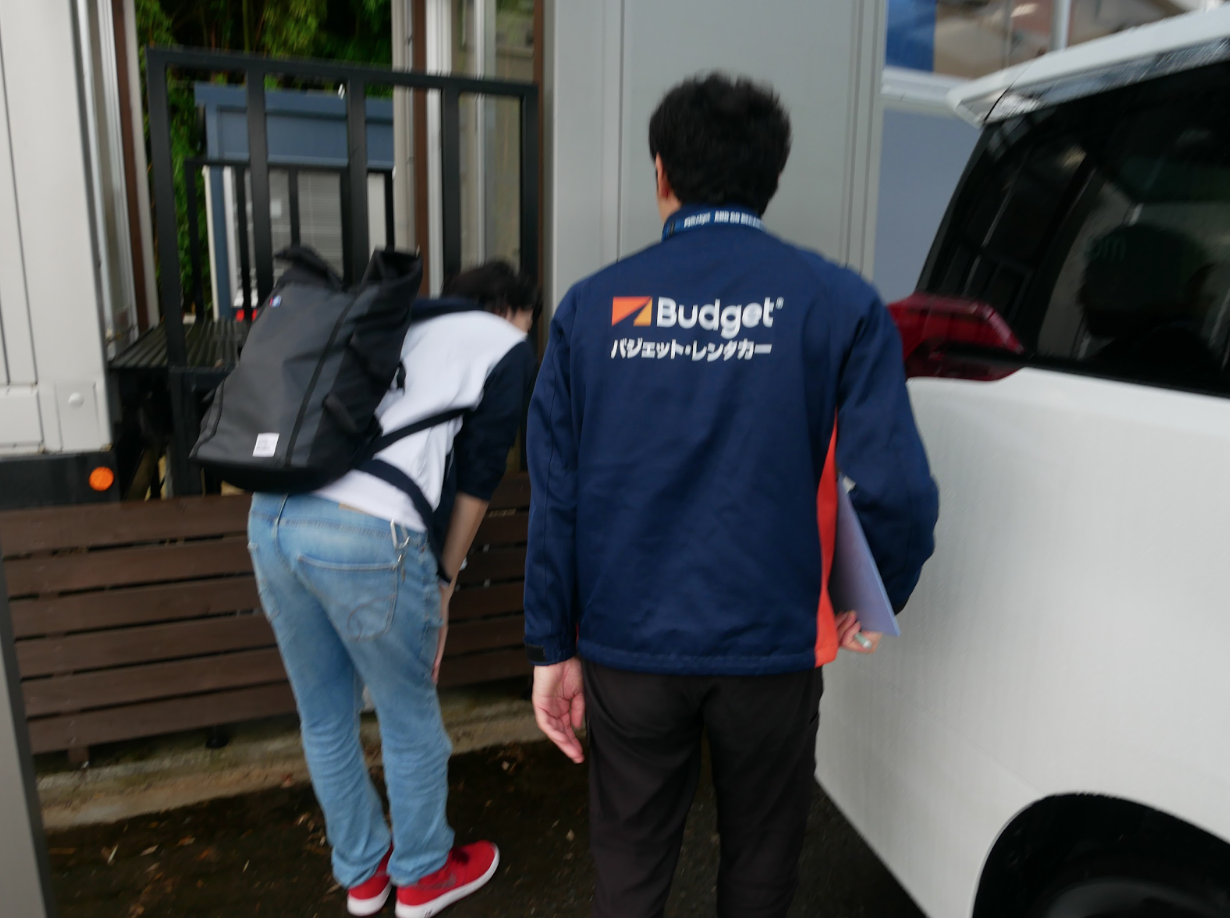
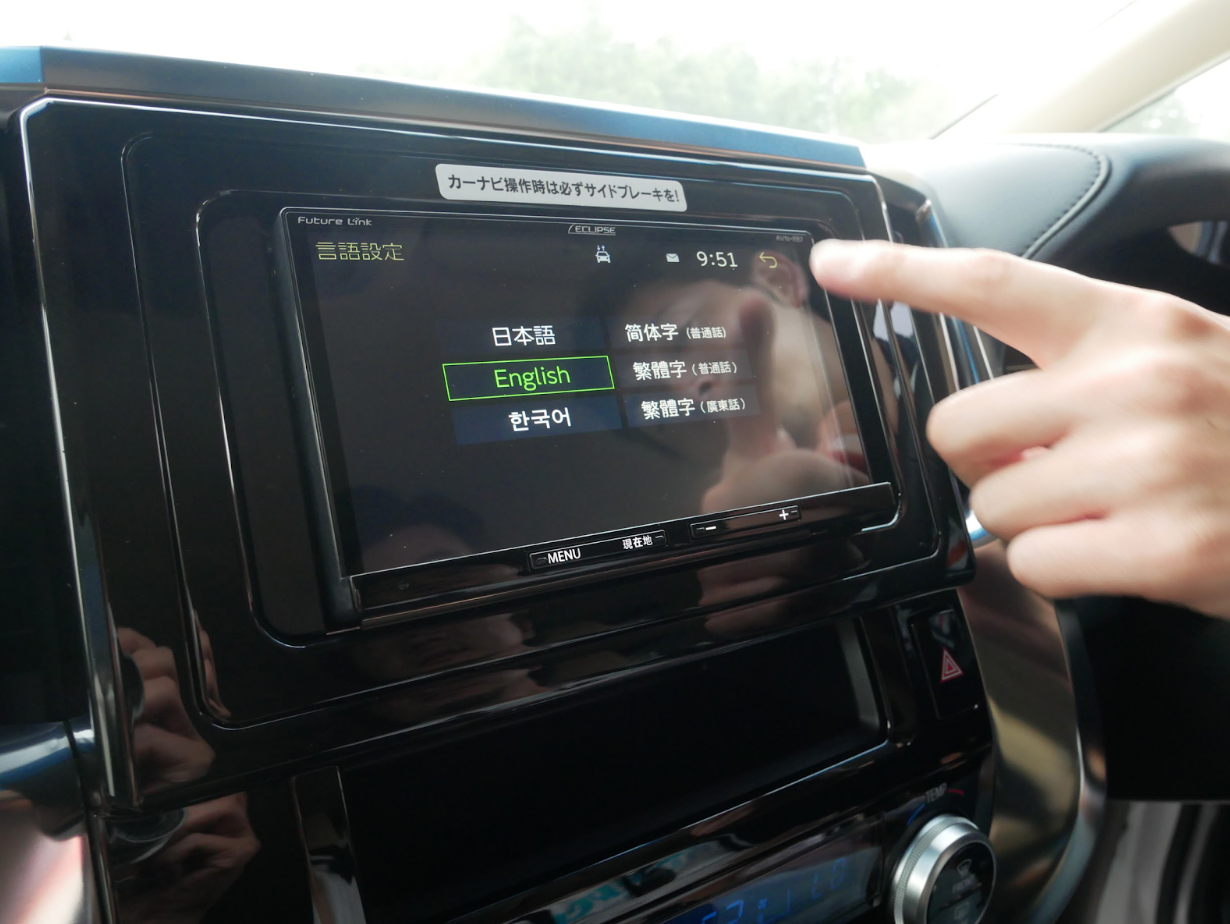
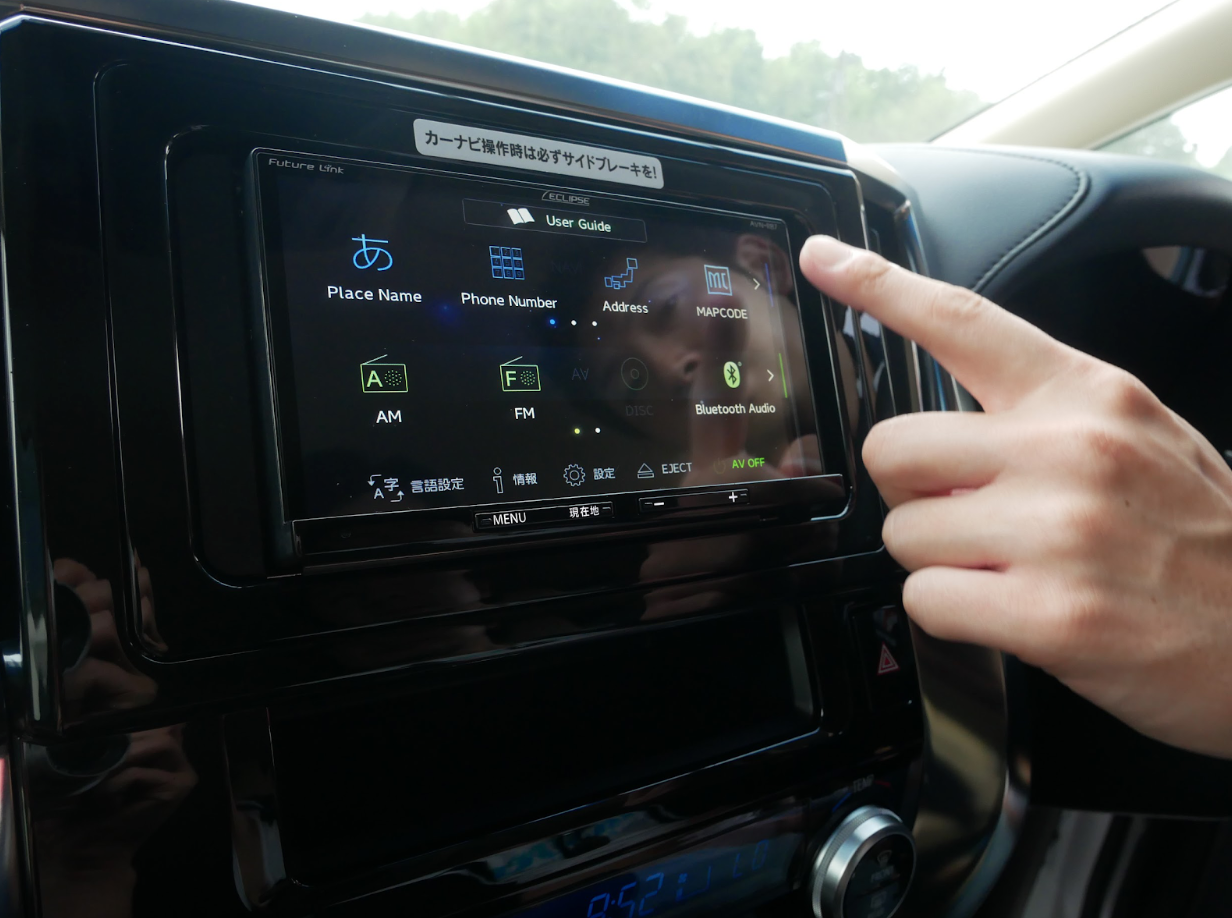
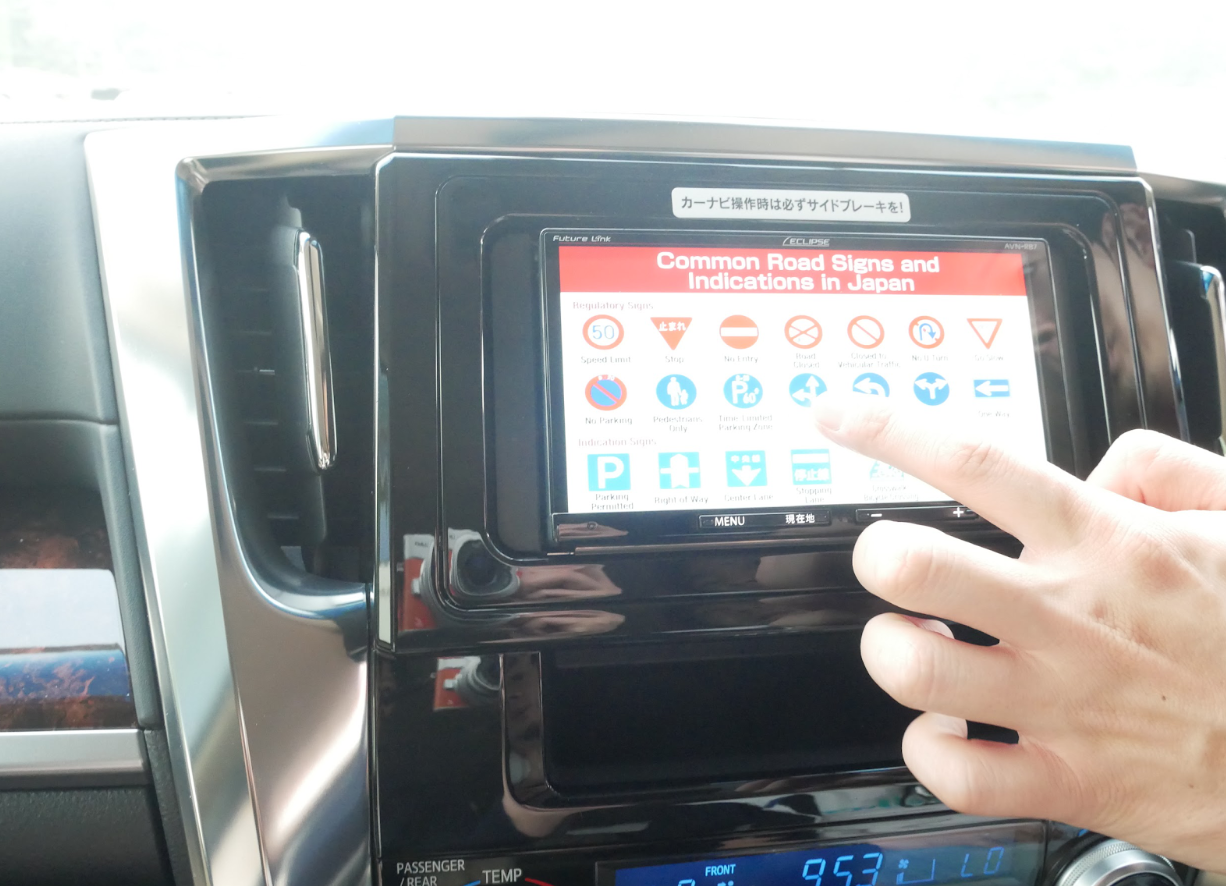
The navigation system is available in three languages, and it can be used to get information about Japanese traffic rules and signs.
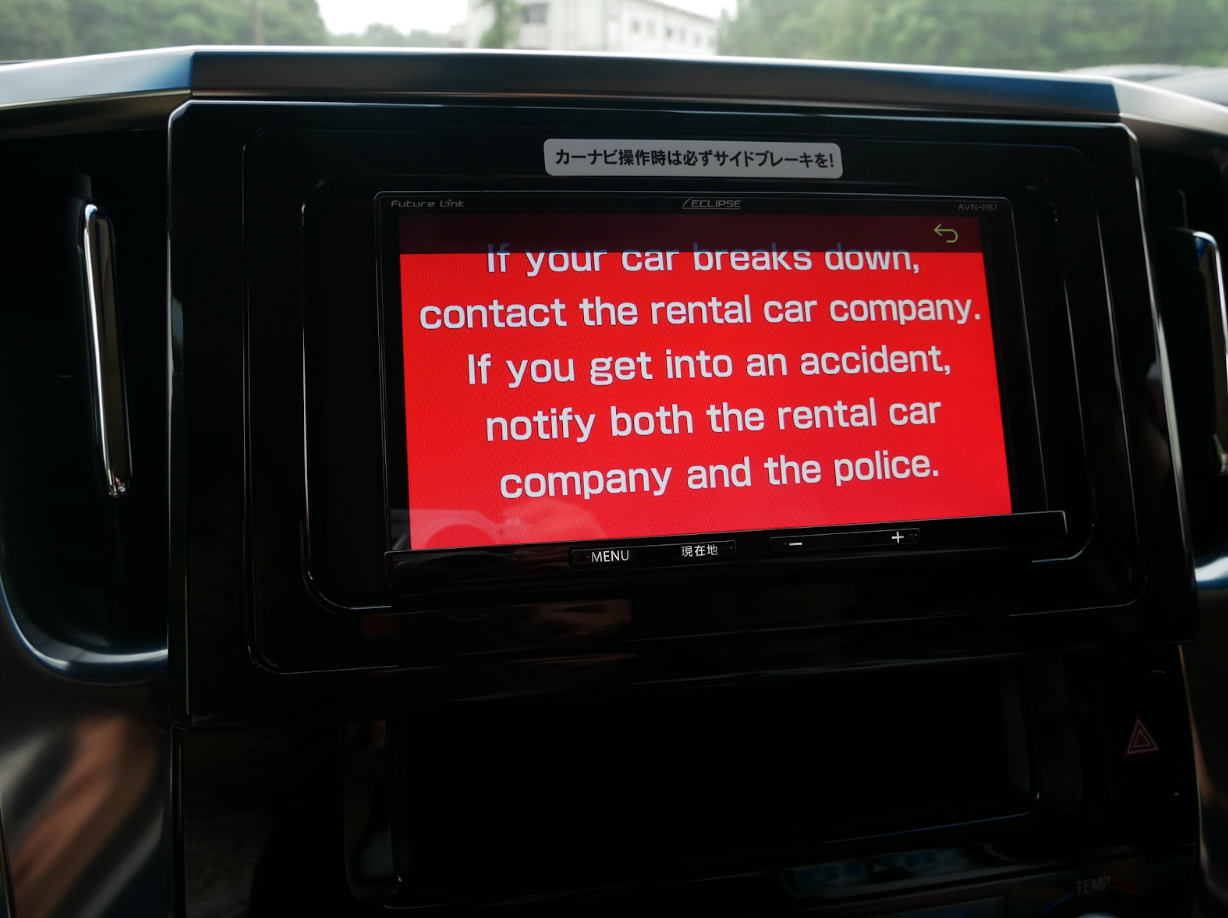
The clerk prompts us to drive carefully and sees us off as we finally start our car and leave for our destination.
From Narita to Nagano
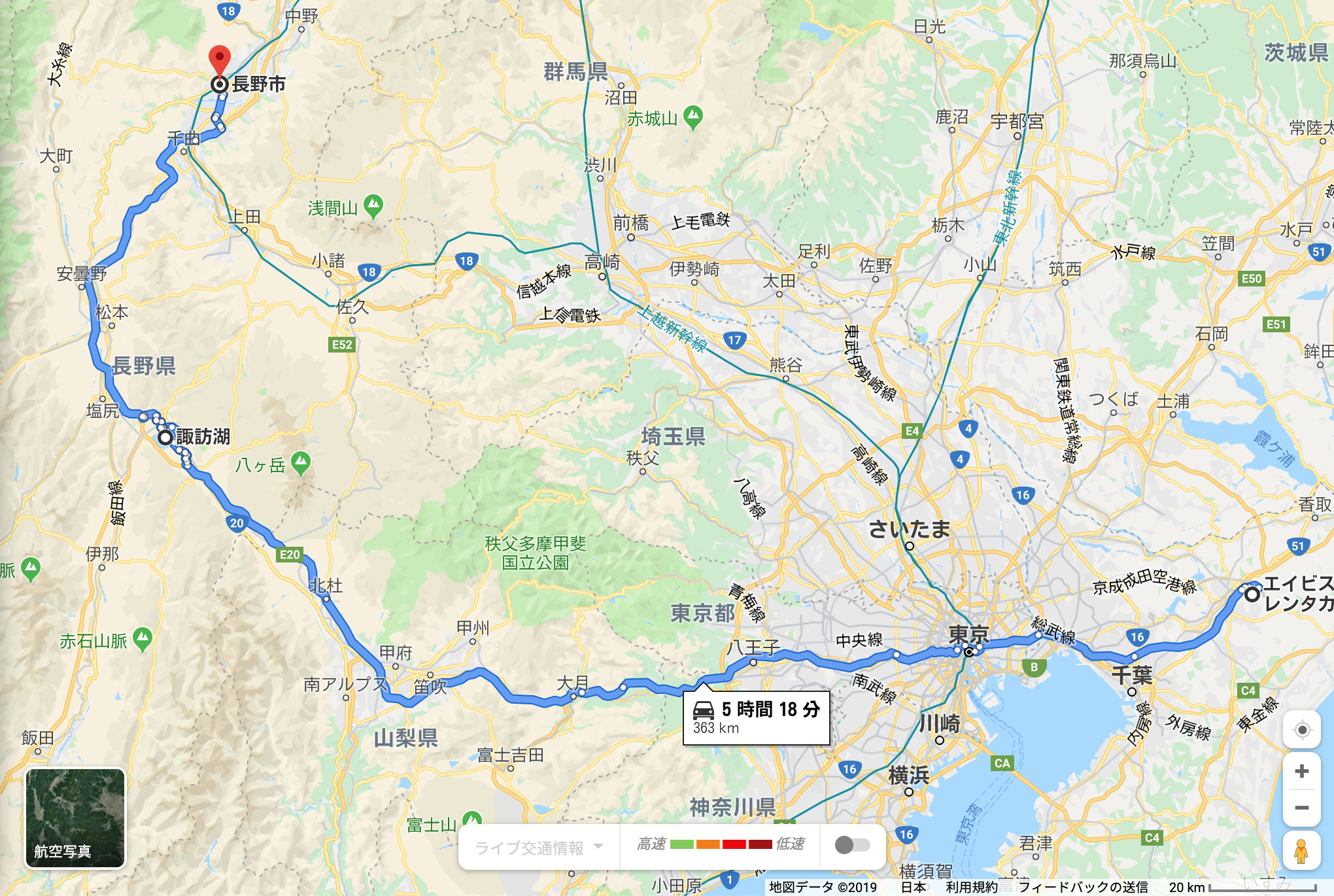
Since it was my first time doing long distance driving in Japan, I contacted a friend who lives there for help. He is used to driving around Japan for long distances and provided me with a lot of useful information.
First of all, I was quite surprised by the fact that Japanese highways are not toll free. In the country, we live in we do have highways, too, but we generally refer to them as freeways, and as the name says, they are free to use. In Japan, on the contrary, the use of highways is subject to the payment of a fee.
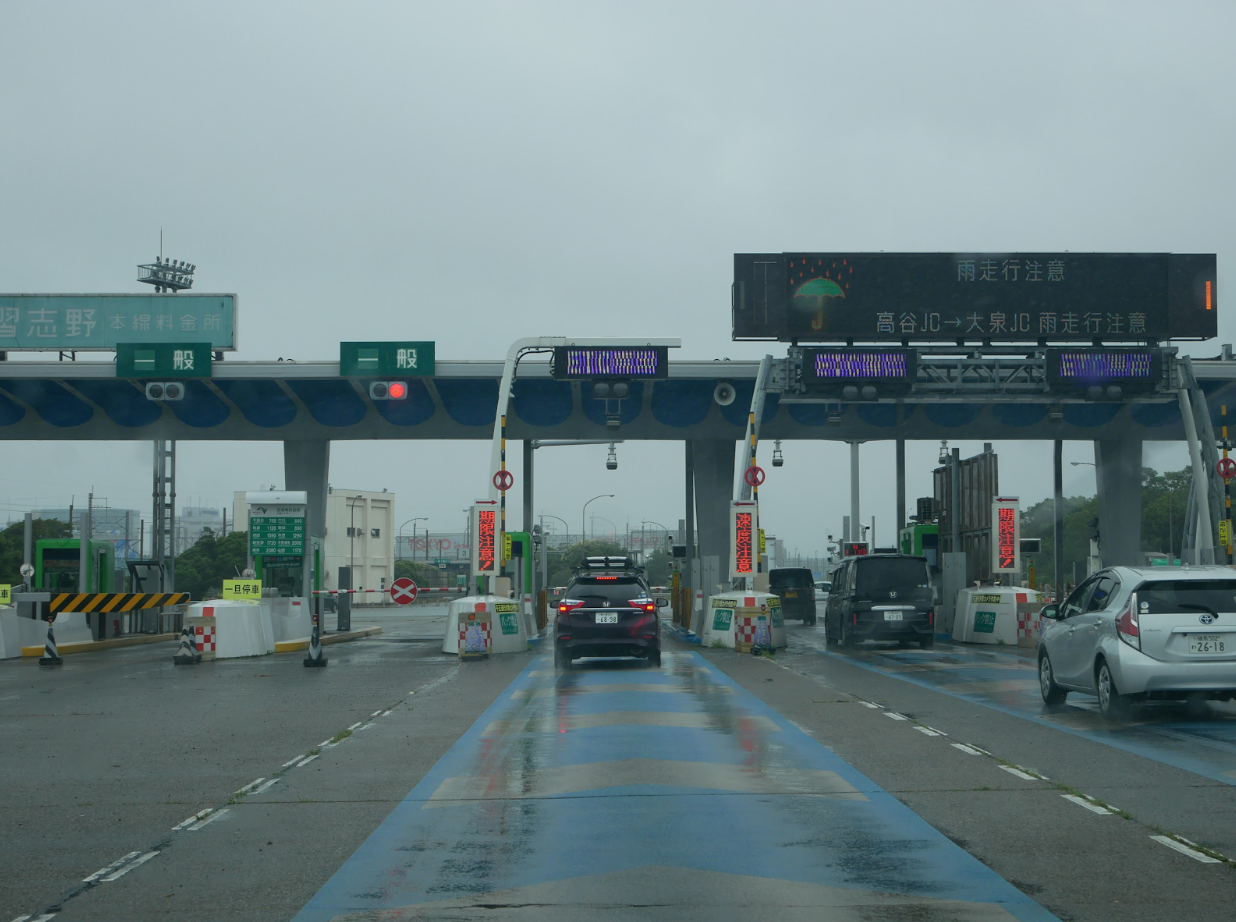
Moreover, since this time around we will make a brief stop in Tokyo, we will have to take three different highways: the Tou-kan-do (Higashi-Kanto Expressway), the Shu-to-ko (Shuto Expressway) and the Chu-o-do (Chuo Expressway). We will have to pay three times, as each of them has its own fees. The Higashi-Kanto and Shuto expressways have fees that are based on the length of one's journey, while the Chuo expressway has a fixed price system.
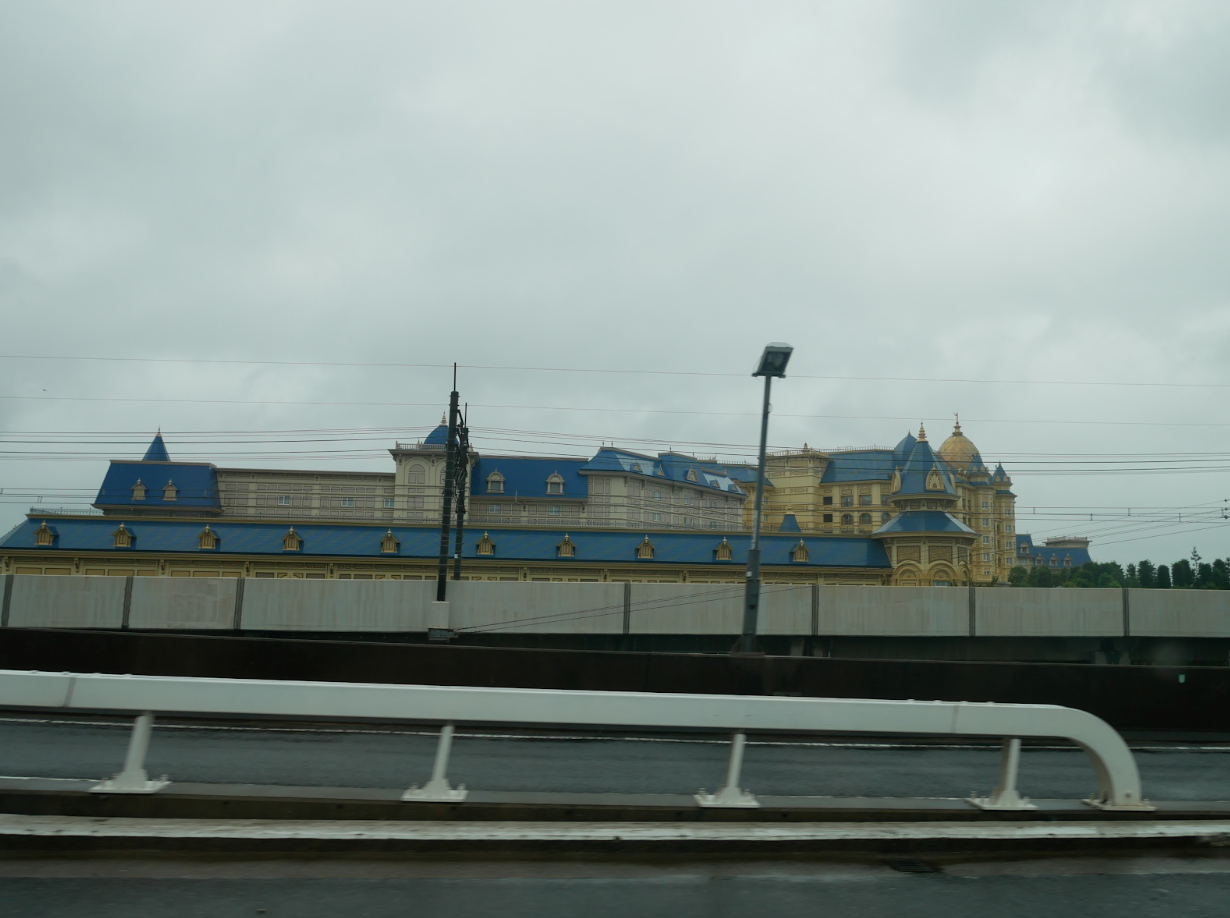
My friend also mentioned that we can both see Tokyo Disneyland (Tokyo Disney Resort) and Tokyo Tower directly from the highway. I actually managed to get a glimpse of Tokyo Disneyland while driving on the Higashi-Kanto Expressway, but I was slightly disappointed as it just looked like a big hotel-like structure.
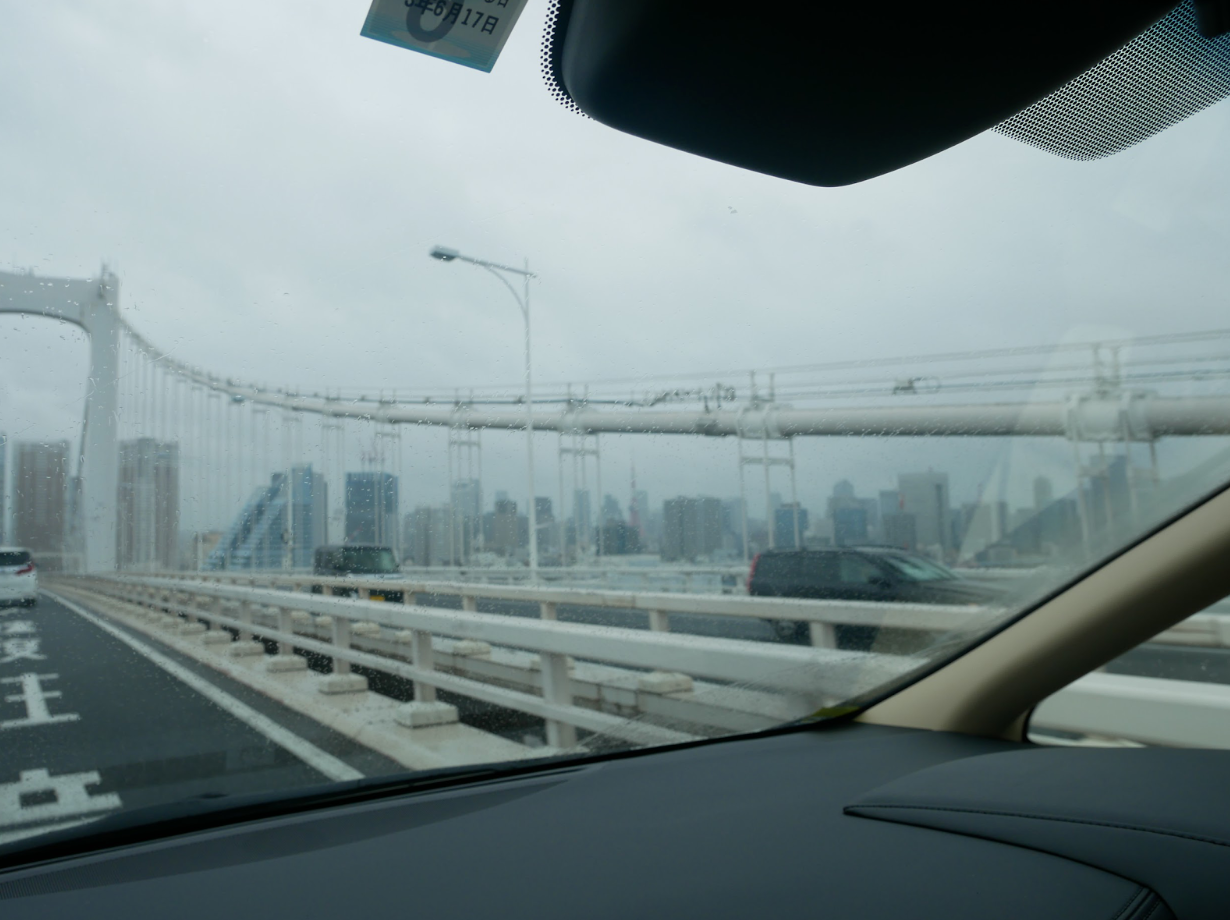
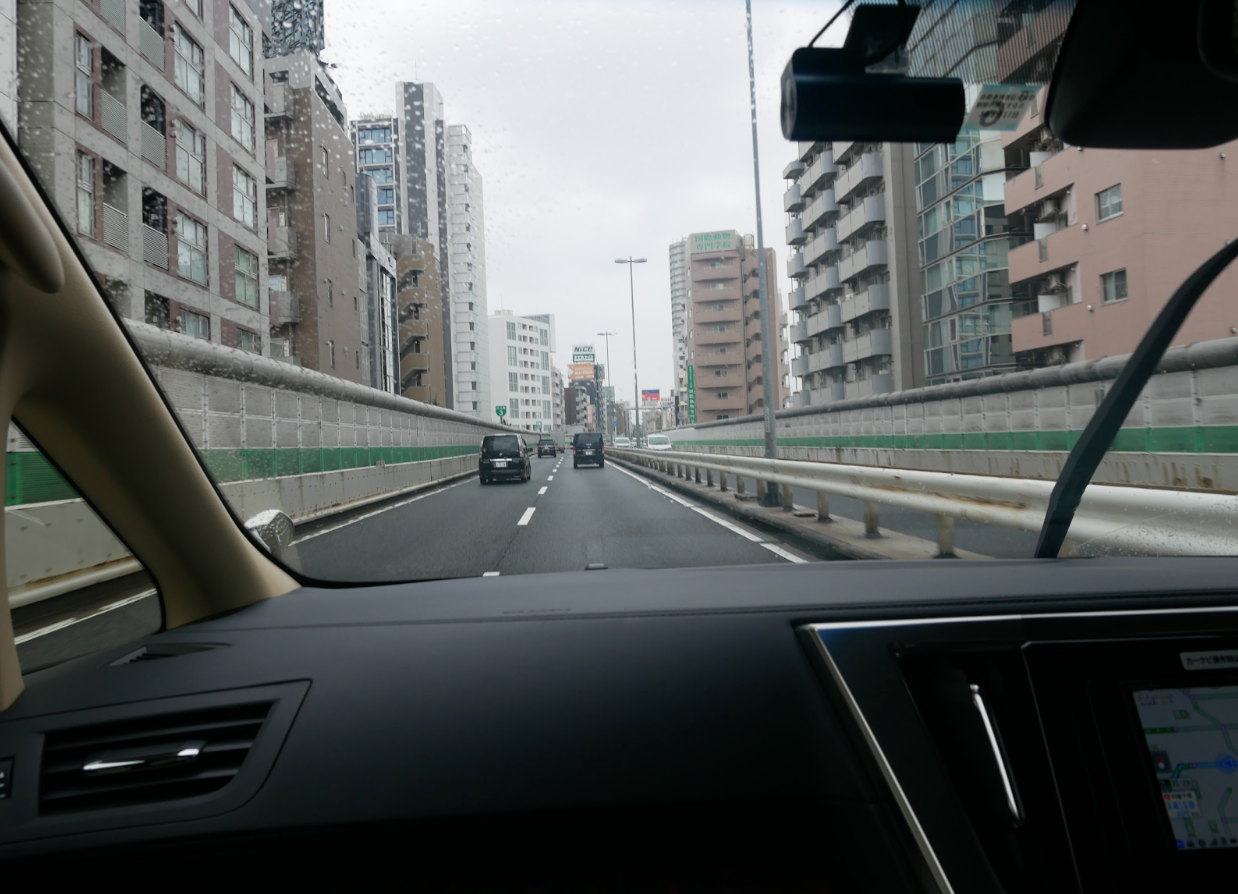
While riding the Shuto Expressway I could actually get a clear, stunning view of Tokyo Tower. A part of the Shuto Expressway runs straight through the city, surrounded by buildings on both sides, and driving there felt really unique. Where I am from, highways run through grasslands and deserts, so it was exciting to drive at high speeds past the city’s buildings.
Japanese service areas (SA): a place for entertainment.
Stopovers are one of the best parts of going on a road trip. My friend who lives in Japan told me that parking and service areas in Japan sell local gourmet products and souvenirs, and they are really fun to visit.
Highway rest facilities are categorized into service areas (SA) and parking areas (PA) both according to the range of services they provide and to their relative placement. As a general rule, service areas provide visitors with a dedicated rest area, a parking lot, toilet facilities, as well as a shop, a food court, a gas station. Parking area facilities, on the other hand, are generally limited to a parking lot, toilet facilities and a shop. Service and parking areas are furthermore categorized into the ones that are going upwards (placed on the highway lane heading to Tokyo, or towards the point of origin of the highway) and the ones that are going downwards (placed on the lane going away from Tokyo, or heading towards the final destination of the highway).
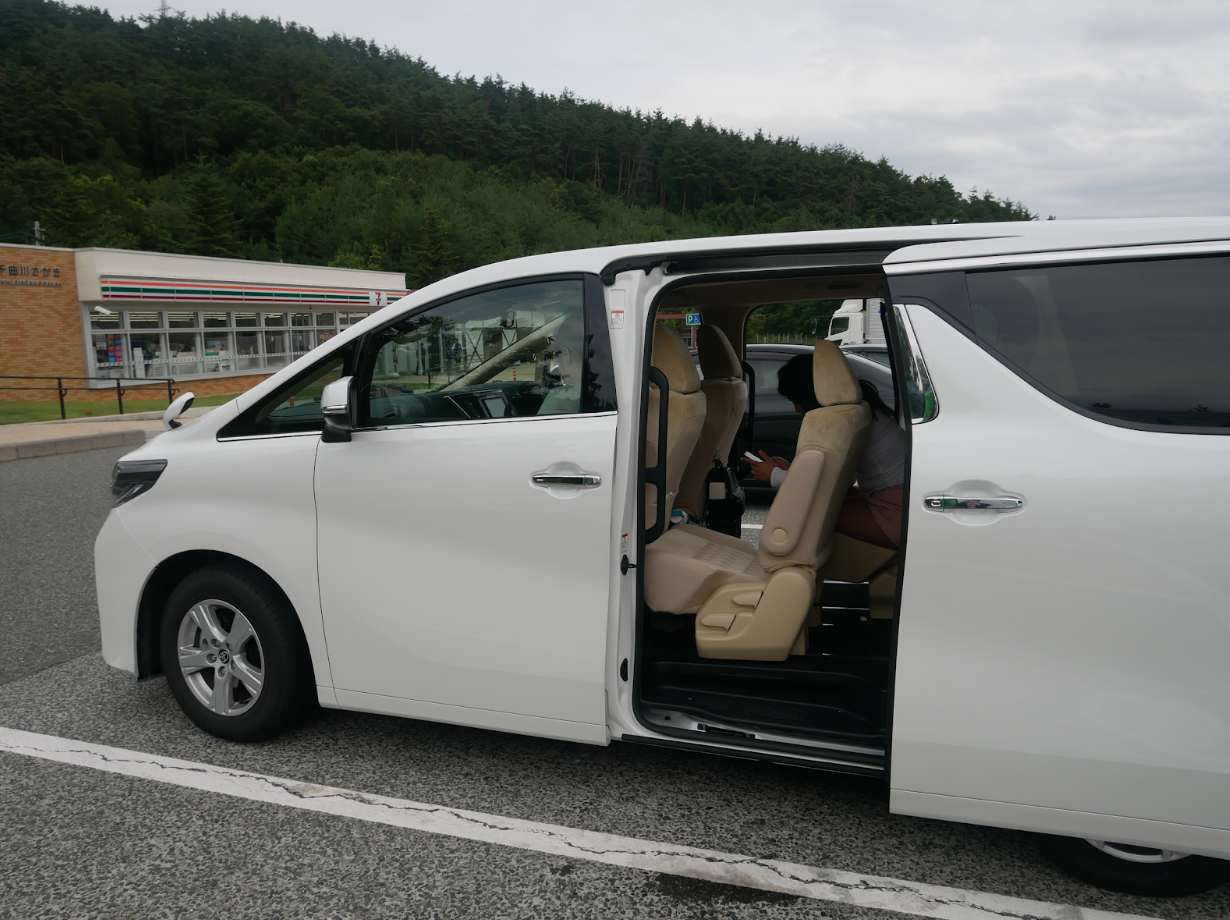
Japanese service areas usually have a large food court, sell vegetables cultivated in the surrounding areas as well as a variety of souvenirs. On the other side, it is also possible to find smaller parking areas that are only equipped with a convenience store and a gas station. In addition, one can buy gourmet items from the area, such as local food specialties and souvenirs. The abundance of food selection, both in service and parking areas really impressed me!
Most of the parking areas in the country where we live only offer fast food, so it was really amazing to see local gourmet products, souvenirs, and specialties on sale. The toilet facilities were bright and clean, and there was a hand dryer too, so I really thought Japan was great!
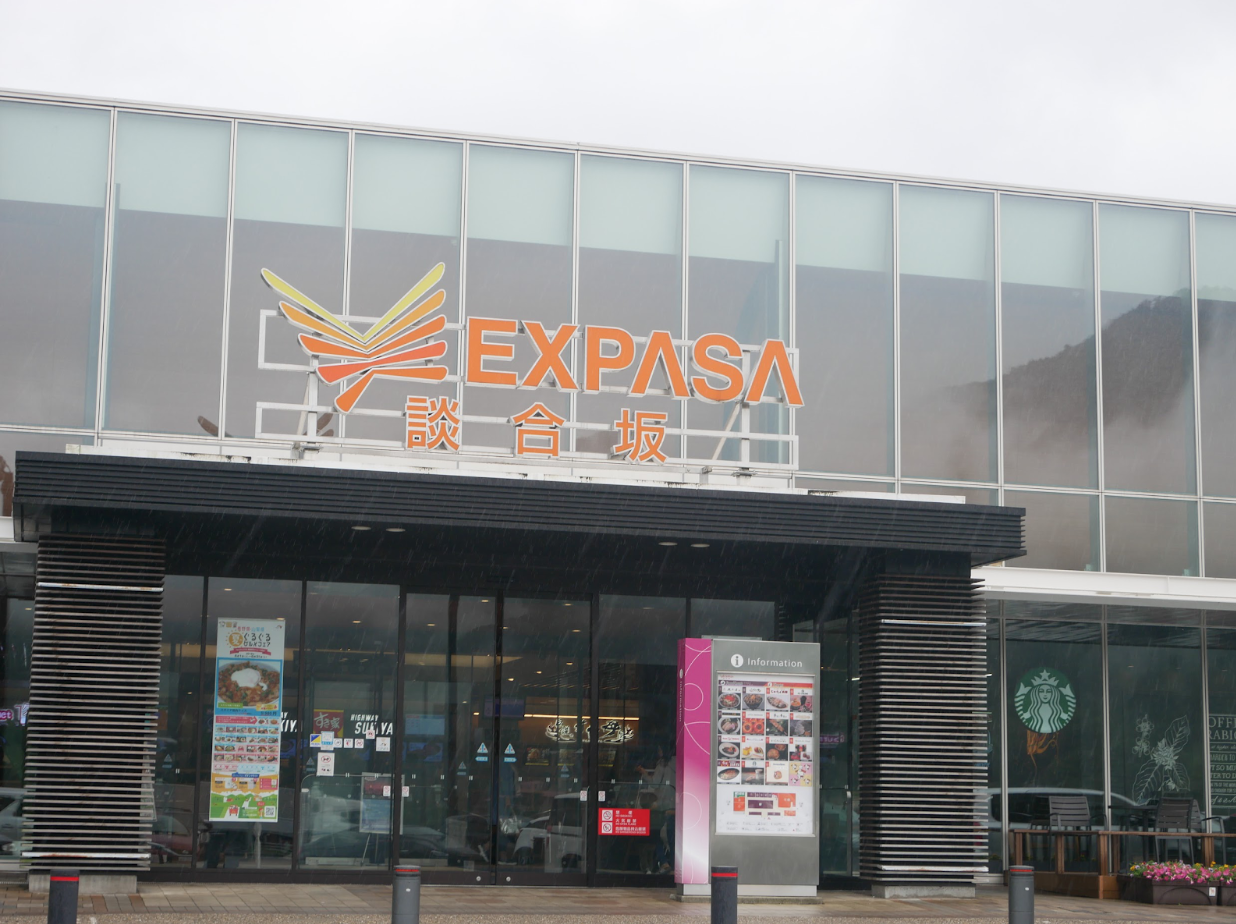
Dangozaka SA, going downwards
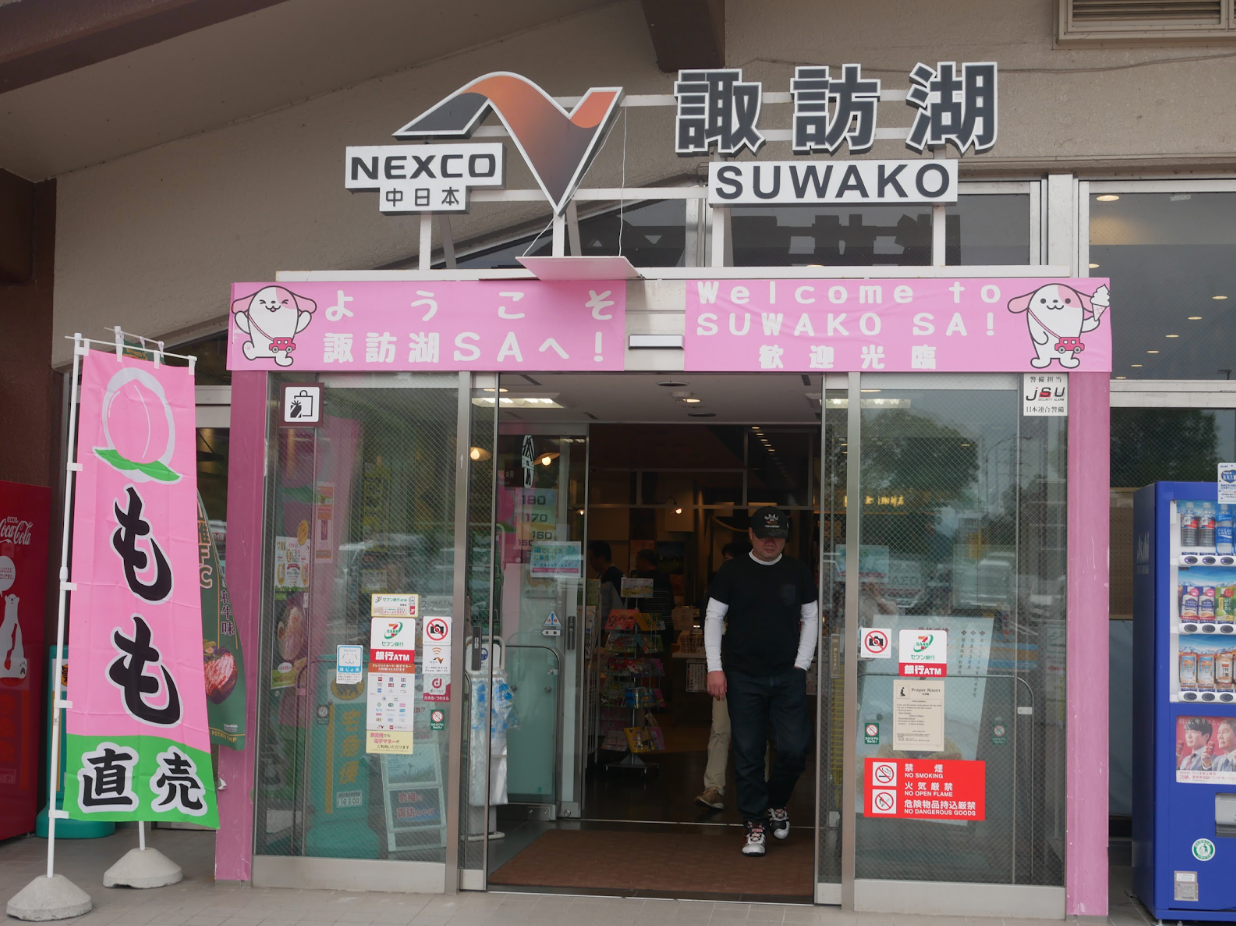
Suwako SA, going downwards
Suwako SA, located at a relatively high altitude, overlooks Lake Suwa and the surrounding mountains. Even though the day we visited the station the weather was cloudy, the blue sky, the green mountains and the clear lake make for a spectacular view on any given sunny day.
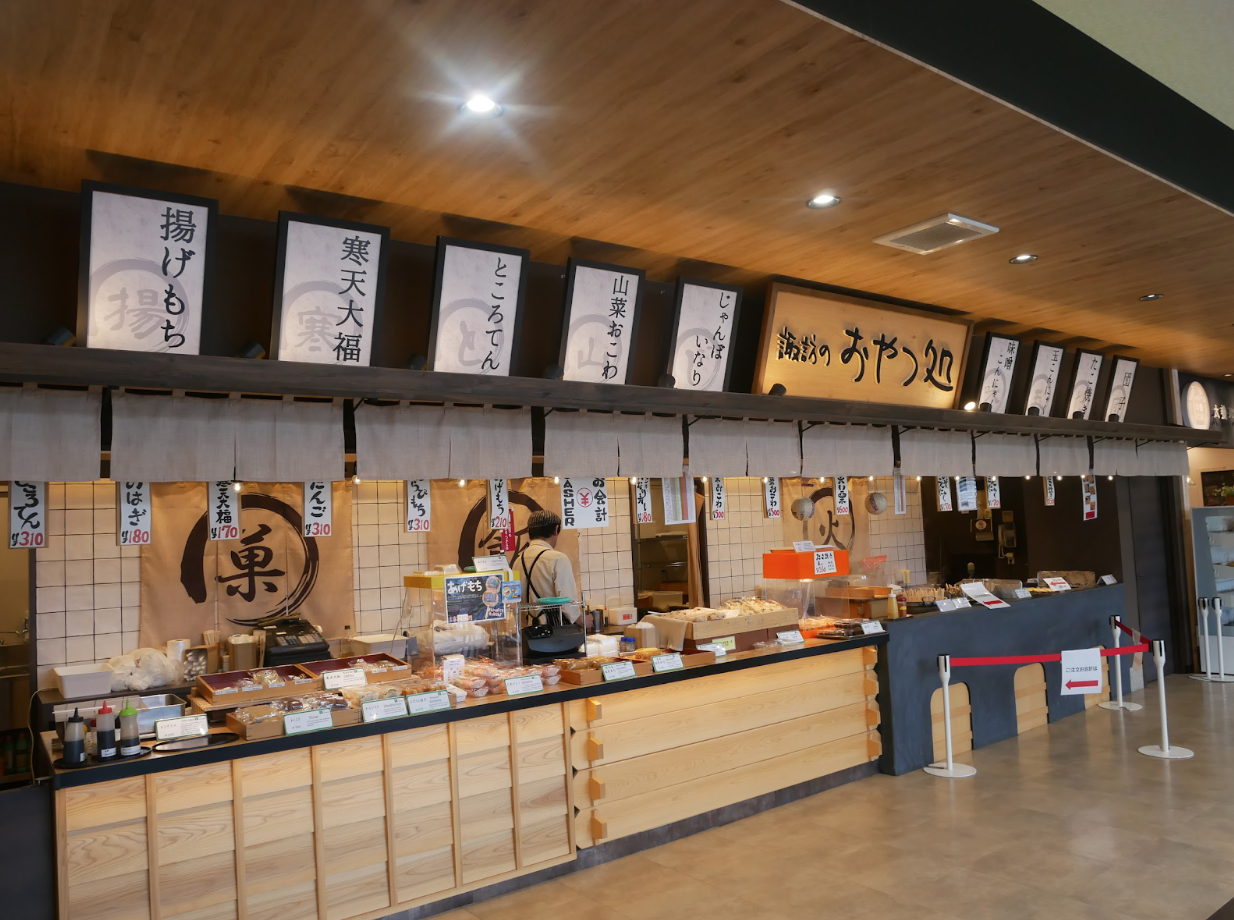
Suwako SA, going downwards
The Shinshu area offers a lot in terms of gourmet food. Many customers were having a good time while taking a look at the scenery of Lake Suwa.
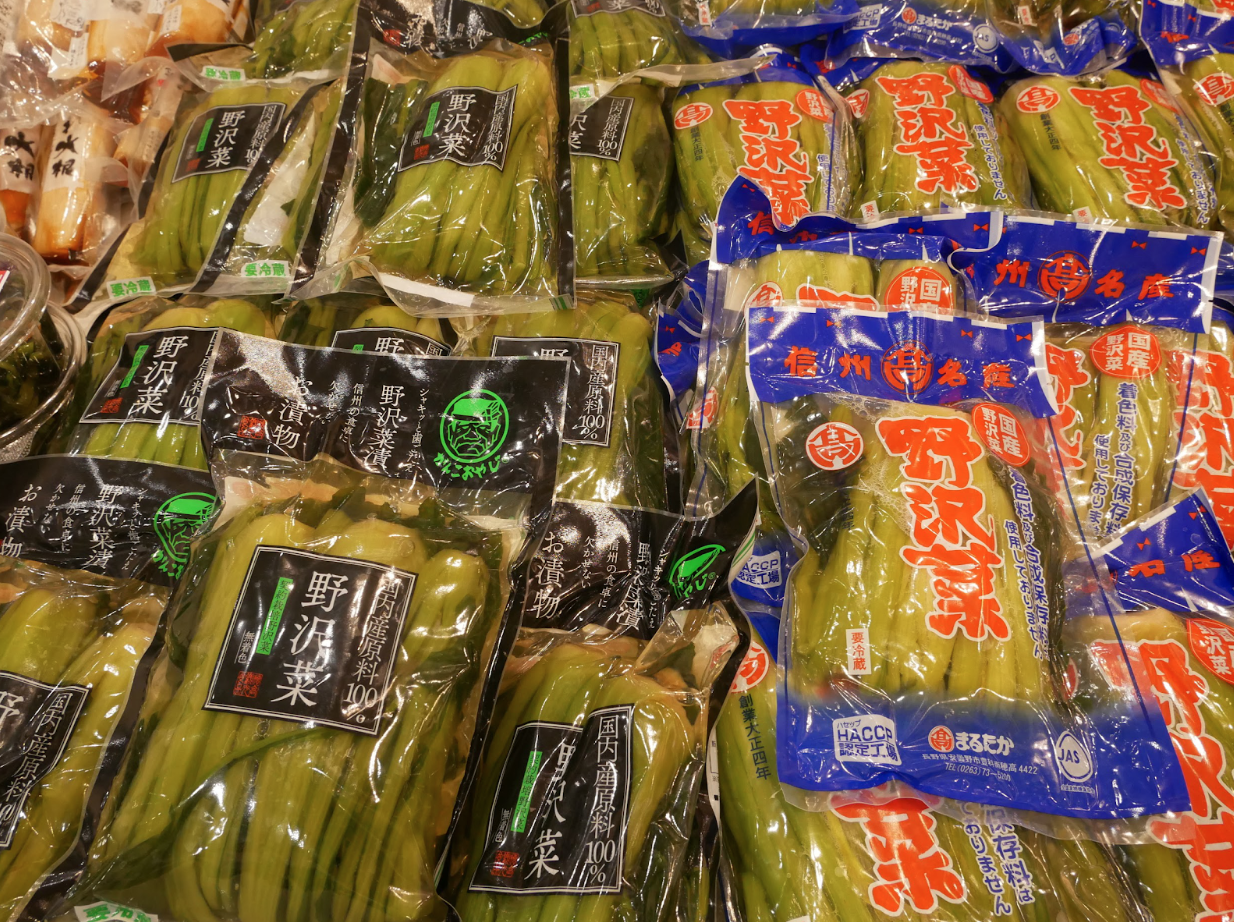
Suwako SA, going downwards
Not to mention Nozawana, the locally popular leaf vegetable, when talking about the Shinshu area! Here, Nozawana pickles from different manufacturers on sale.
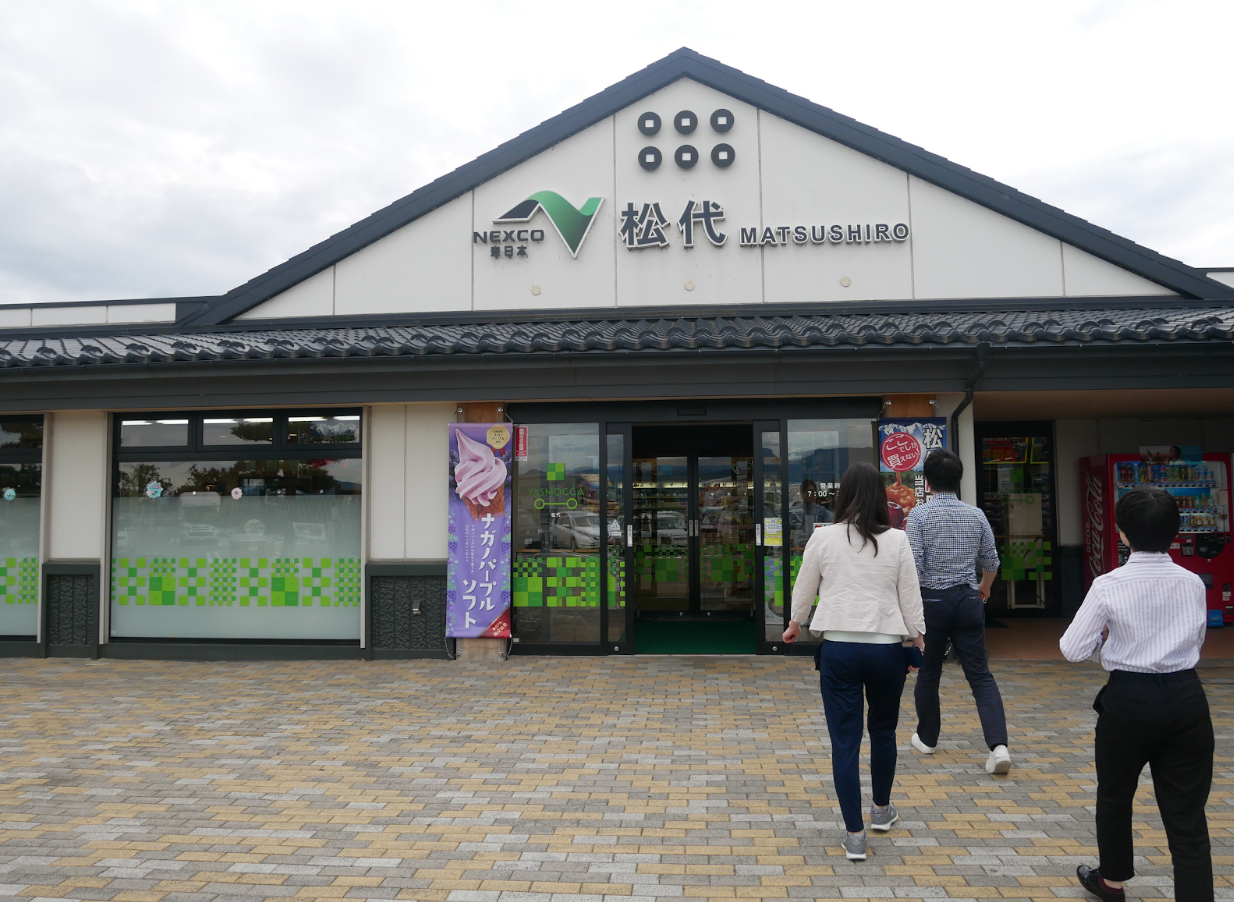
Matsushiro SA, going upwards
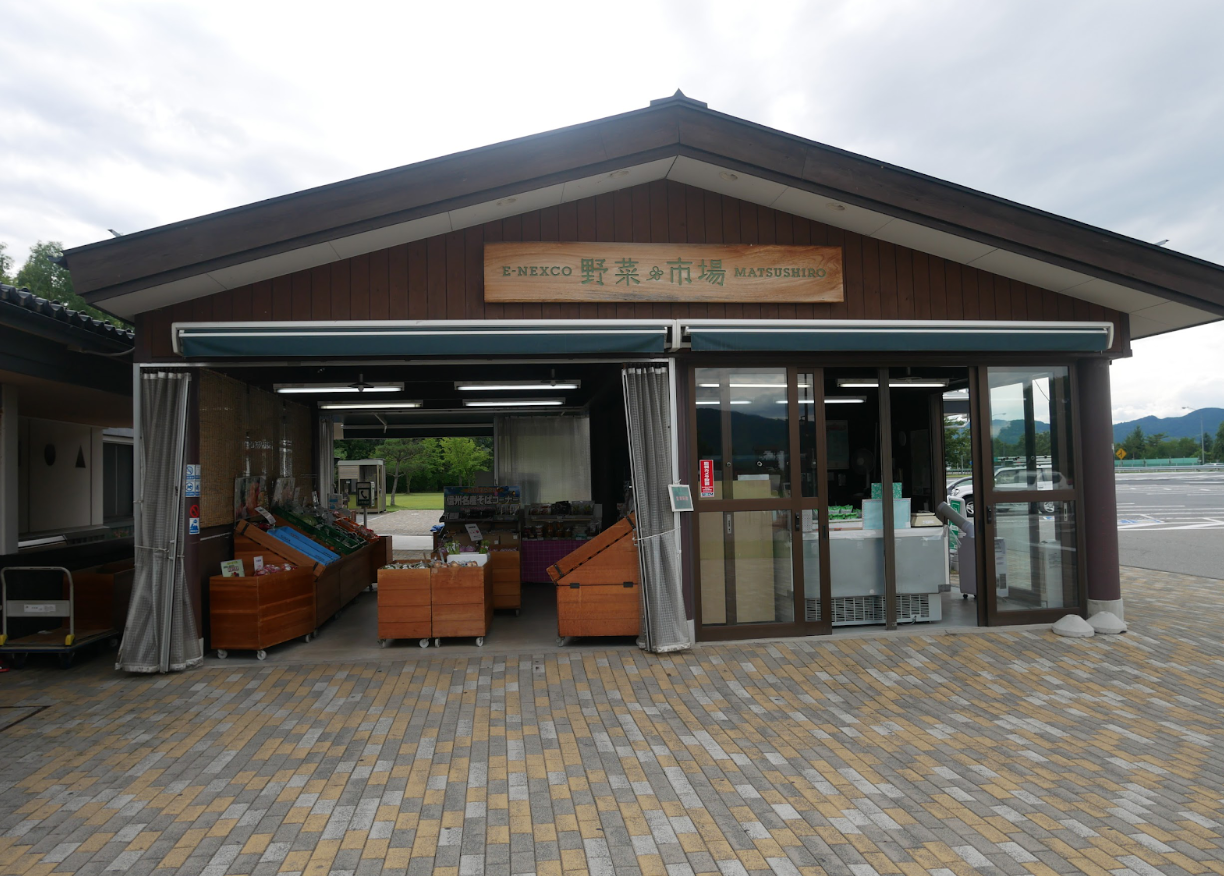
Matsushiro SA, going upwards
A selection of local vegetables on sale.
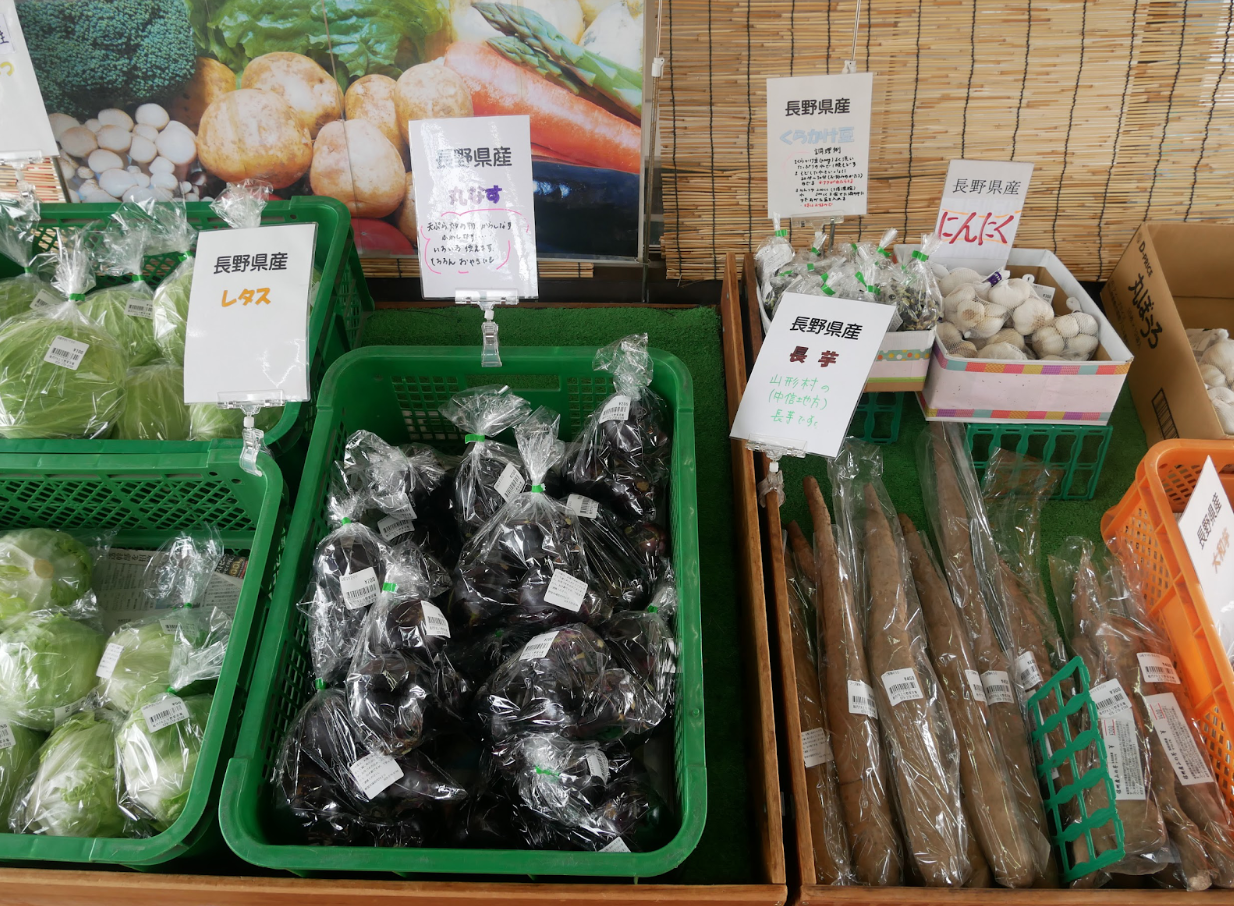
Matsushiro SA, going upwards
As one enters the Nagano prefecture, there is a wide selection of local vegetables and specialties on sale.
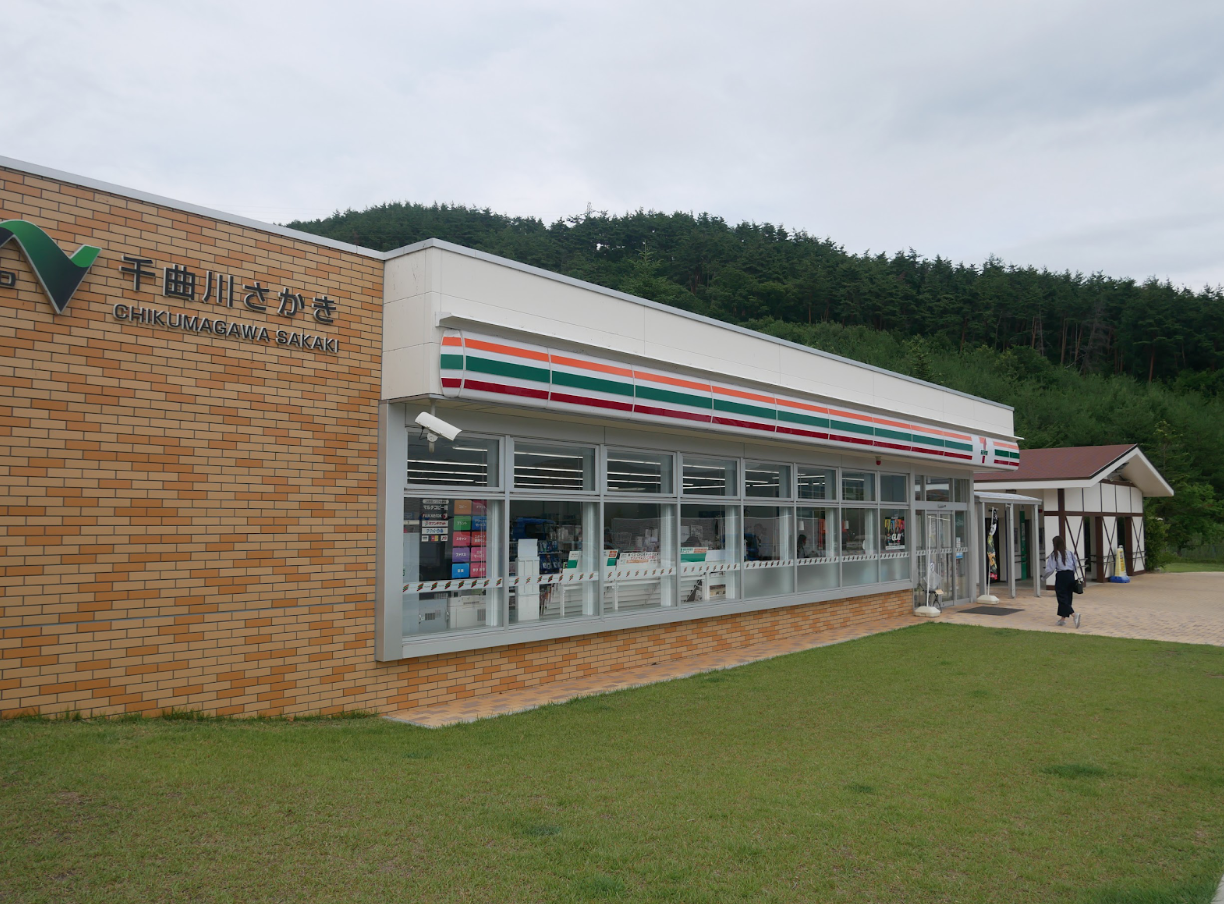
Chikumagawa SA, going upwards
A small SA with no other facilities besides a convenience store. There are souvenirs on sale, too.
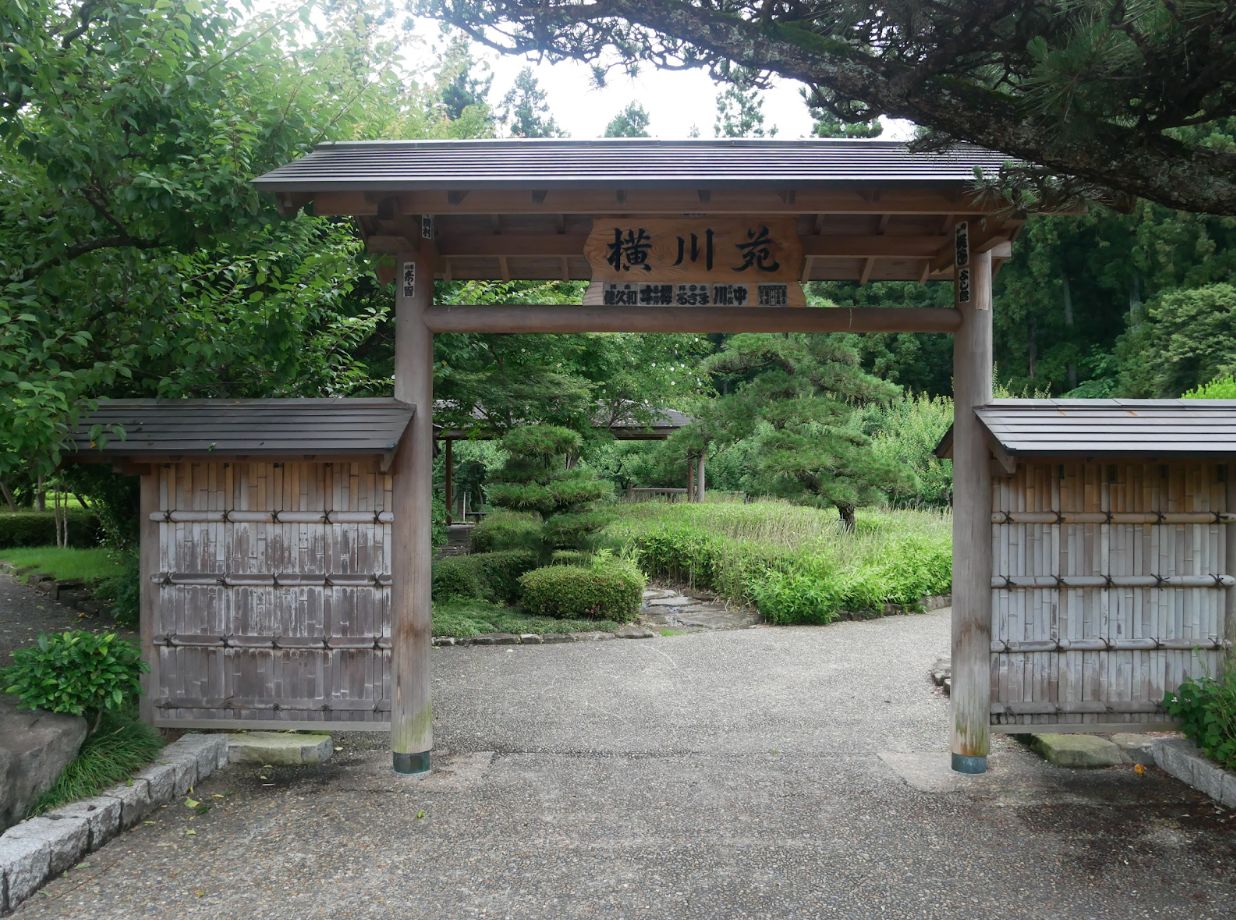
Yokogawa SA, going upwards
The service area I have the fondest memories of is the Yokogawa SA. As soon as I got out from our car I could smell the forest around us. It is a nice, cool place immersed in fresh air, and the deep aroma of the forest is what makes it so impressive.
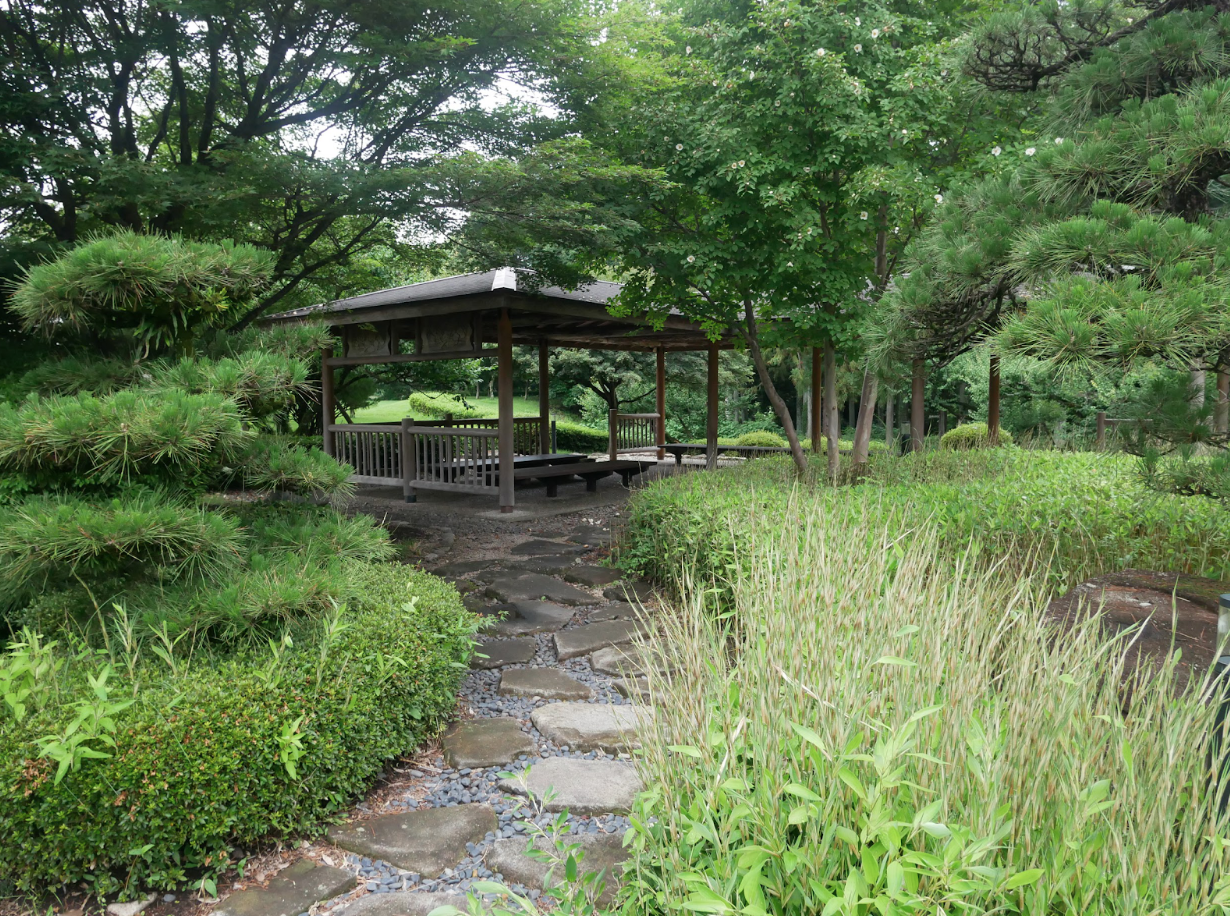
Yokogawa SA, going upwards
The lusciously green garden has a calm, soothing atmosphere that makes it look like a tourist attraction.
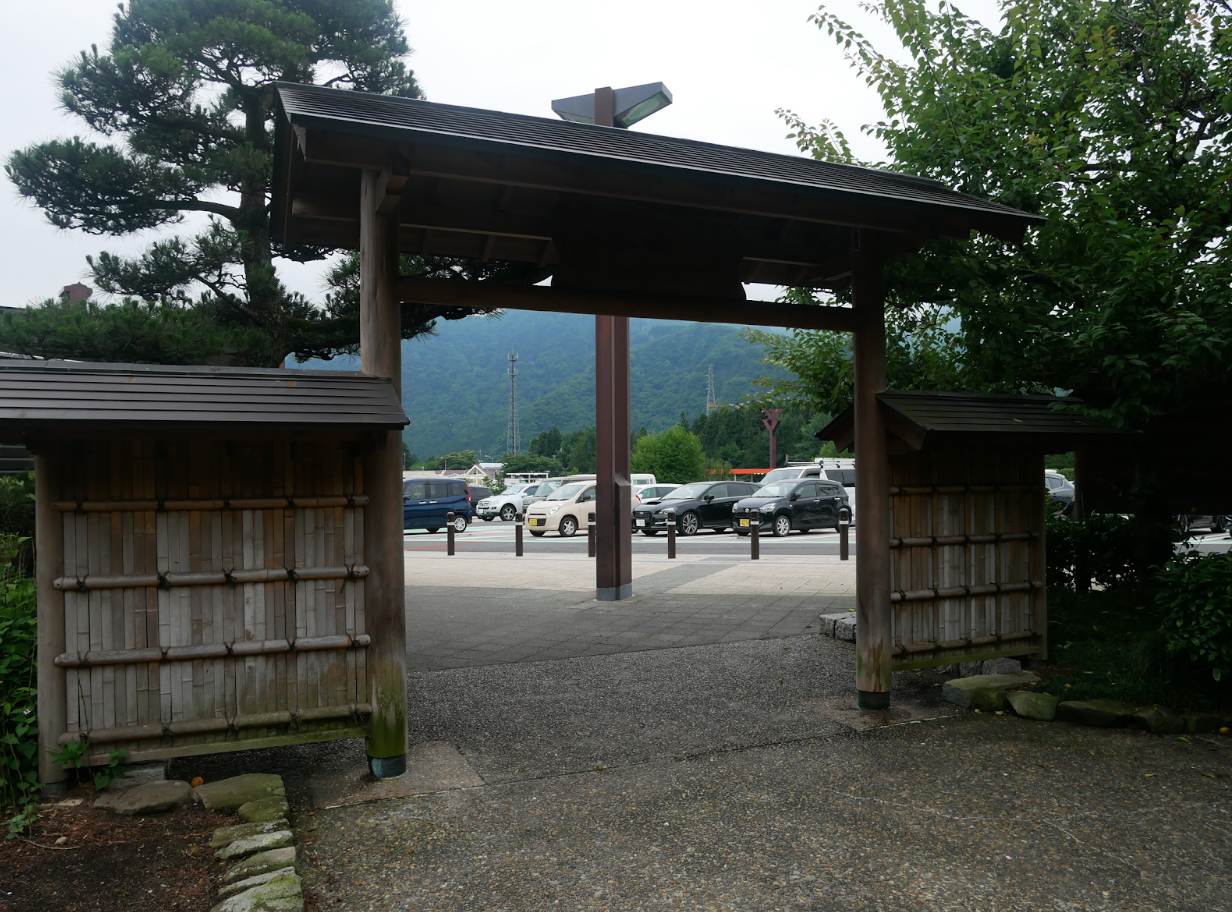
Yokogawa SA, going upwards
A view from inside the garden.
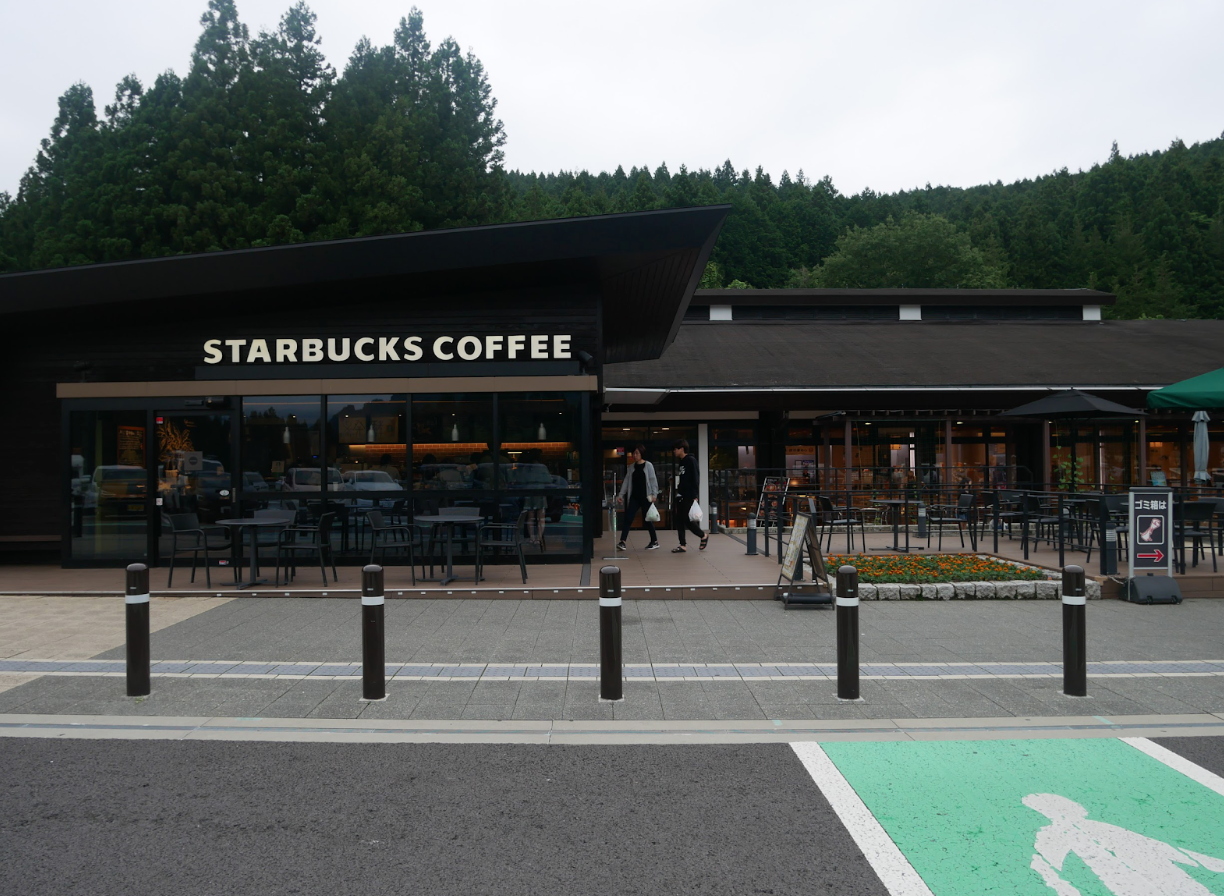
Yokogawa SA, going upwards
There is a Starbucks, too. A large facility, with lots of customers.
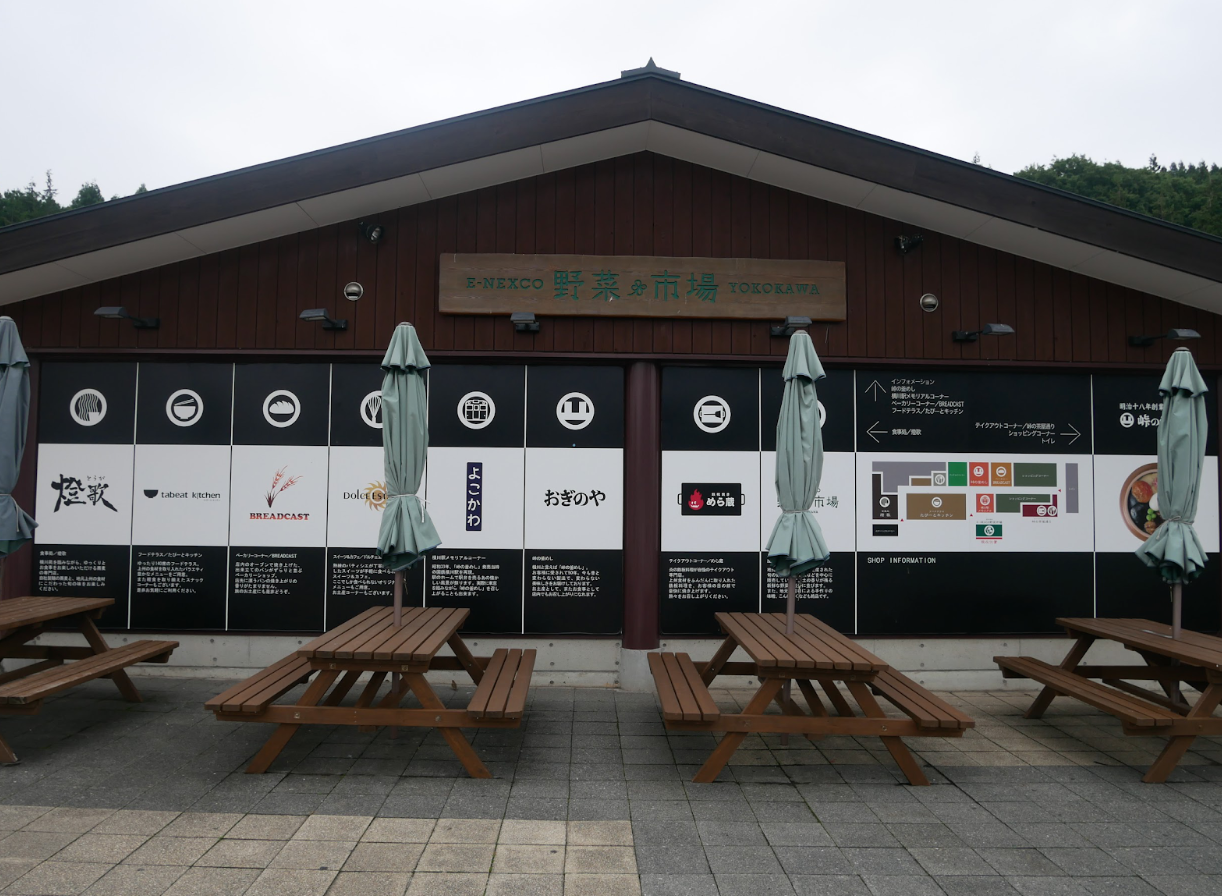
Yokogawa SA, going upwards
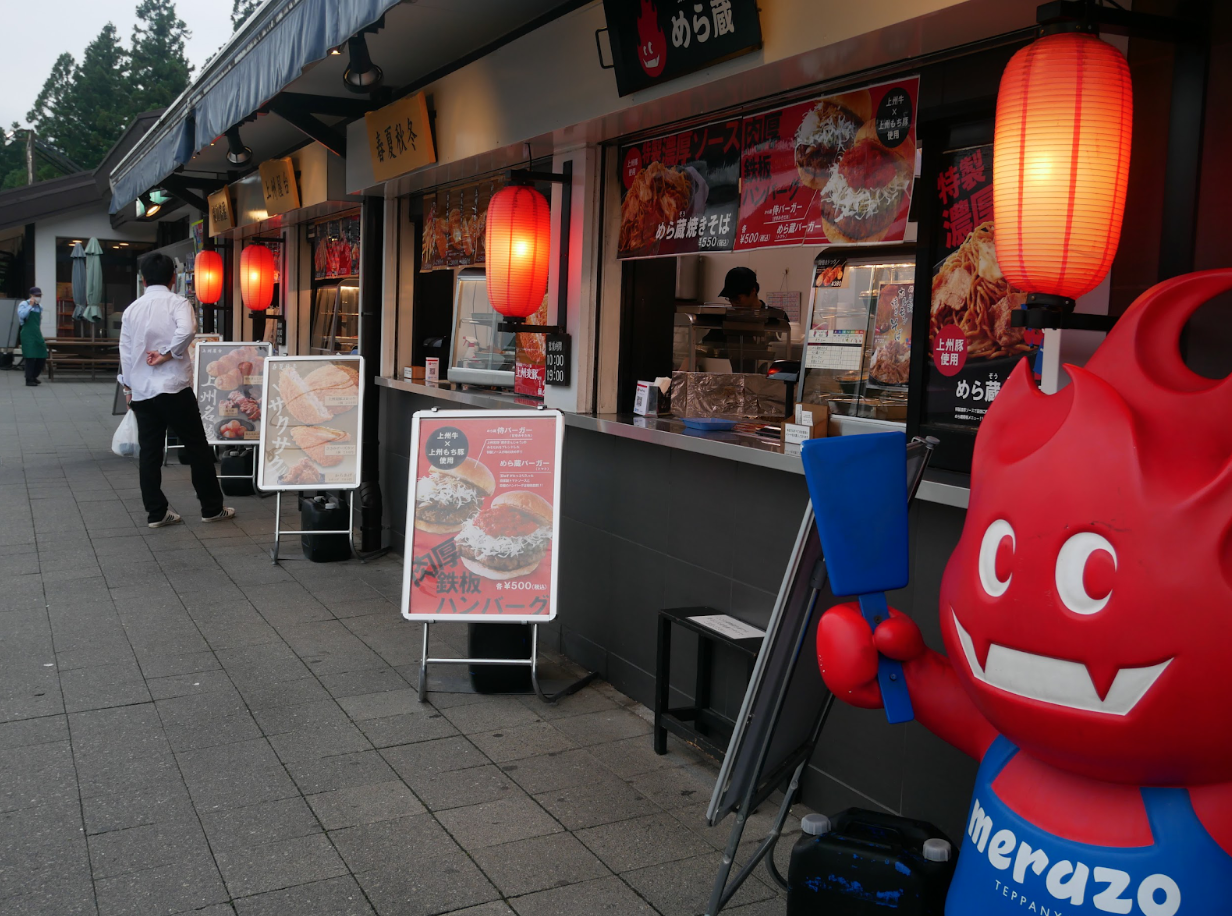
Chikumagawa SA, going upwards
We found some shops here, too! The hanging lanterns give them a unique atmosphere.
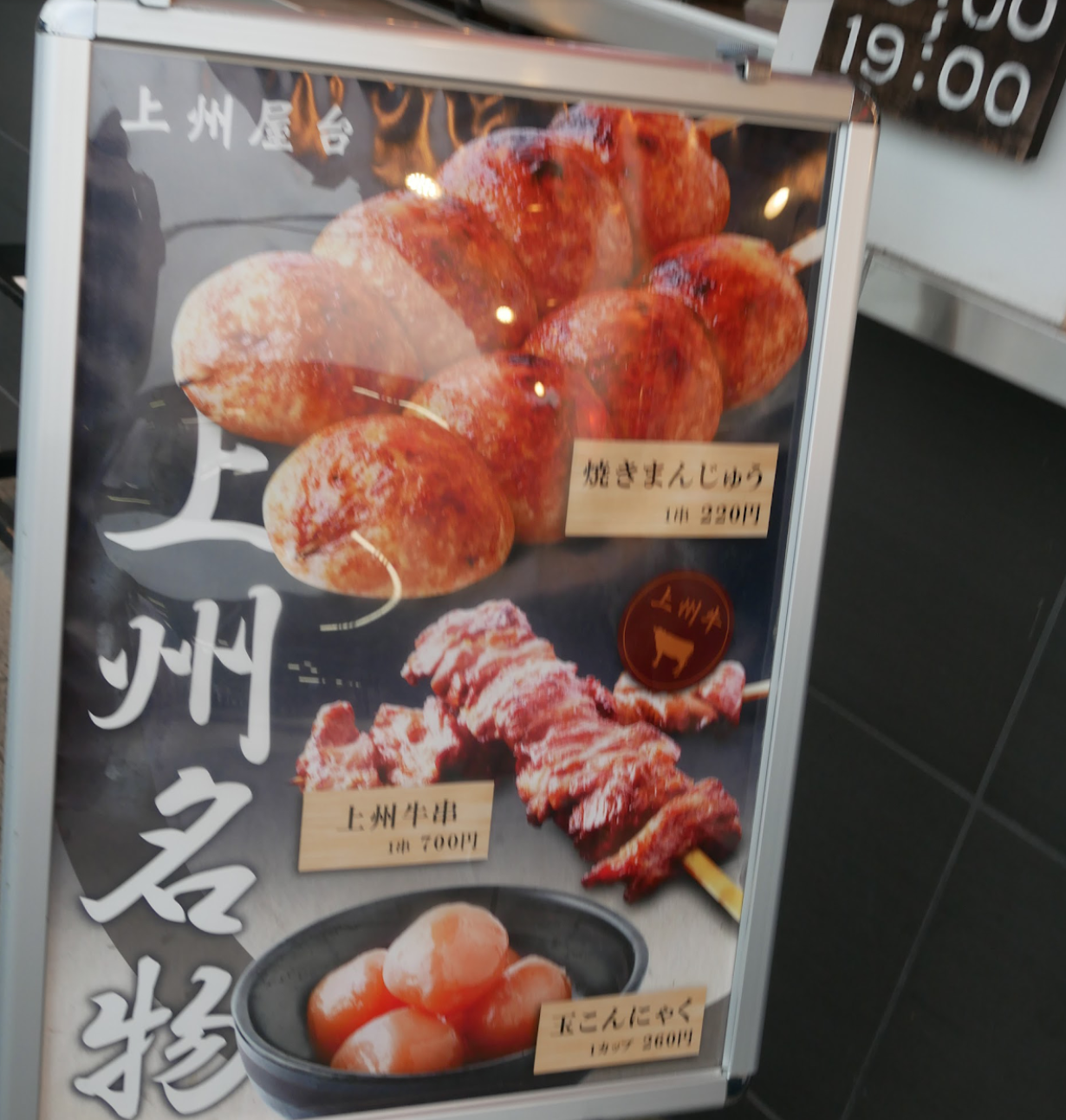
Chikumagawa SA, going upwards
Famous for its grilled steamed buns, joshu beef, and onion konjac jelly.
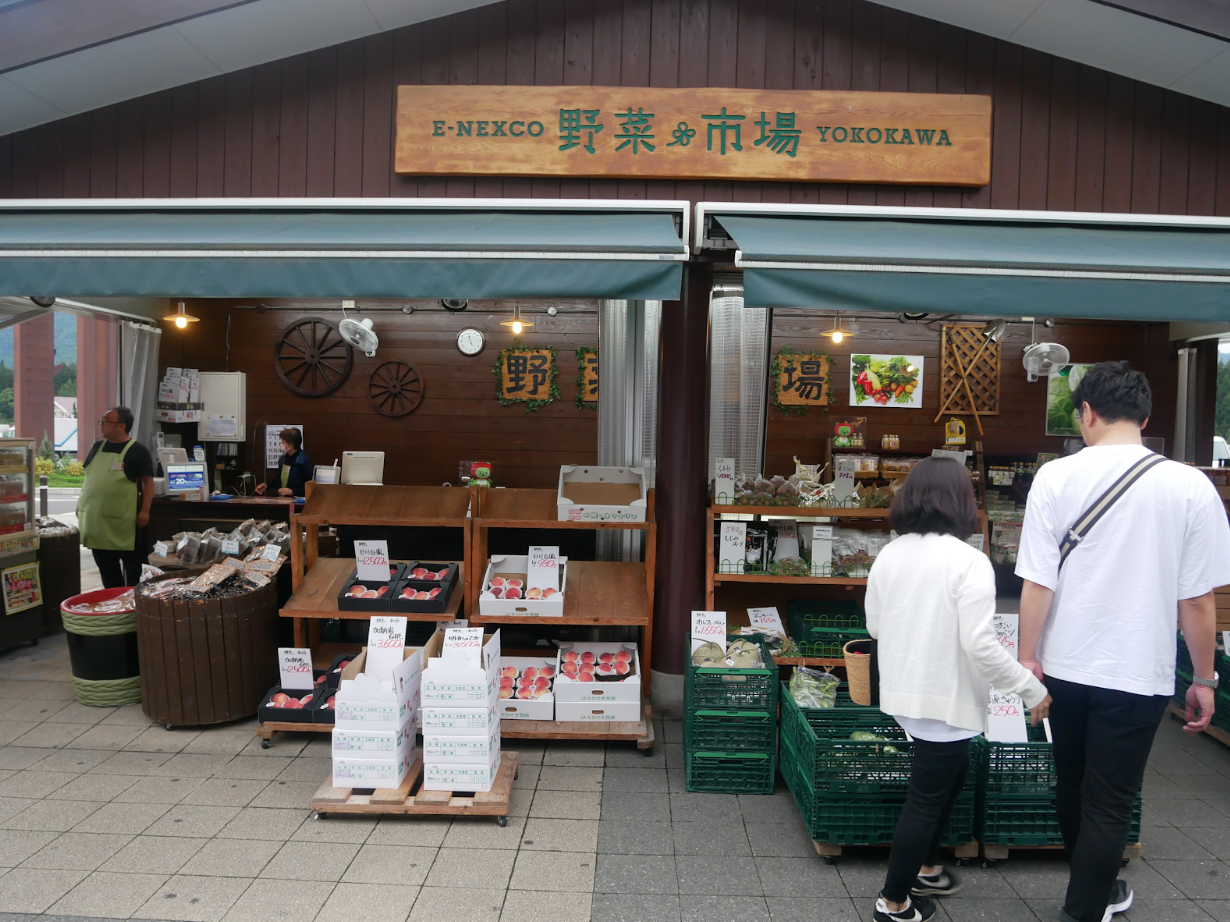
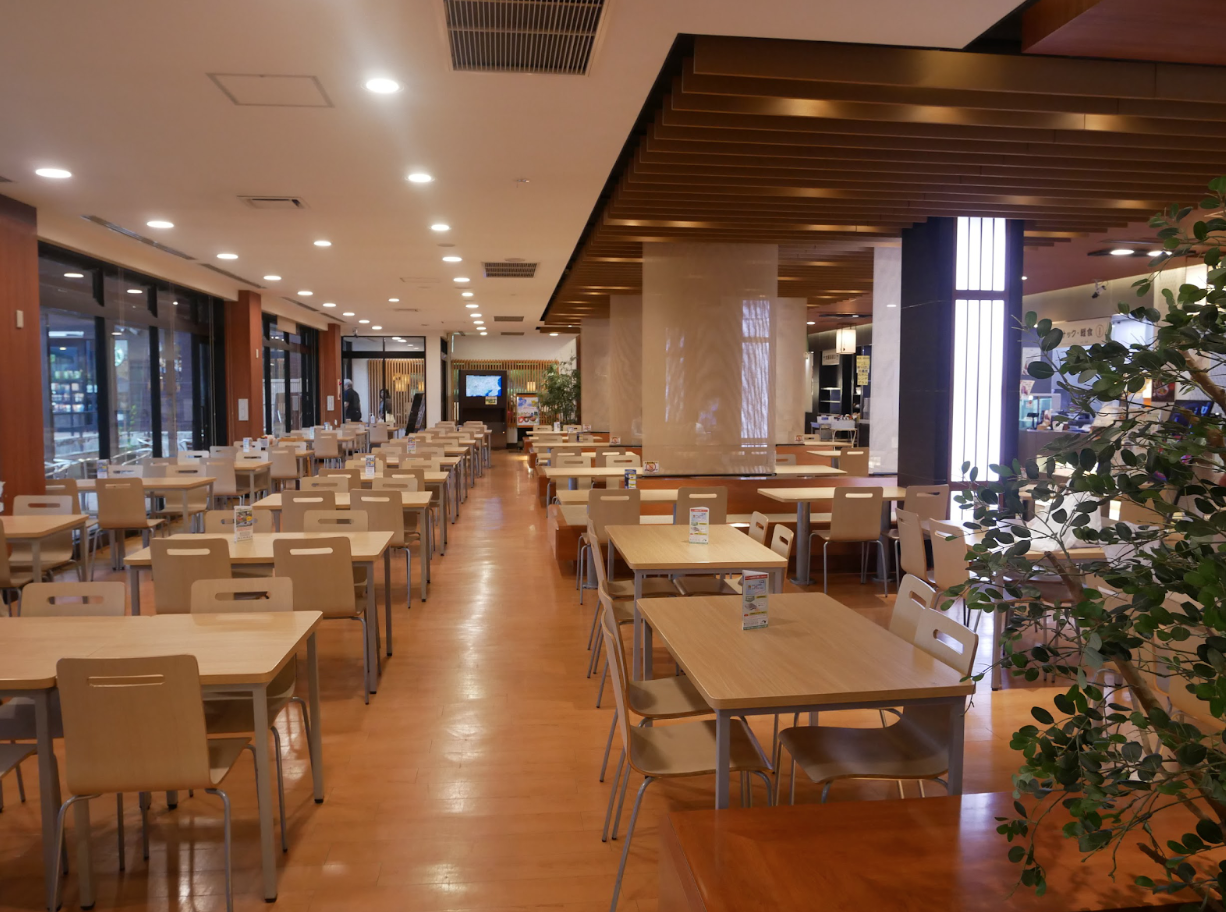
Yokogawa SA, going upwards (P1000910.JPG)
There is a lot of space to hang around in the shop. They said it gets very crowded during summer vacation, the bon festival days and winter vacation.
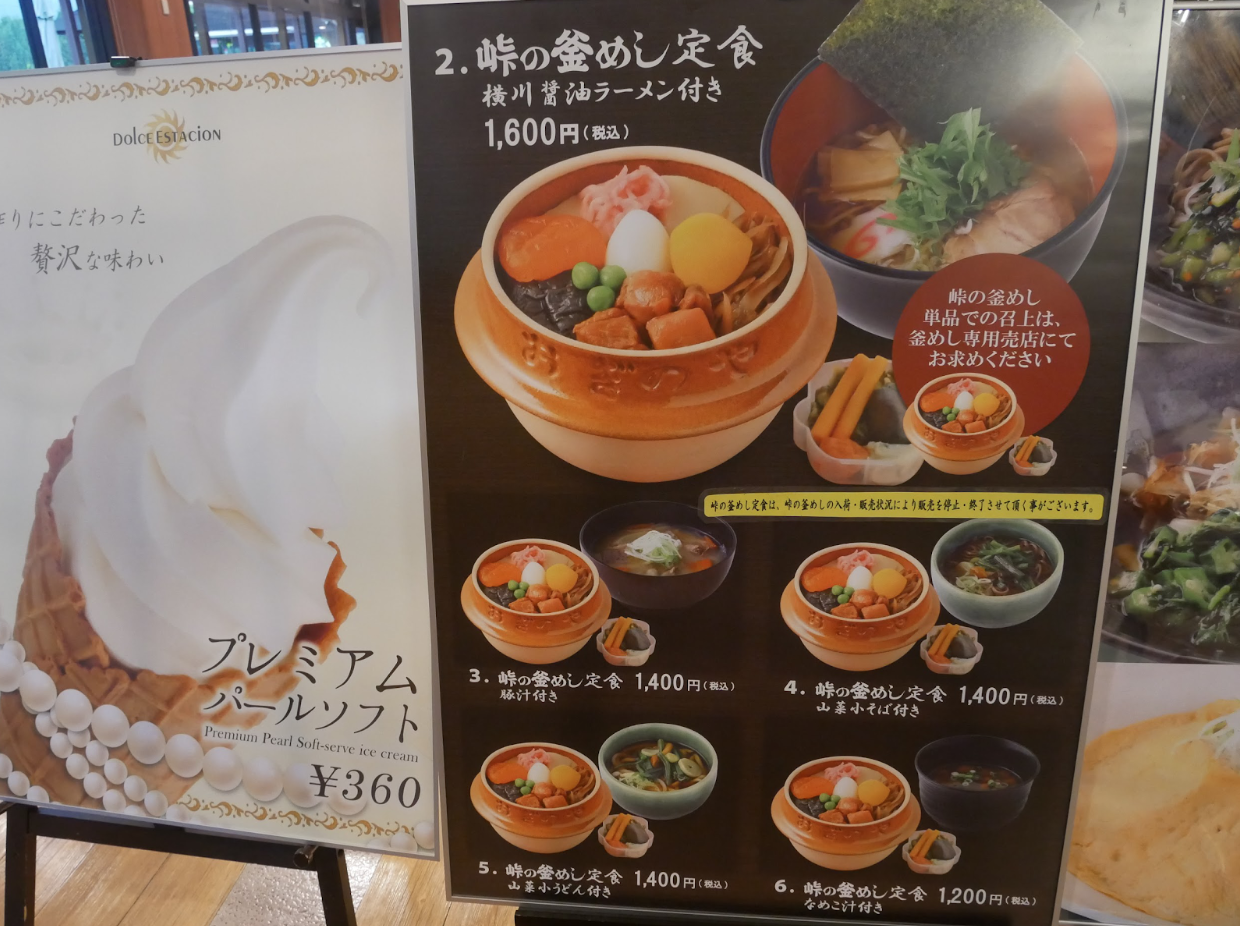
Yokogawa SA, going upwards
Here you can eat the famous Kamameshi. Packed with vegetables, this rice served in an iron pot looked really delicious.
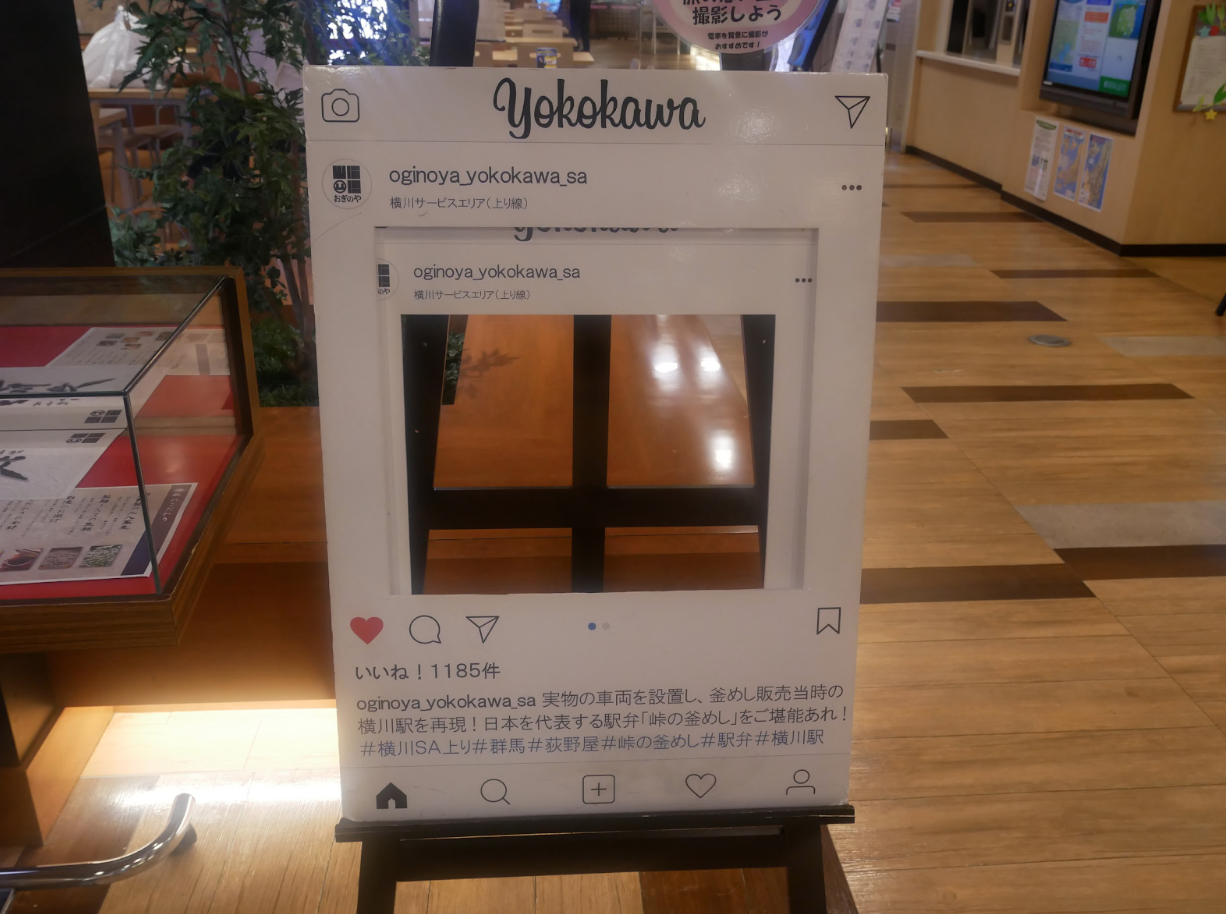
Yokogawa SA, going upwards
There is an Instagram panel, too!
Dangozaka SA (on the Chuo Expressway) and Ashigara SA (on the Tomei Expressway) are both big and famous service areas. Even though I could not visit it this time, Ebina SA is a service area I recommend you to stop at, if you happen to be around there. If you are driving on the Tomei Expressway it would be a good idea to visit Ashigara SA, as it has a lot to offer in terms of entertainment. Even though the service area is very large and has a big parking lot, keep in mind that during summer and winter vacation it is going to be very crowded and finding a place to stop might be hard.
Regional food: different kinds of Soba in every area of the prefecture
If one thinks of Nagano Prefecture and its local cuisine, the first dish that comes to mind is certainly “Shinshu soba”. The word “Shinshu” comes from the fusion of “Shinano No Kuni”, an old province of Japan that corresponded to nowadays Nagano Prefecture, and “Shu”, the character for state in Japanese. The name of this old province is said to originate from Shinano, the Japanese word for the Linden Tree, which grows abundantly in Nagano Prefecture.
Still, even though the idea of a one of a kind Shinshu soba sounds interesting, the truth is that within Nagano Prefecture alone there are many different kinds of soba and many different ways to consume them. Among them we can find Togakushi soba, one of the three biggest soba producers in Japan, Sarashina soba, produced only using the core of the buckwheat grains, Dattan soba, with its refreshing, slightly better taste, and many others, like Kirishita, Sunki, Toji and Gyoja soba. The nicest thing about Shinshu soba is indeed the possibility of trying them out in many of its different versions.
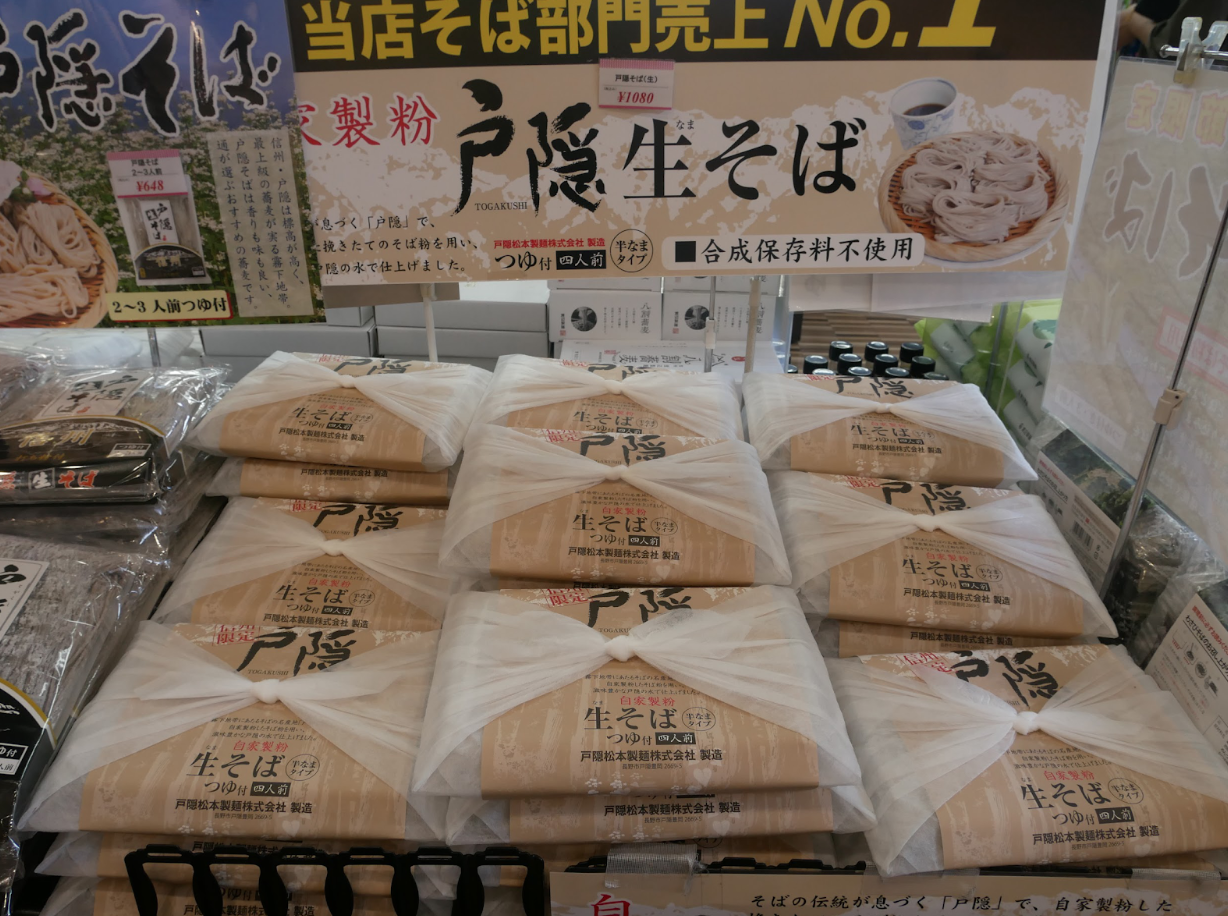
By the way, among the many soba restaurants I visited, there was one just a few minutes drive from our hotel, called Isshotei. Its distinctive trait is the building it is located in, a quaint old fashioned residence with a slowly turning water wheel. The shop mainly serves limited quantities of freshly made Sarashina soba.
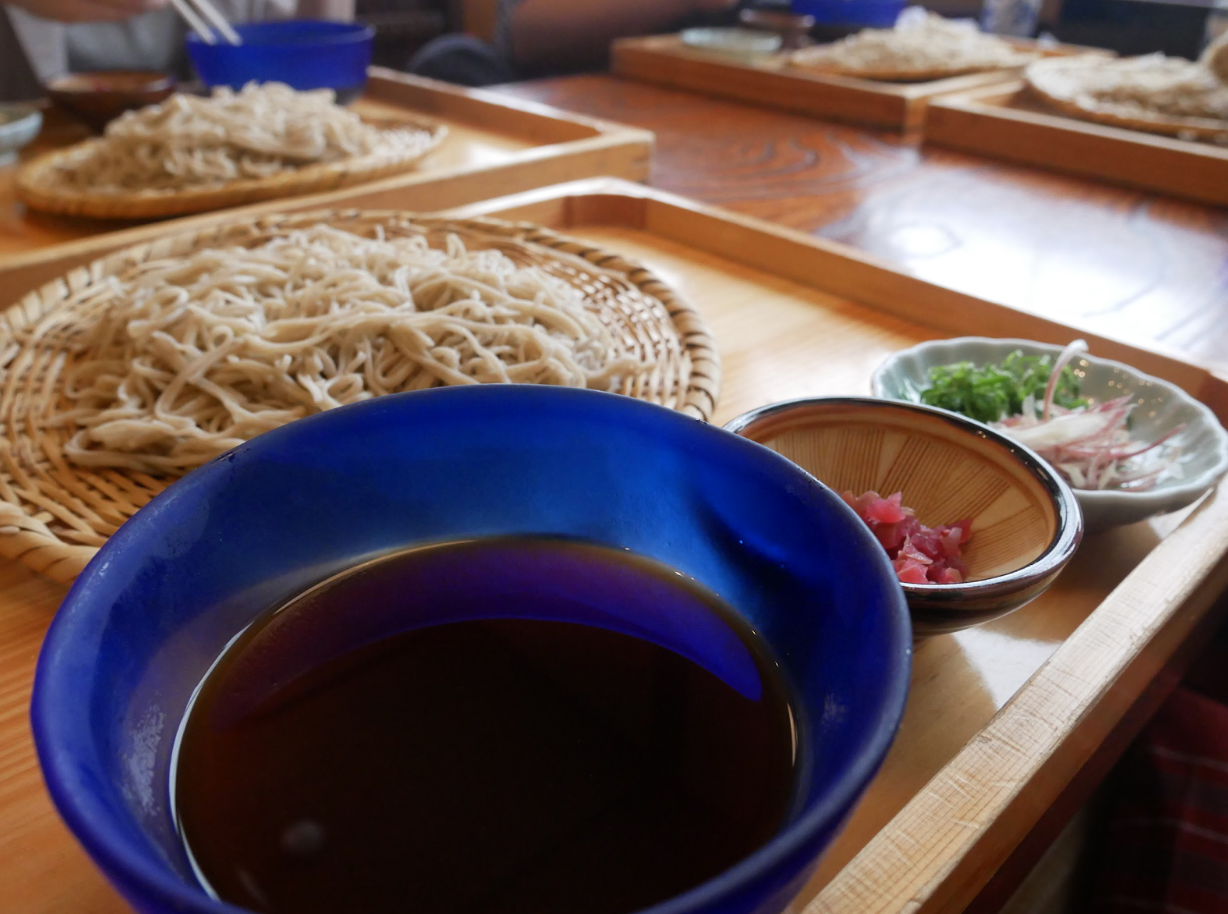
Our pick at Isshotei was the seasonal Umedare soba, served with a special Japanese plum sauce. Aside from Sarashina soba, the restaurant serves Gori soba, a Shinshu specialty. If you happen to visit Isshotei, do not forget to give it a try!
Local cuisine is always imbued both with the history and background of the areas it stems from, and with the wisdom of the people living there. It is defined by the local living environment, its temperature and its climate. I really think that eating local food is a chance to learn about the actual background of the areas one visits and to develop a better understanding of Japan's culture.
Families and regular customers came to the store one after the other. Even though I did not know what they were talking about, listening to the waiter and the customers chatting and laughing together left me with a pleasant feeling of warmth. I really felt like I could get in touch with the local atmosphere.
After dinner, the first day of our road trip comes to an end.
We would not have visited Nagano if we did not meet him.
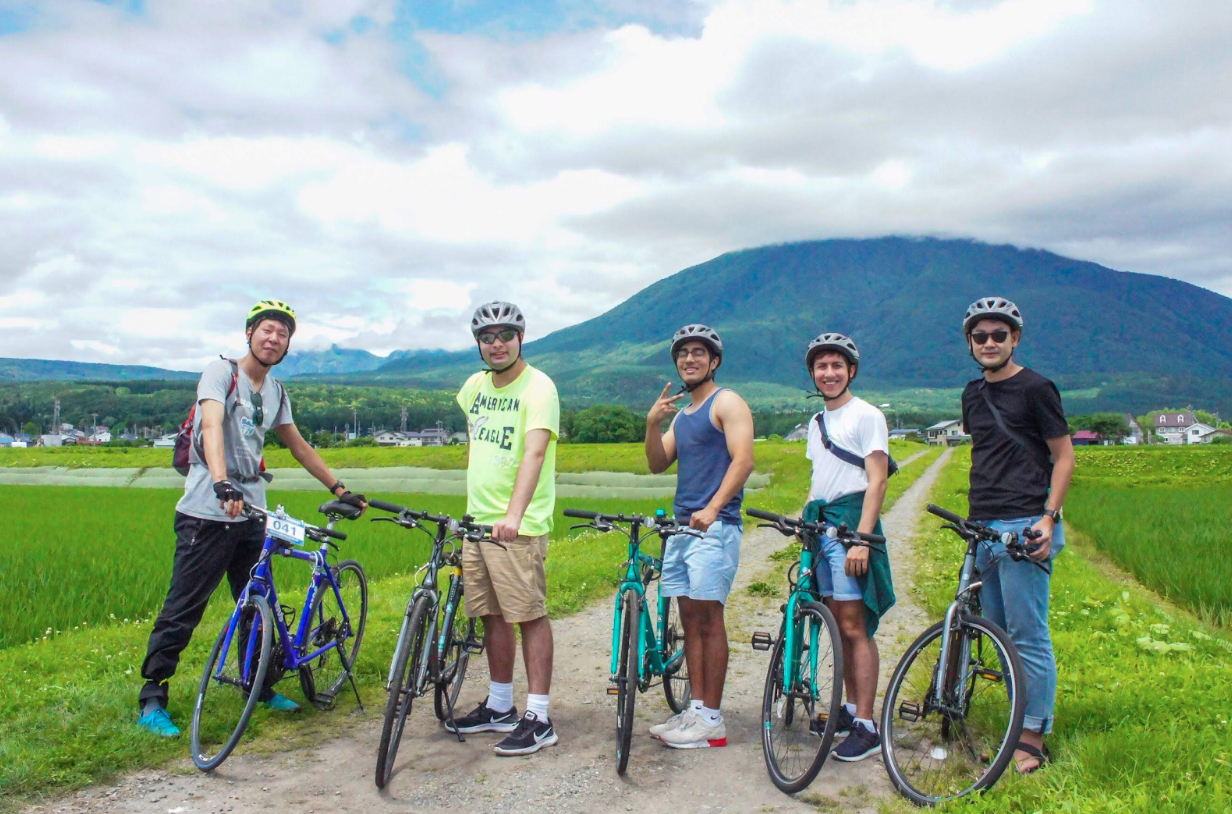
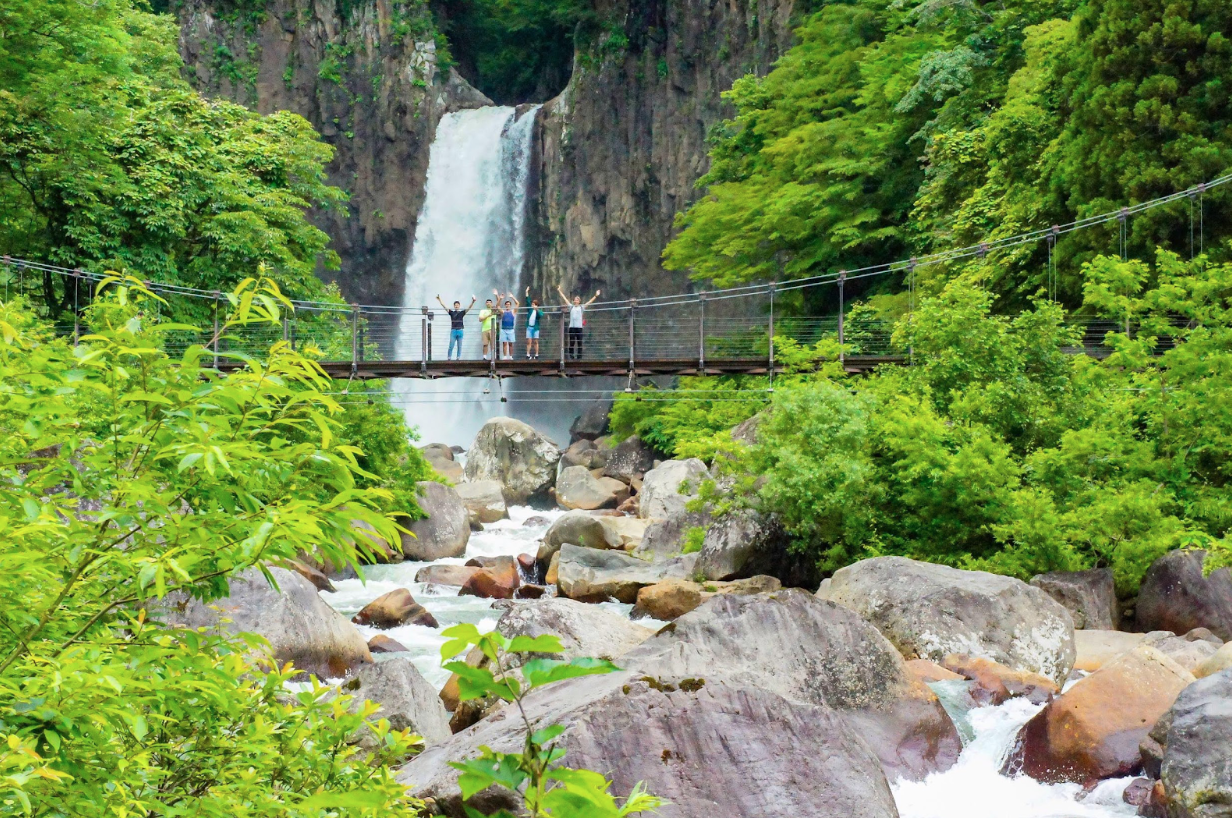
After leaving the hotel we went to Kurohime Station. The main reason why we decided to visit Nagano was our meeting with Mr. Nishida, a tour guide working in Nagano Prefecture. He introduces foreign visitors to Japan and Nagano through activities like hiking and cycling. In spite of being born and raised in Tokyo, he loves outdoor activities (snowboarding, hiking, camping etc.) and moved to Nagano four years ago, moved by his desire to live in a place surrounded by luxuriant nature.
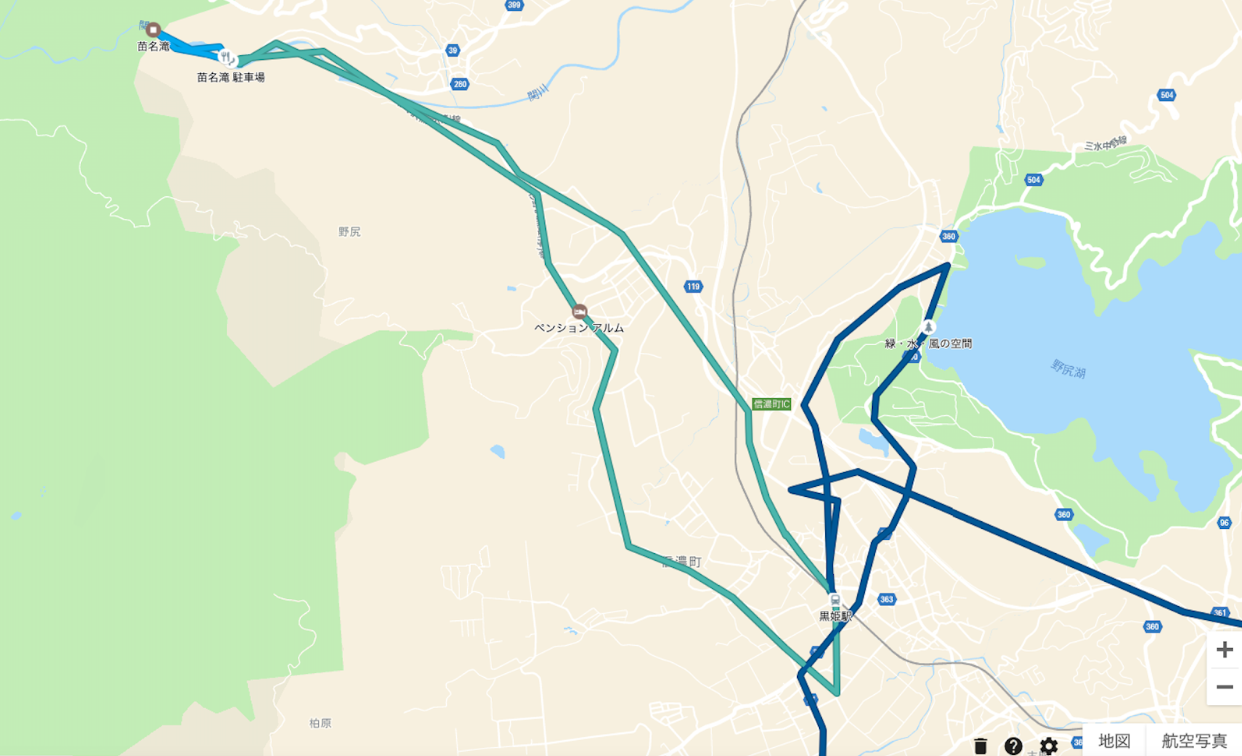
We then left from Kurohime Station and cycled towards Cascade Naena, also visiting Nojiri Lake on our way back to the station. Luckily, the weather was cool and restoring, and the view of the road surrounded by mountains was really wonderful. Riding through the breeze down the hill was a lot of fun, and getting off the bike and taking a walk through the woods was very enjoyable, too. Walking to the waterfall, touring around the lake… we really enjoyed Nagano's fantastic nature.
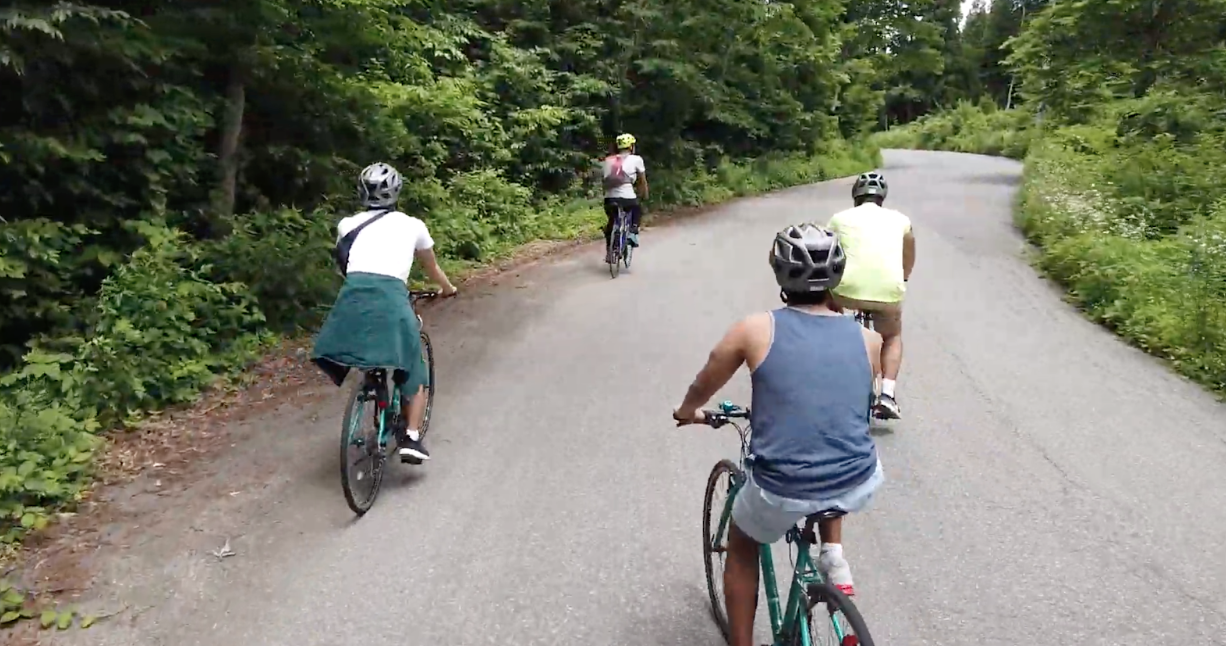
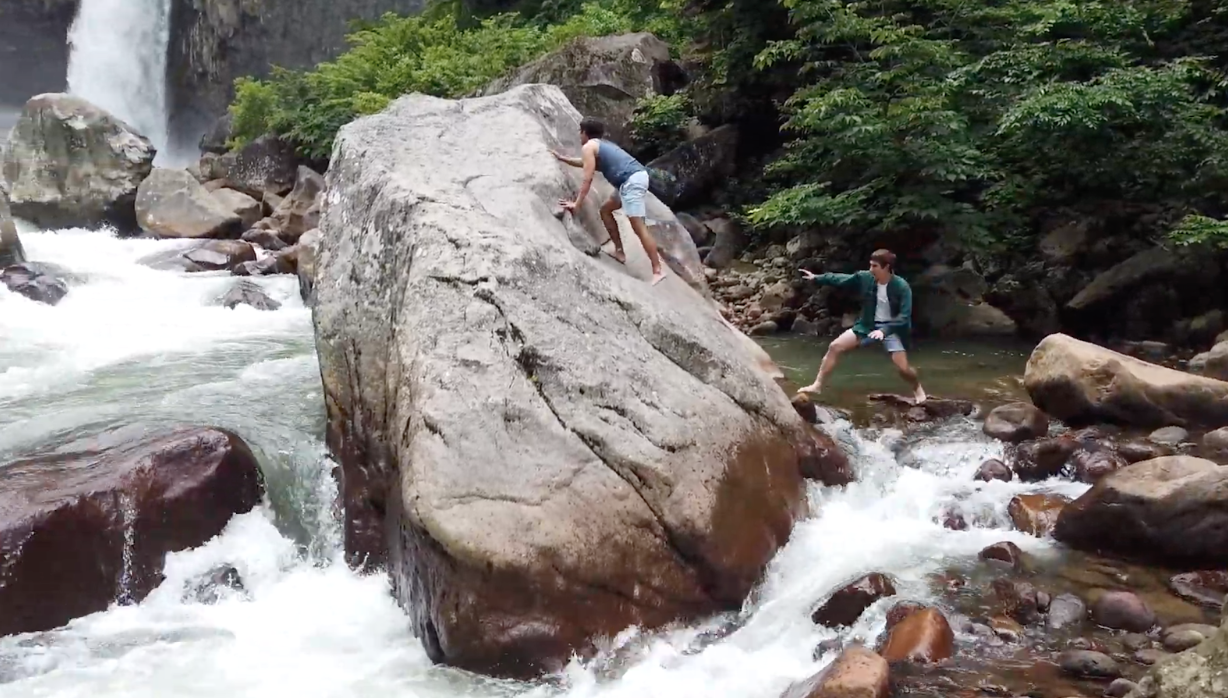
We got to experience how cold the water near the waterfall and in the river can be, and raced each other on the wide roads that opened in front of us.
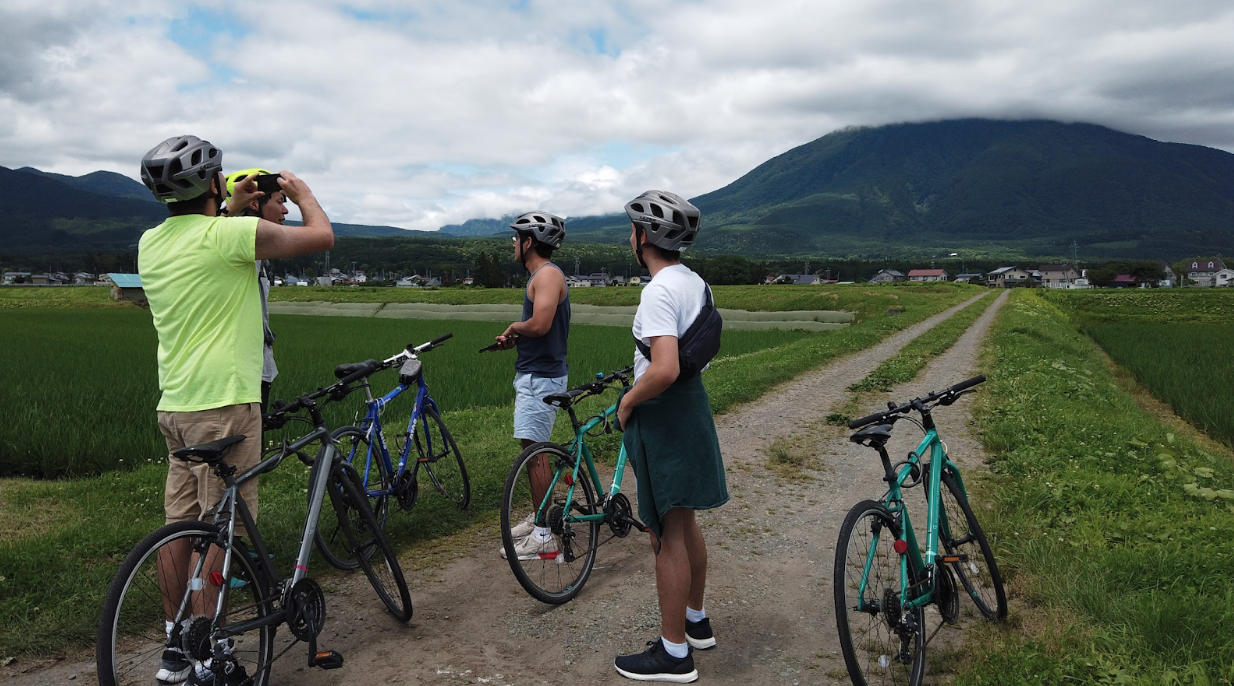
It had been a while since I last did things like climbing over rocks or crossing a river walking from stone to stone. Being able to experience nature actively, with our body, instead of just looking at it from far away was really nice. It is only thanks to Mr. Nishida and his knowledge of the area that we could have a good time comfortably playing around waterfalls and rivers. Had we been alone, we would have probably only given a look at the panorama from far away, taken our pictures, felt good about it and moved to the next destination.
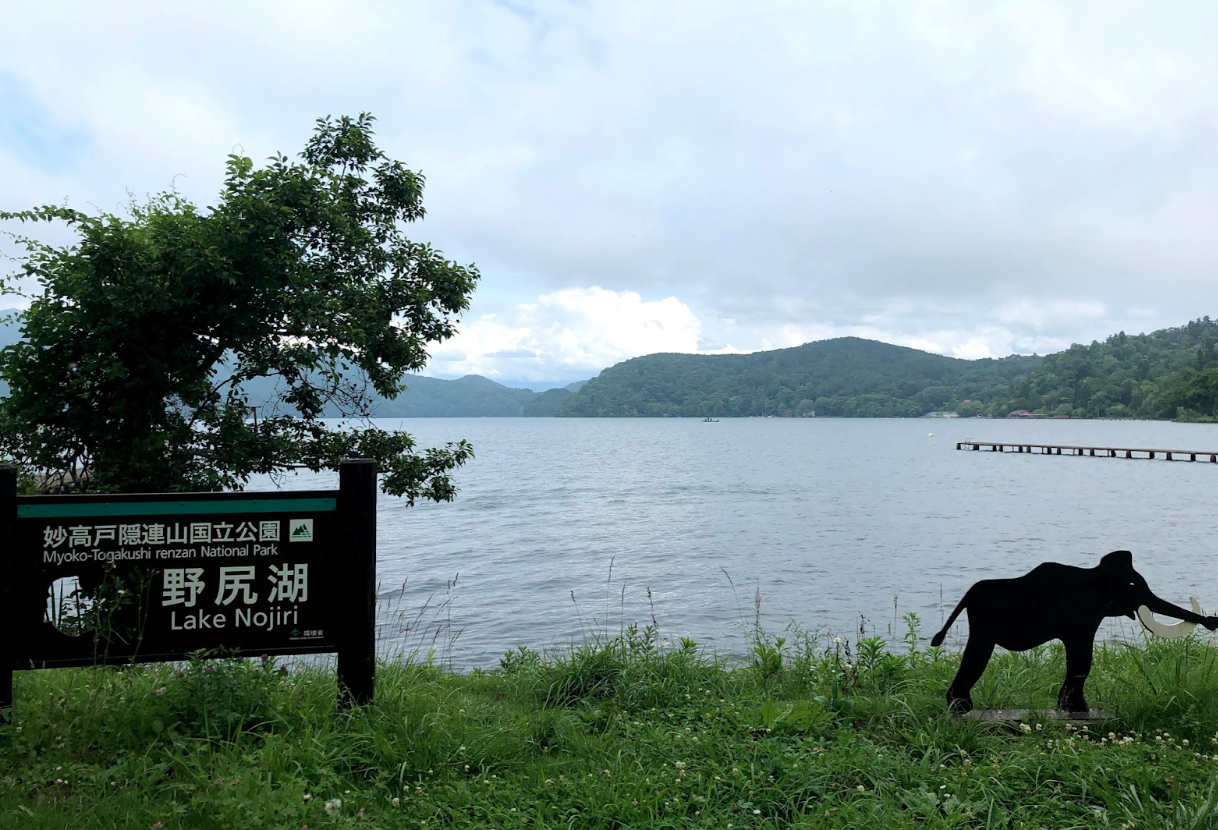
Without him, we would not have visited Nagano, we would not have gotten to know it, and we most likely would have gone back to our countries without even knowing it existed!
It’s a Cycling tour around north Nagano's Satoyama landscape and the Myoko Togakushi Renzan Natio...
During the warring states period (15th and 16th centuries), the warlords Oda Nobunaga and Uesugi ...
Encounters and experiences at Zenkoji
"As far as it might ever be, visit Zenkoji once in a lifetime" is a popular saying that has been repeated since the Edo period. It is believed since ancient times that one visit to Zenkoji will guarantee you to be reborn in paradise.
The Zenkoji Temple, located about 2 km (about a 30-minute walk) from the JR Nagano Station, is a non-denominational temple that does not belong to any particular sect. Indiscriminately open to all kinds of people, it has been a place of gathering for believers for a very long time.
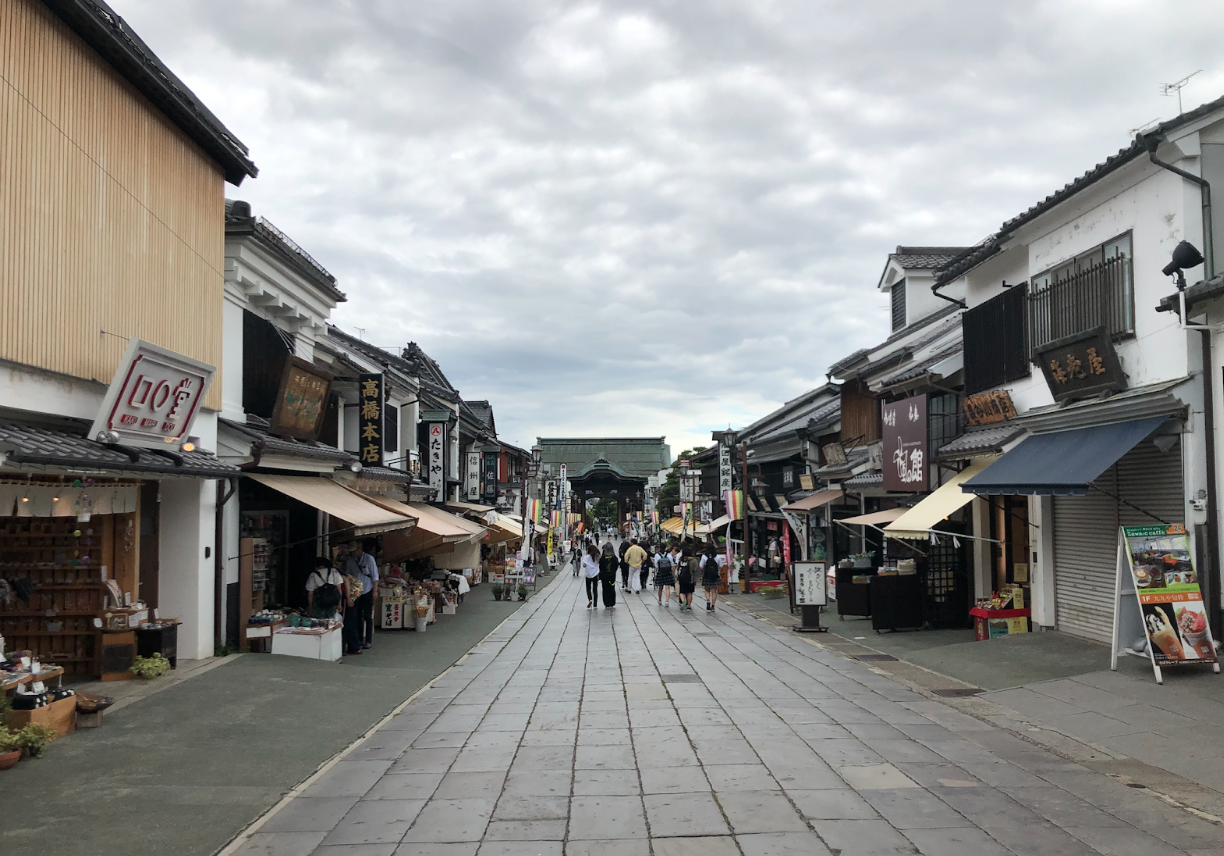
What makes visiting the Zenkoji Temple unique is an experience called Kaidan Meguri, a tour through the pitch black corridors of the temple that run below its main hall. Once you descend down the stairs it will be too dark to see anything, and in order to get out of this blanket of darkness, you will need to follow the right wall using your hands. The aim of this experience is to get to touch the so called Key to Paradise, a metal key hanging on the wall, in order to gain enlightenment.
The Key to Paradise is located just below the Ruridan, the podium where the Amida Nyorai statue is installed. The Kaidanmeguri experience, this process of going through a pitch-black passage where nothing is left for the eye to be seen, is really unique to the Zenkoji Temple. Walking through a dark corridor only being able to guide each other with simple commands like “Turn right!” or “Stop for a moment!” was a really exciting experience.
In addition, there are several “power spots” within the temple grounds where people tend to gather. In the main hall there is a Nadebotoke statue that is said to heal the ailments of anyone who caresses it, and its face has become smooth as silk because of the enormous amount of strokes it received. There is a large incense burner outside the main hall, and they say that if you let the smoke of the burning incense flow onto your body, you will be granted a sound health.
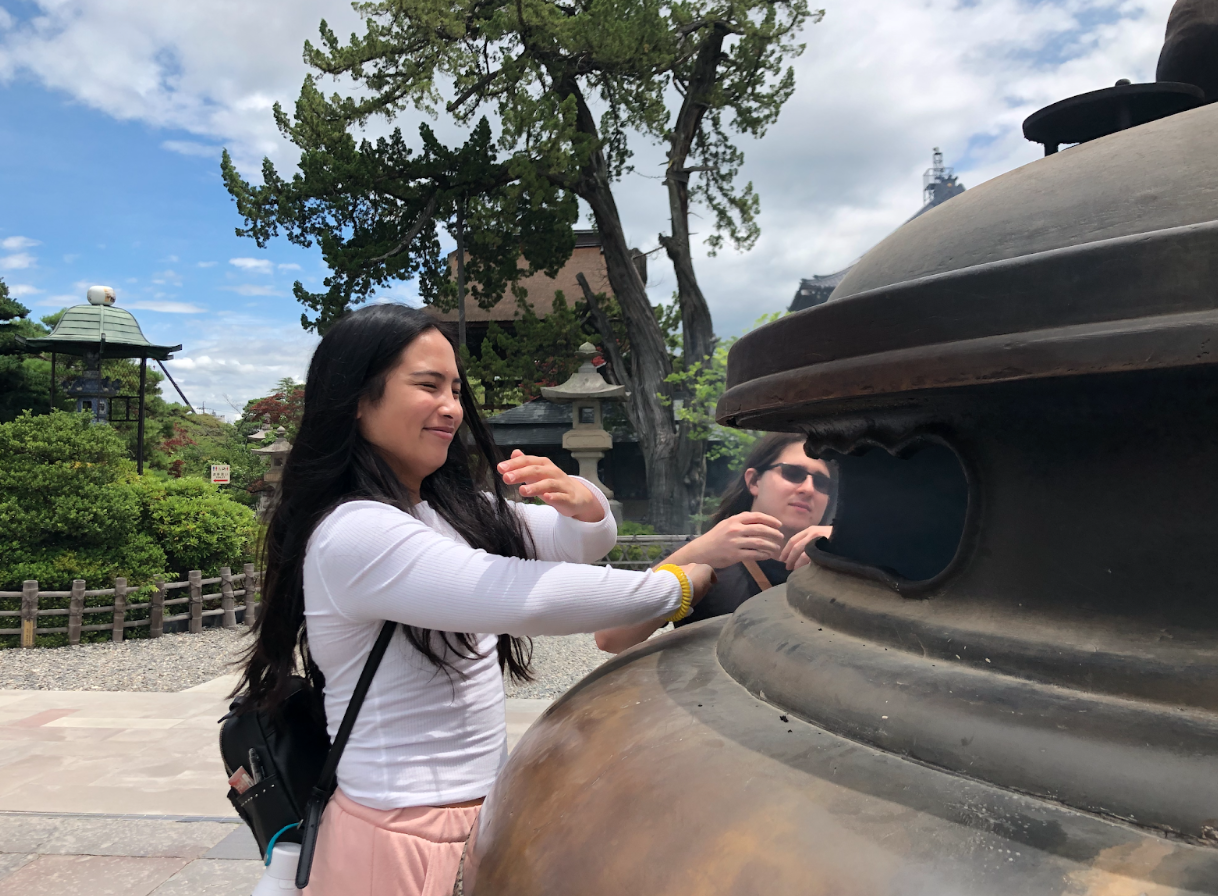
It is then time to visit the gorgeous inner shrine. There are Bodhisattvas on both sides of the inner sanctum, and each one of them is said to represent the present and the future. Each and every building, pattern, and god has its own meaning. It is indeed a very interesting story.
Being able to understand the meaning of the history behind this temple made it possible for me to have a richer sightseeing experience. Through this visit at the Zenkoji temple I managed to learn more and get a deeper understanding of Japanese history and culture.
Nojiriko Lake is an ancient lake located in Nagano prefecture. In the summer, paddling is popular...
Summary
Nagano Prefecture is the fourth largest prefecture in Japan and because of that it might be difficult to fully enjoy visiting it if you do not have a car. This time, since we had one, we managed to reach farther places that we would have otherwise missed. Driving straight away from Narita, made it possible for me to visit some Japanese service areas and learn about the difference between them and our country's parking areas. Our trip to Nagano, where we could enjoy both its historical sights and its rich nature is going to stay with us as an unforgettable memory. Visiting the area from a local perspective and experiencing it with all of our five senses made for a really wonderful trip. I can only recommend following our steps and visiting Nagano on a road-trip!
Services and tourist spots used in this trip
Budget Rental Car (Narita Airport)
Isshotei (Soba Restaurant)
Reference
List01
List02
List03
List04
List05
Sponsored Links
Unmissable Tours
Expand your horizons by interacting with diversity. Take a look at guided tours on which you can connect personally with the guides and have truly extraordinary experiences.
Search
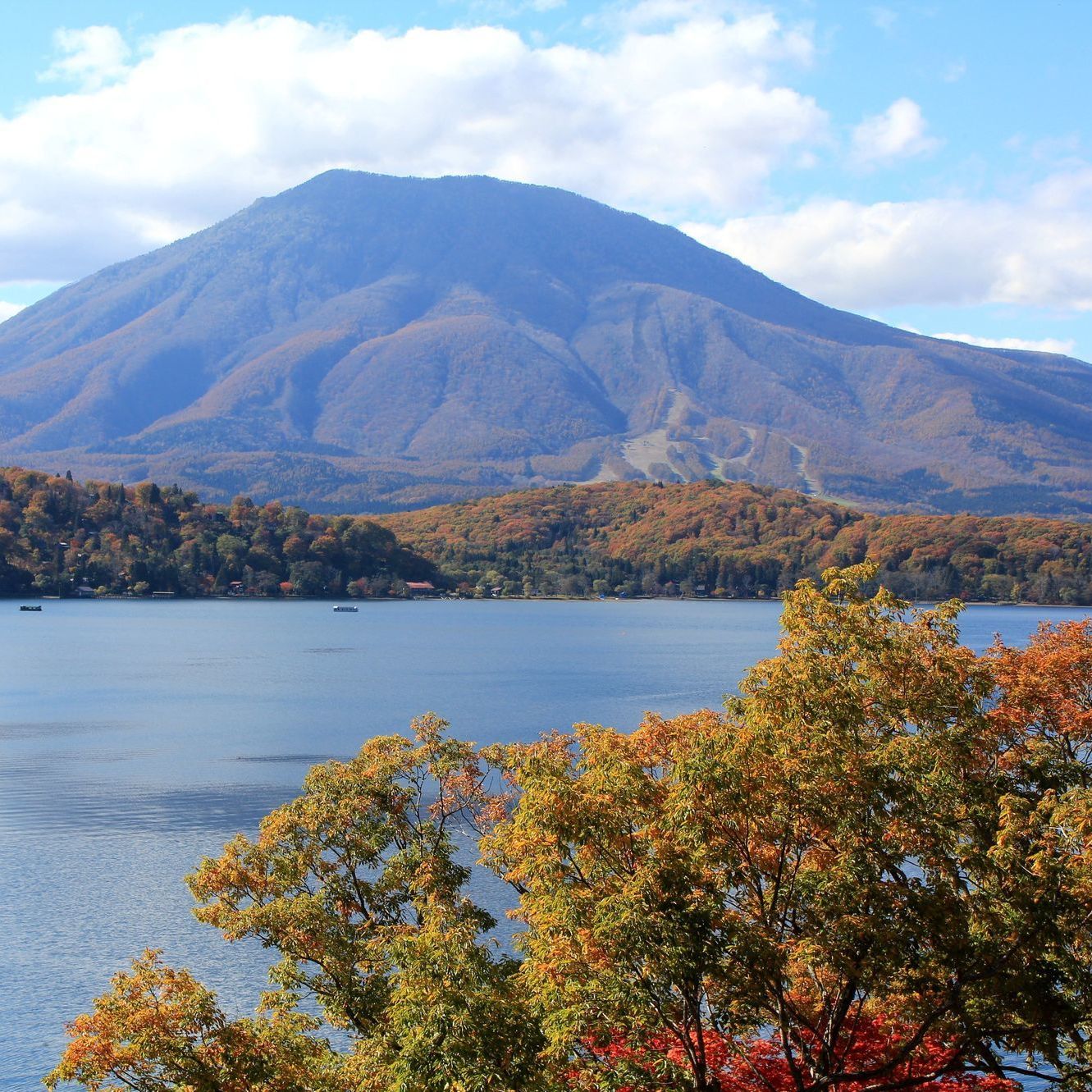
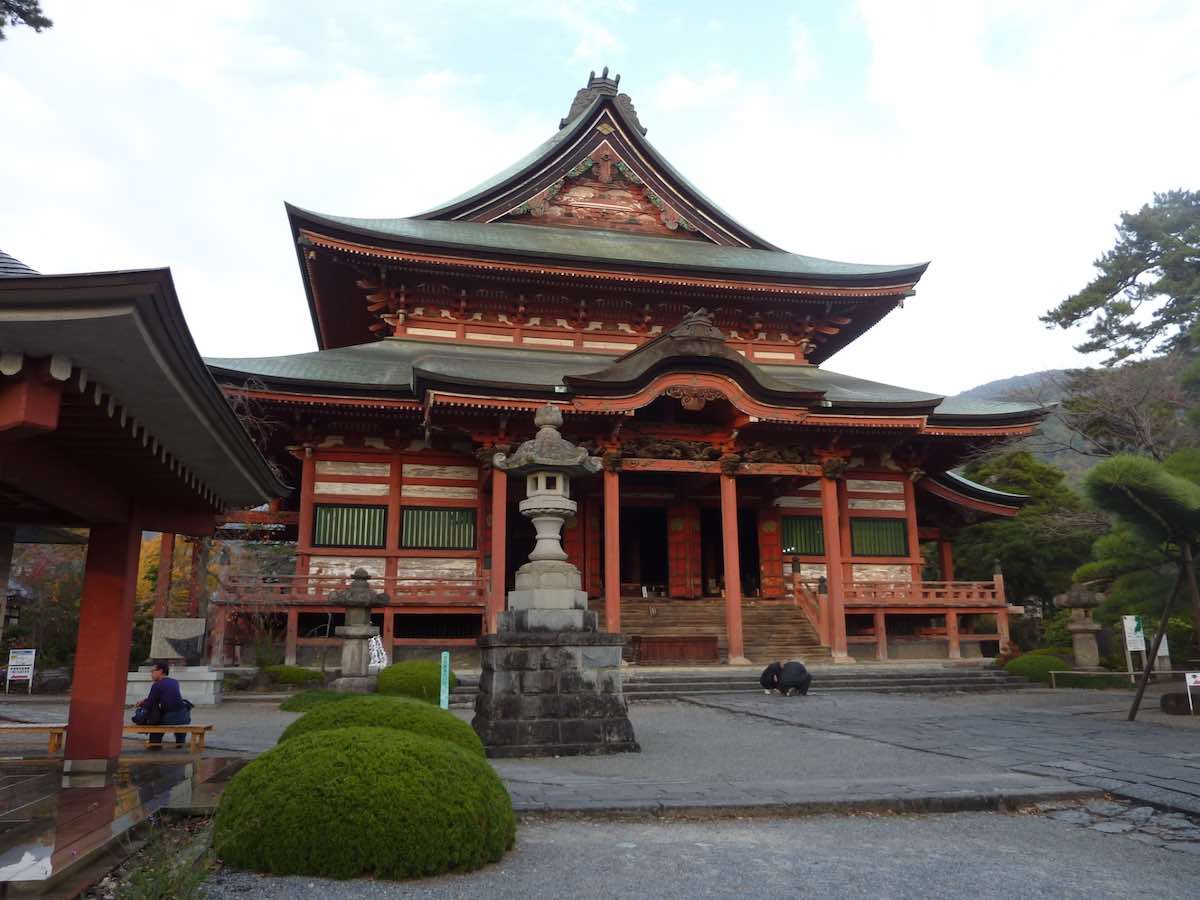
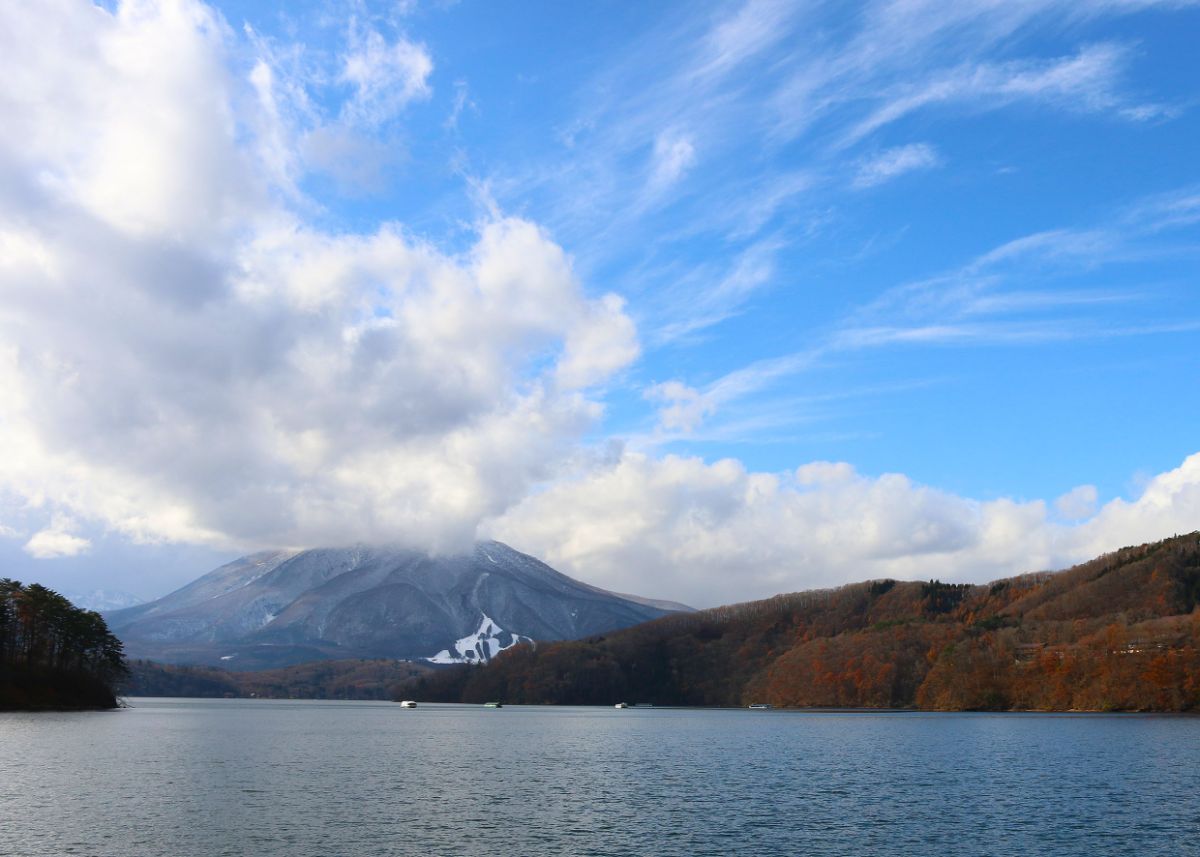
.png?locale=ja)
